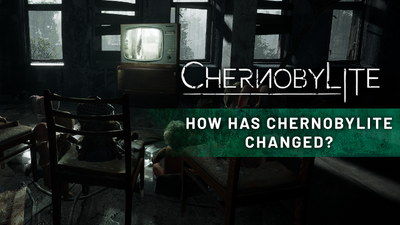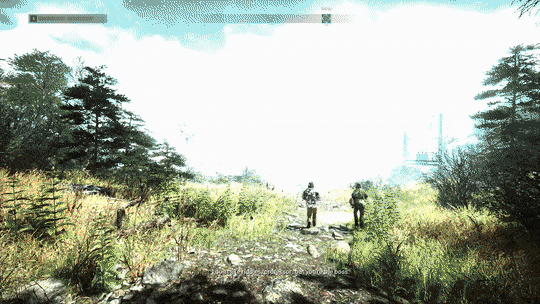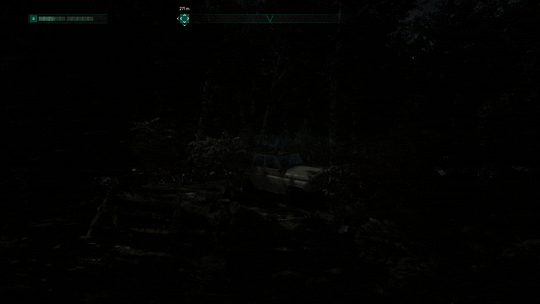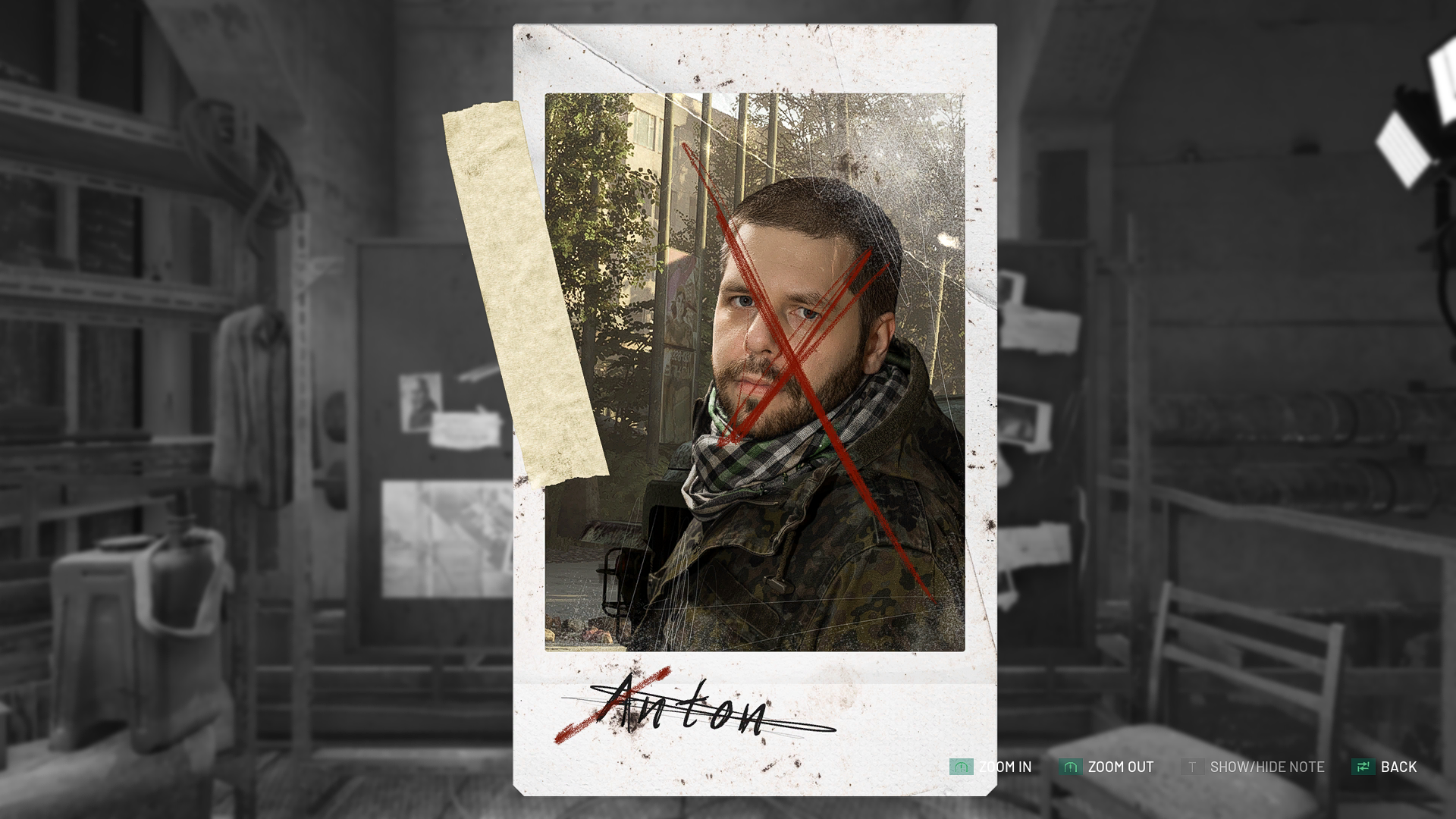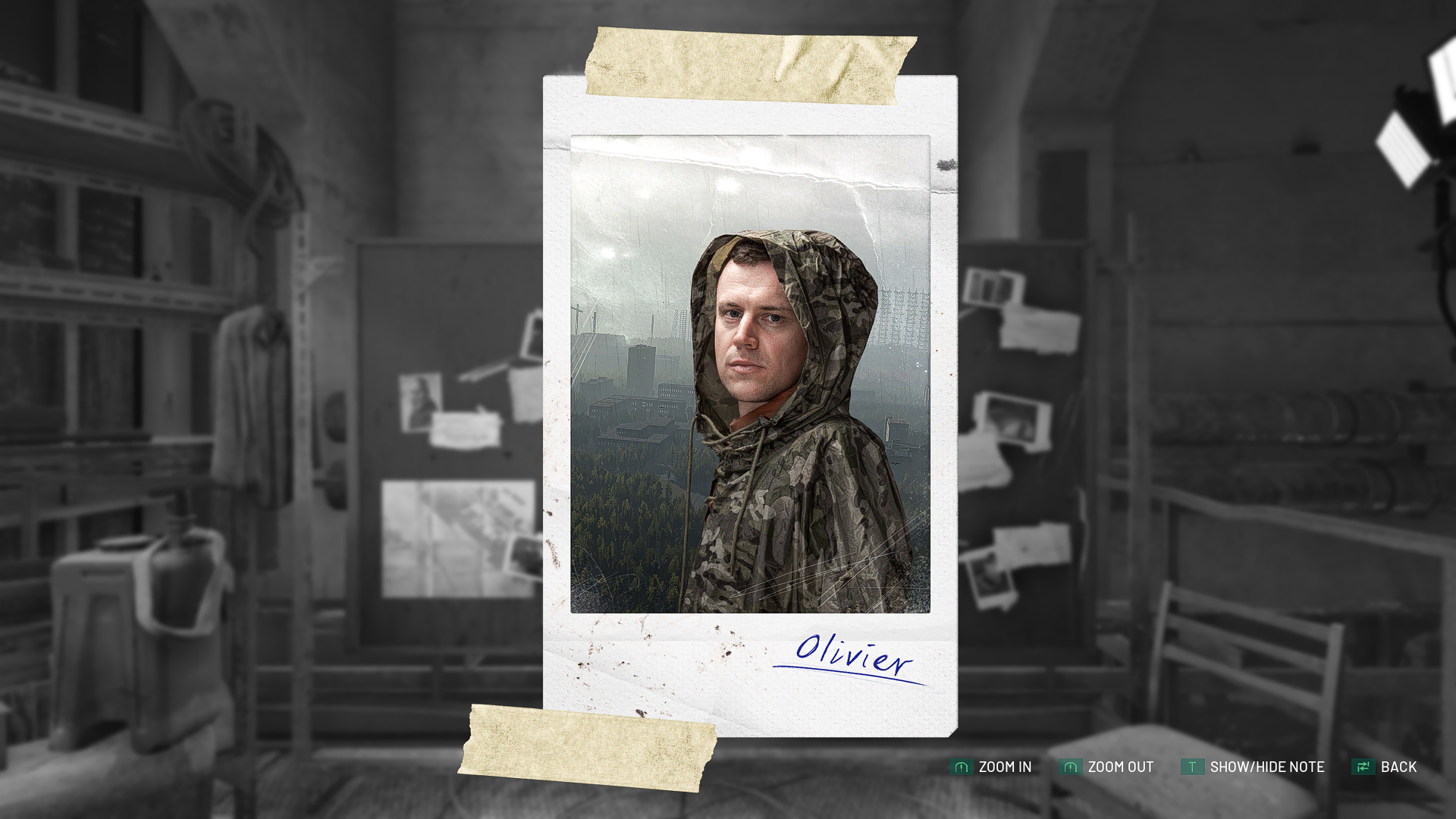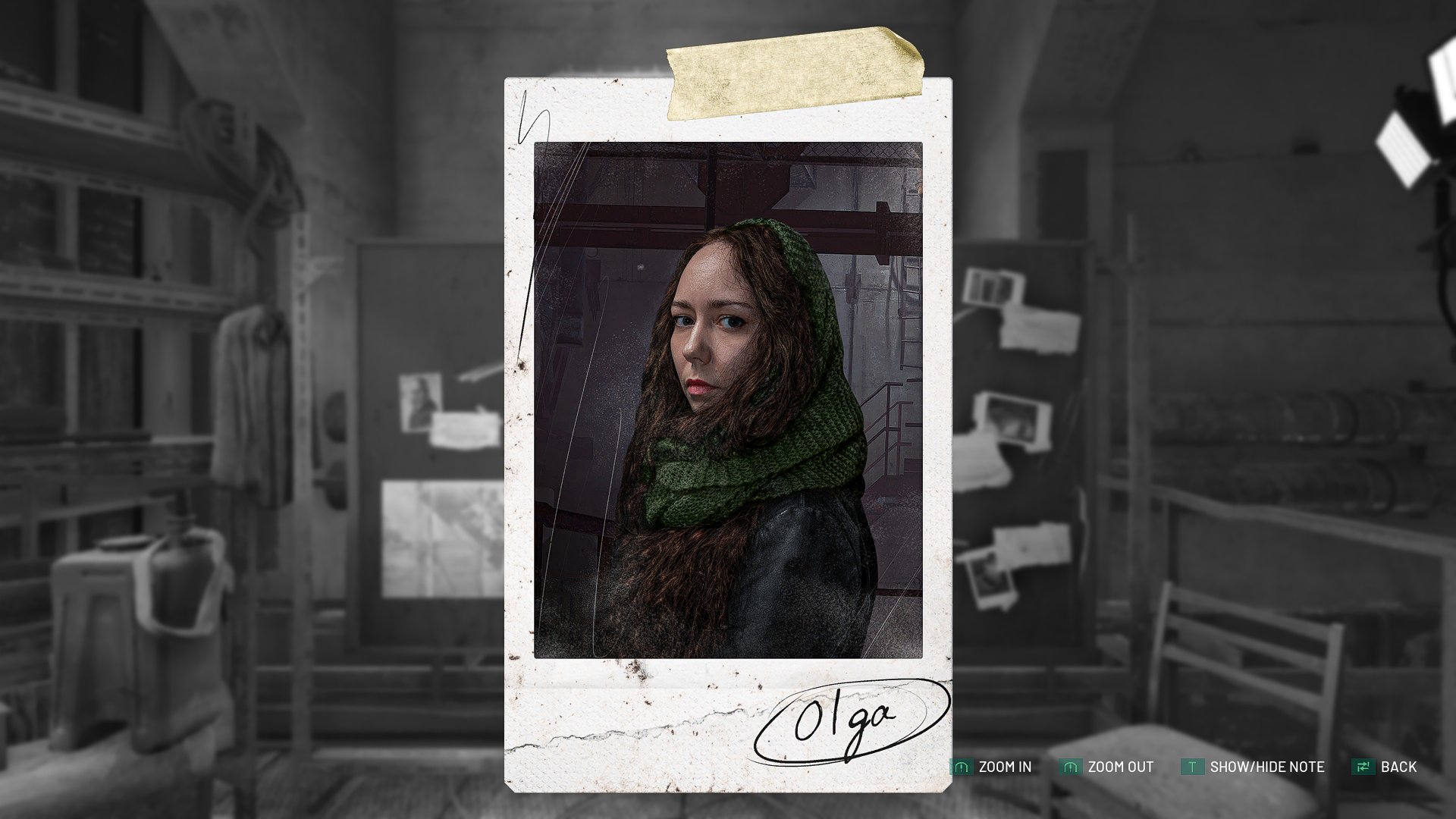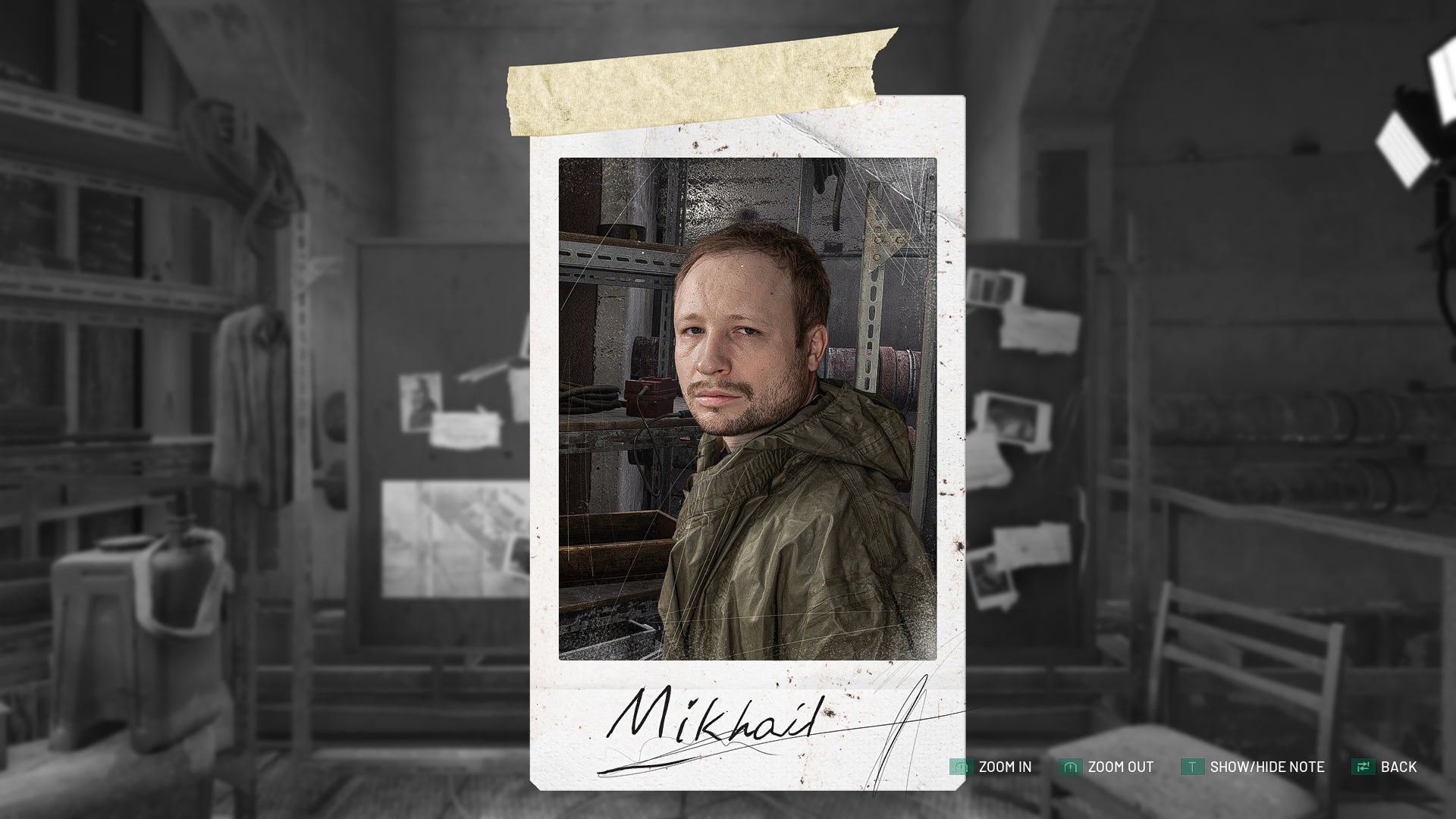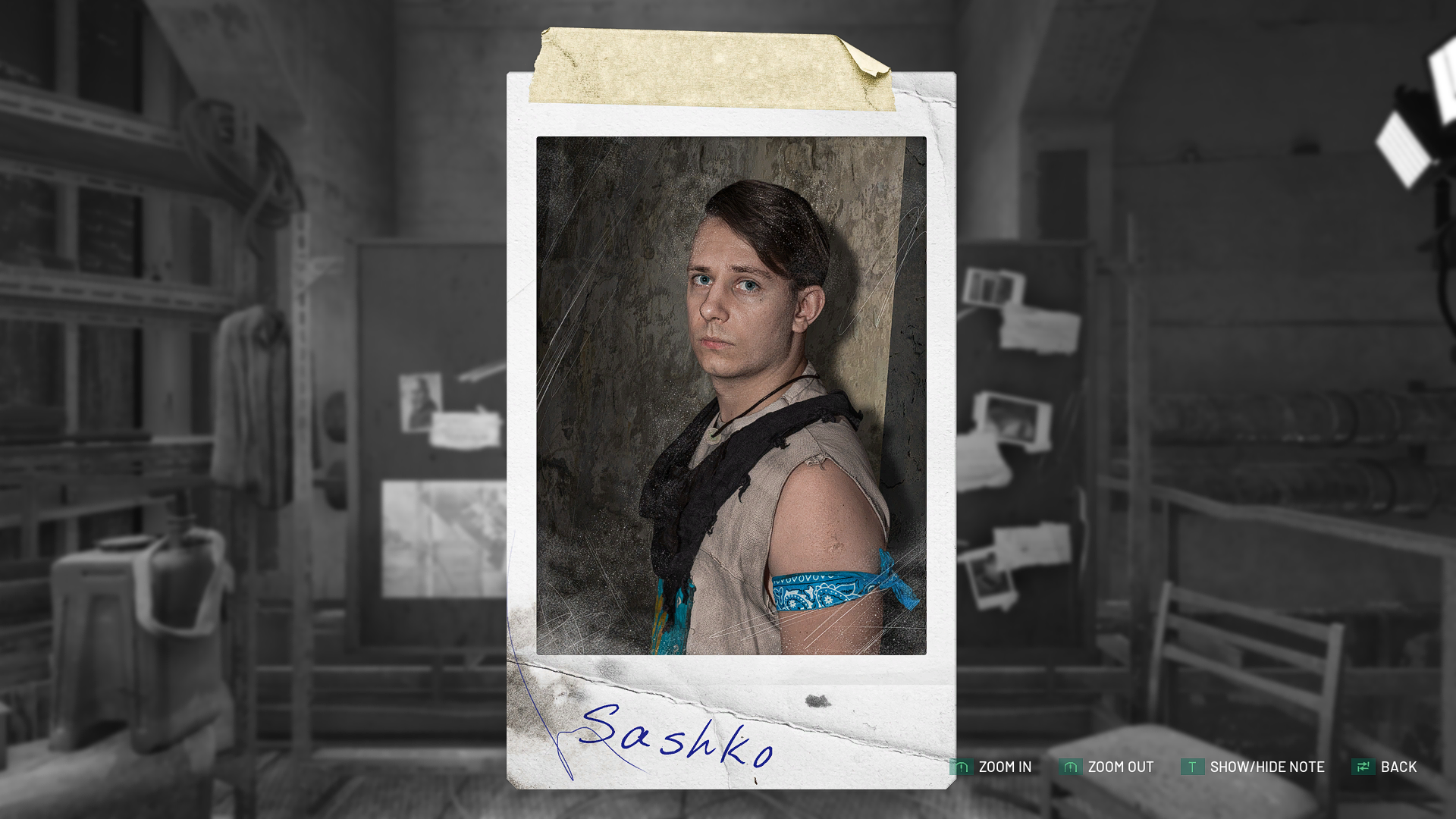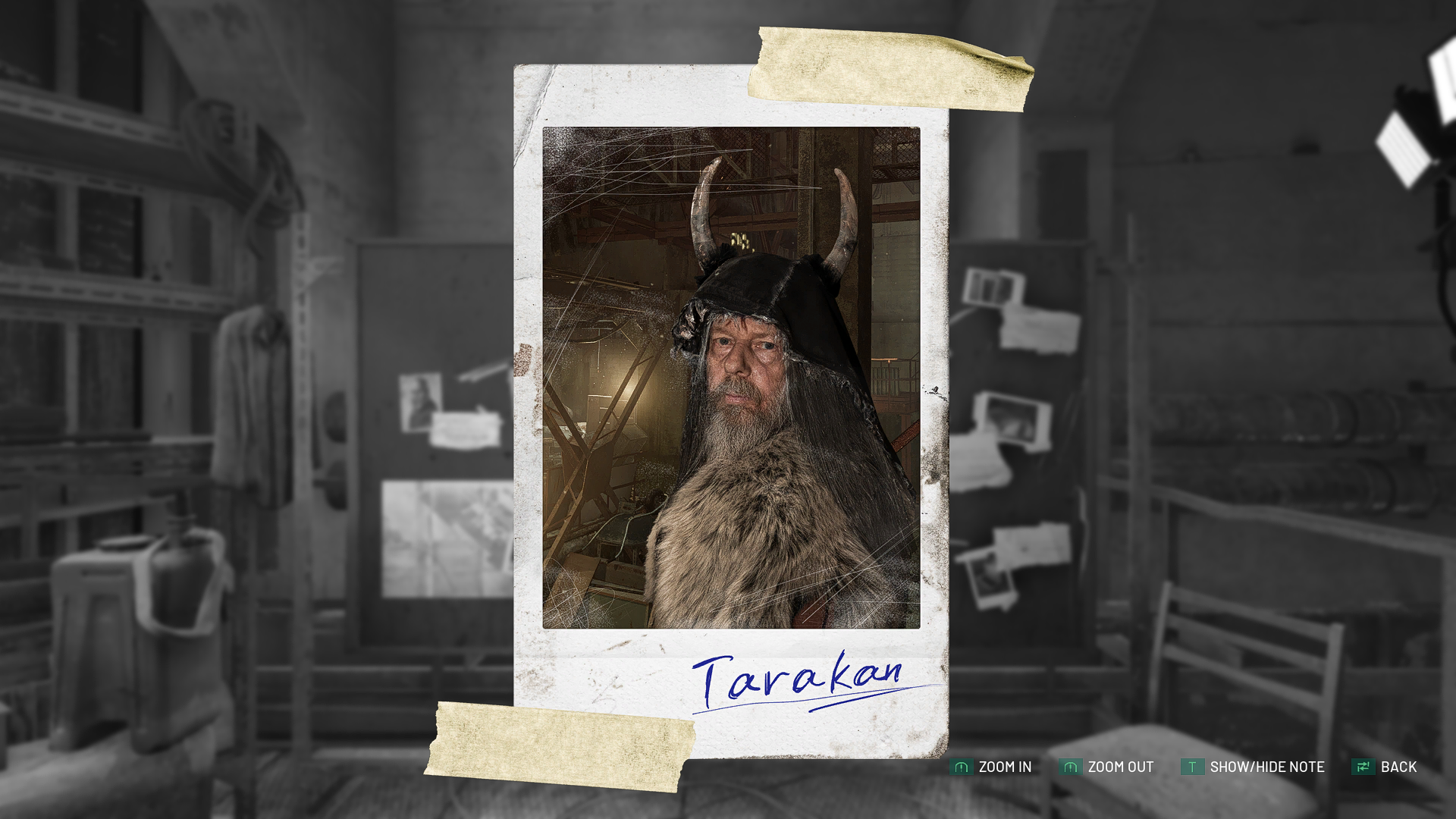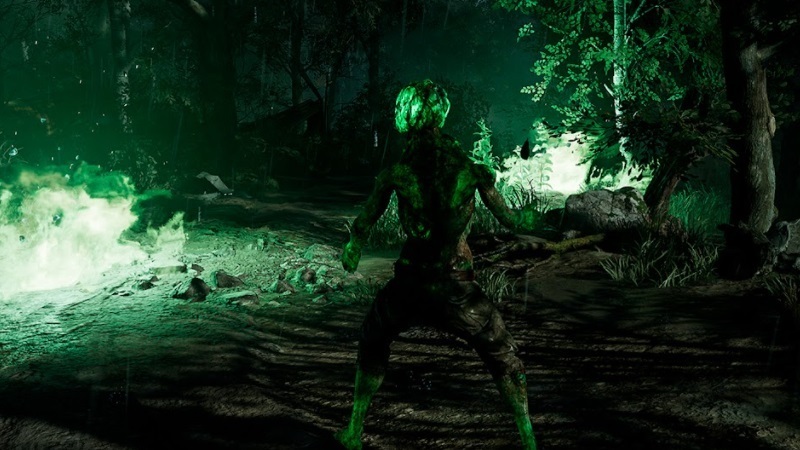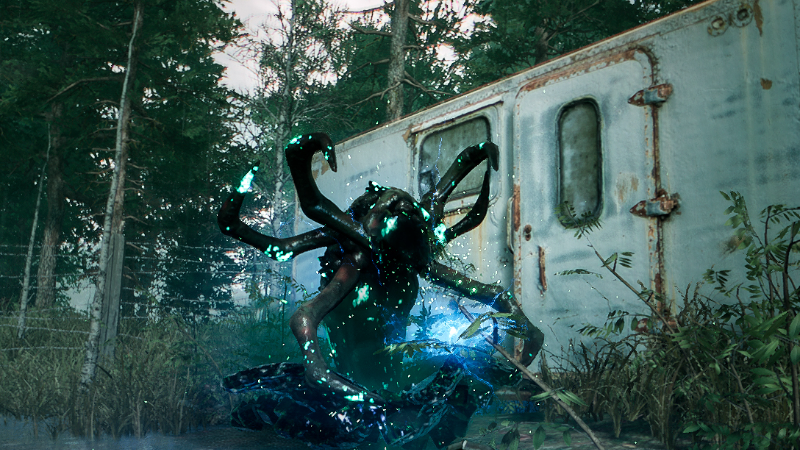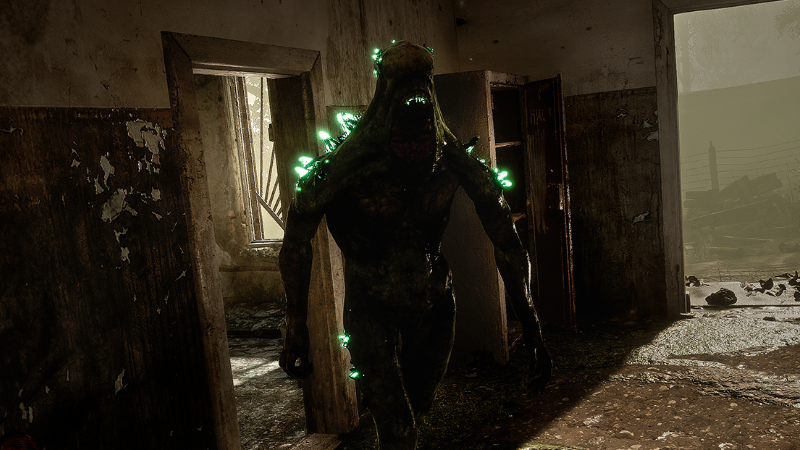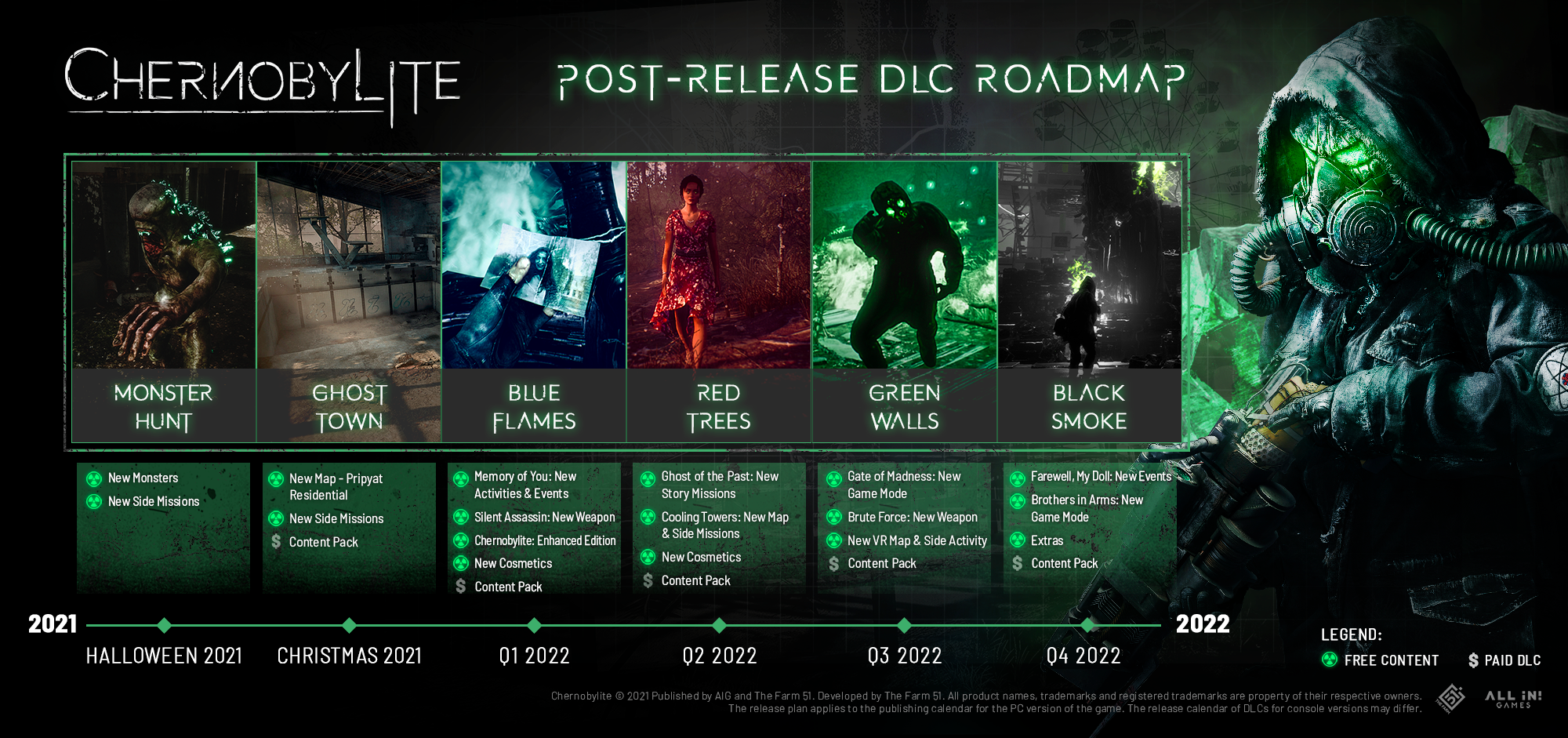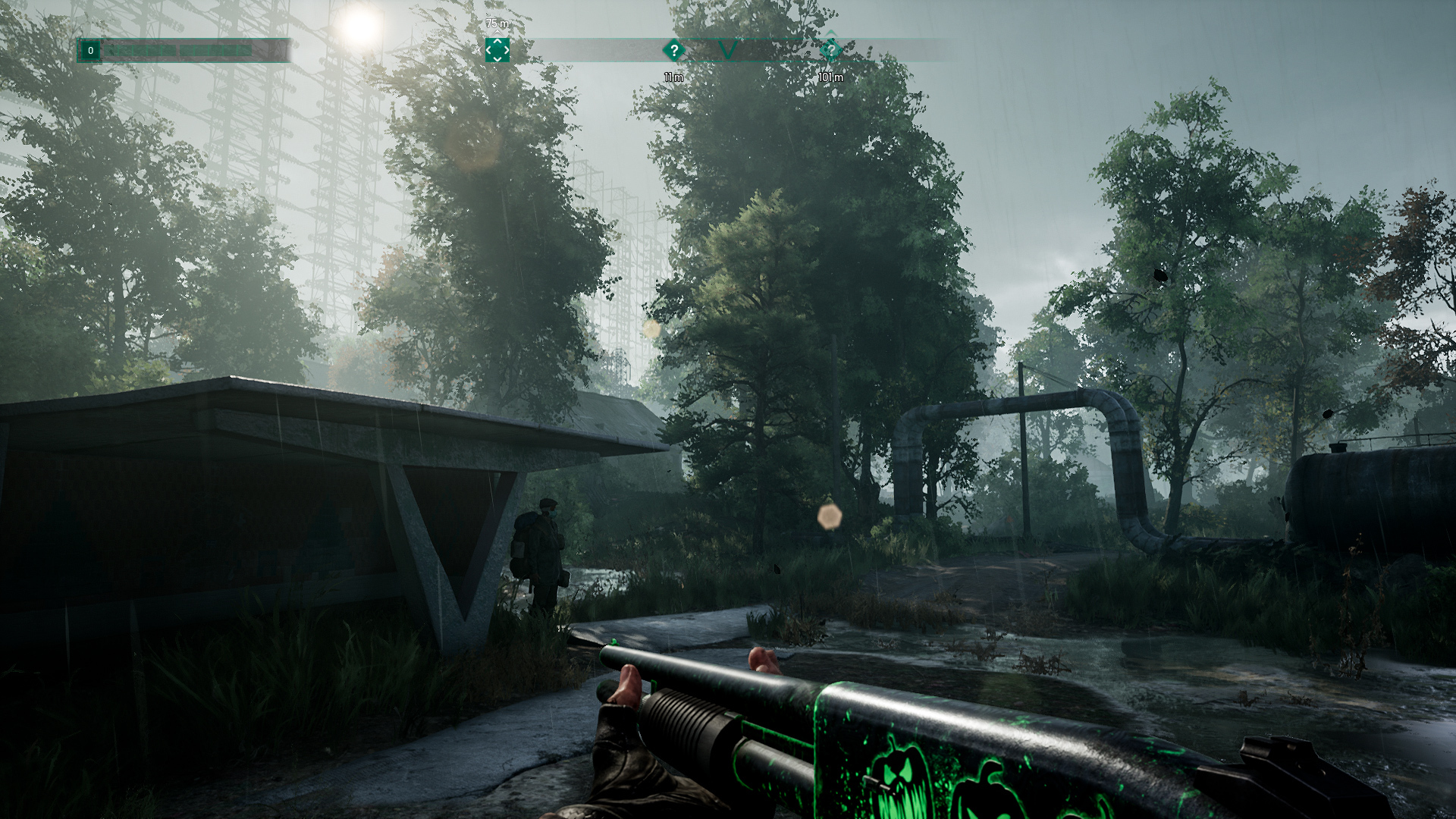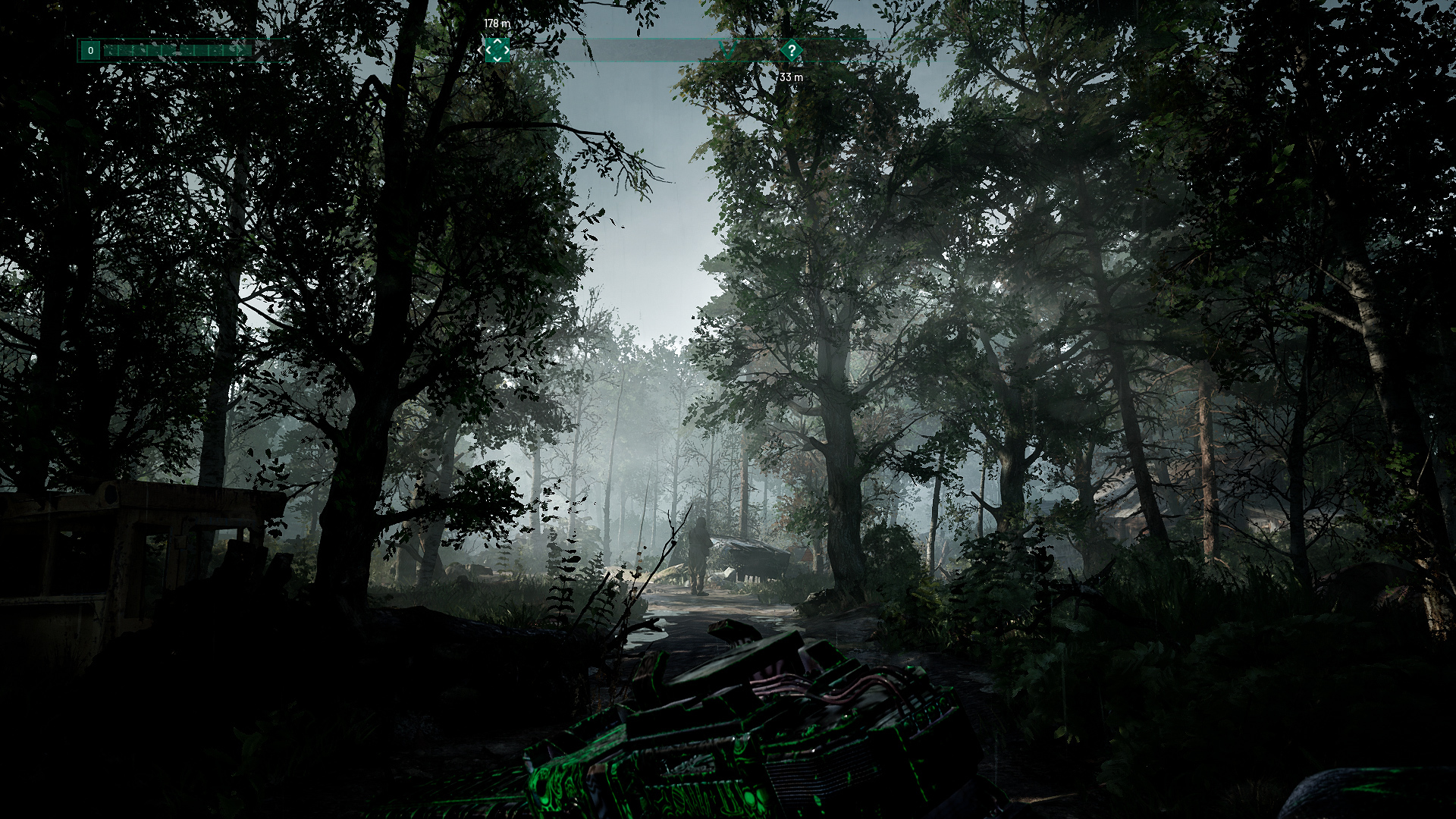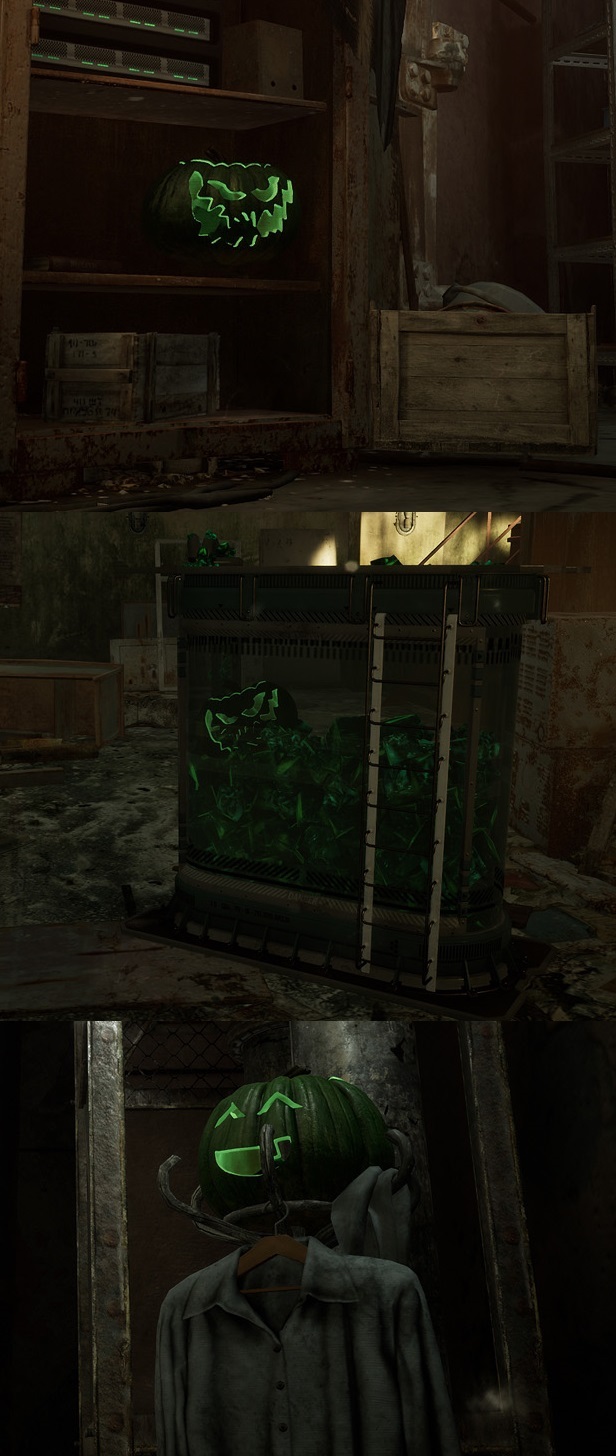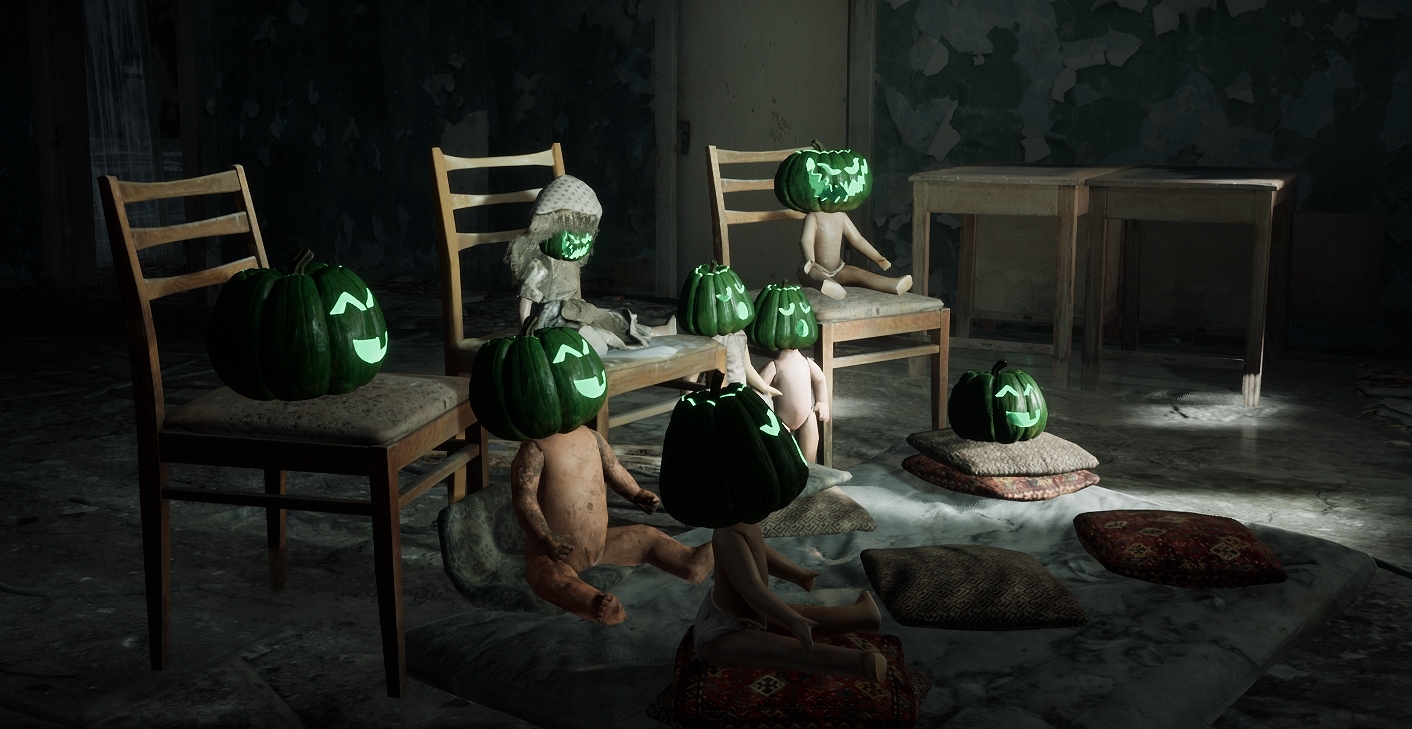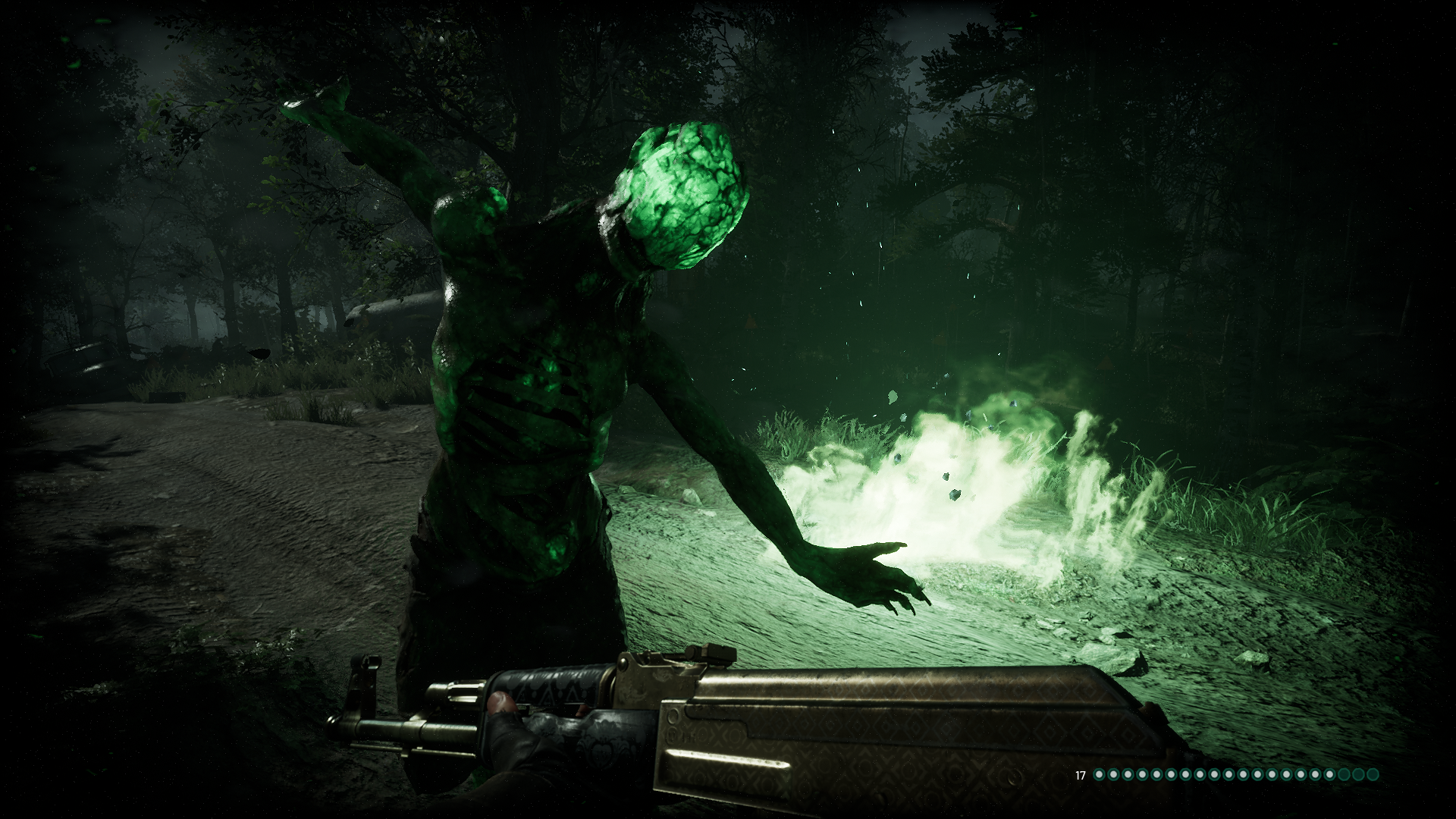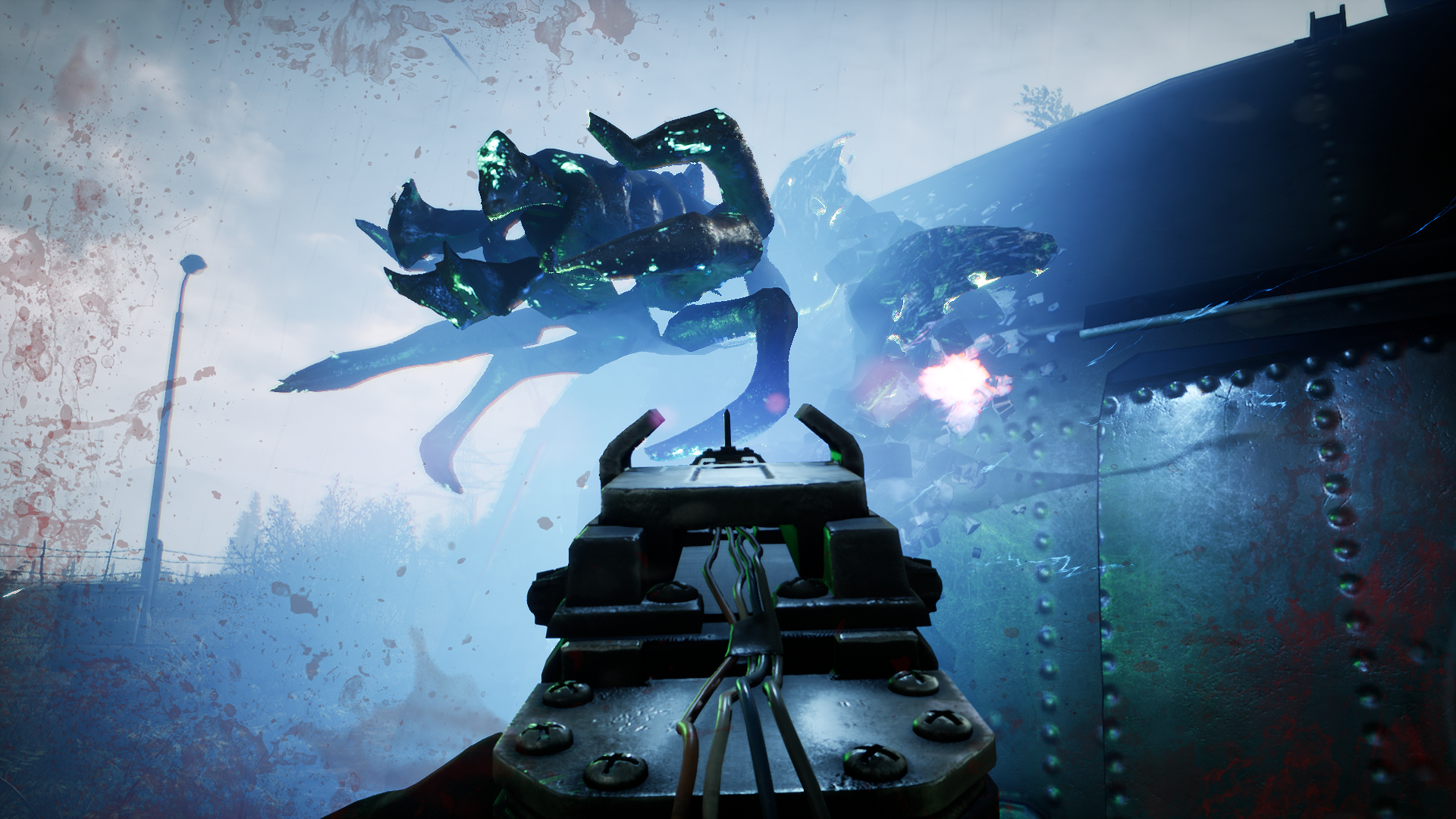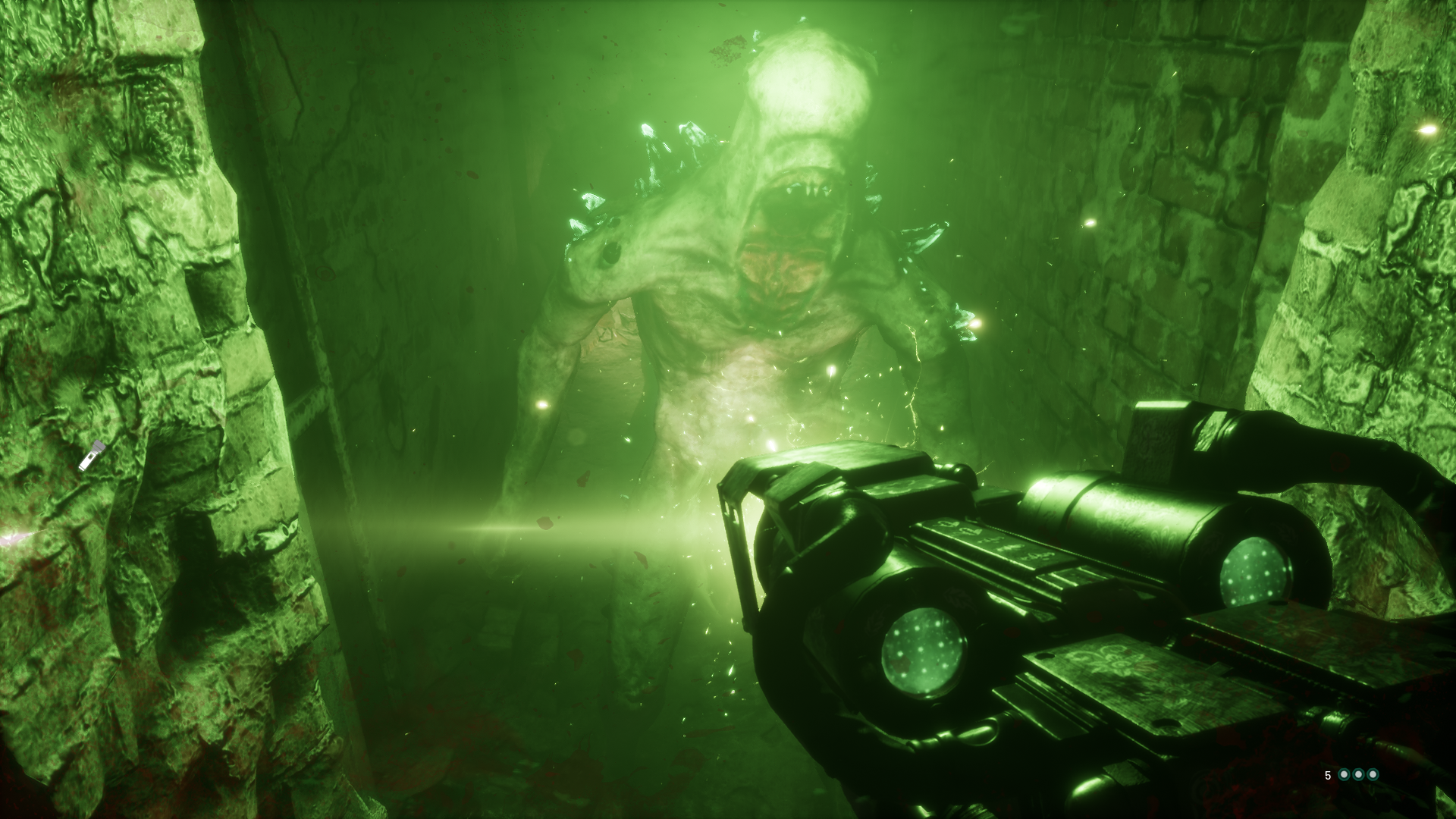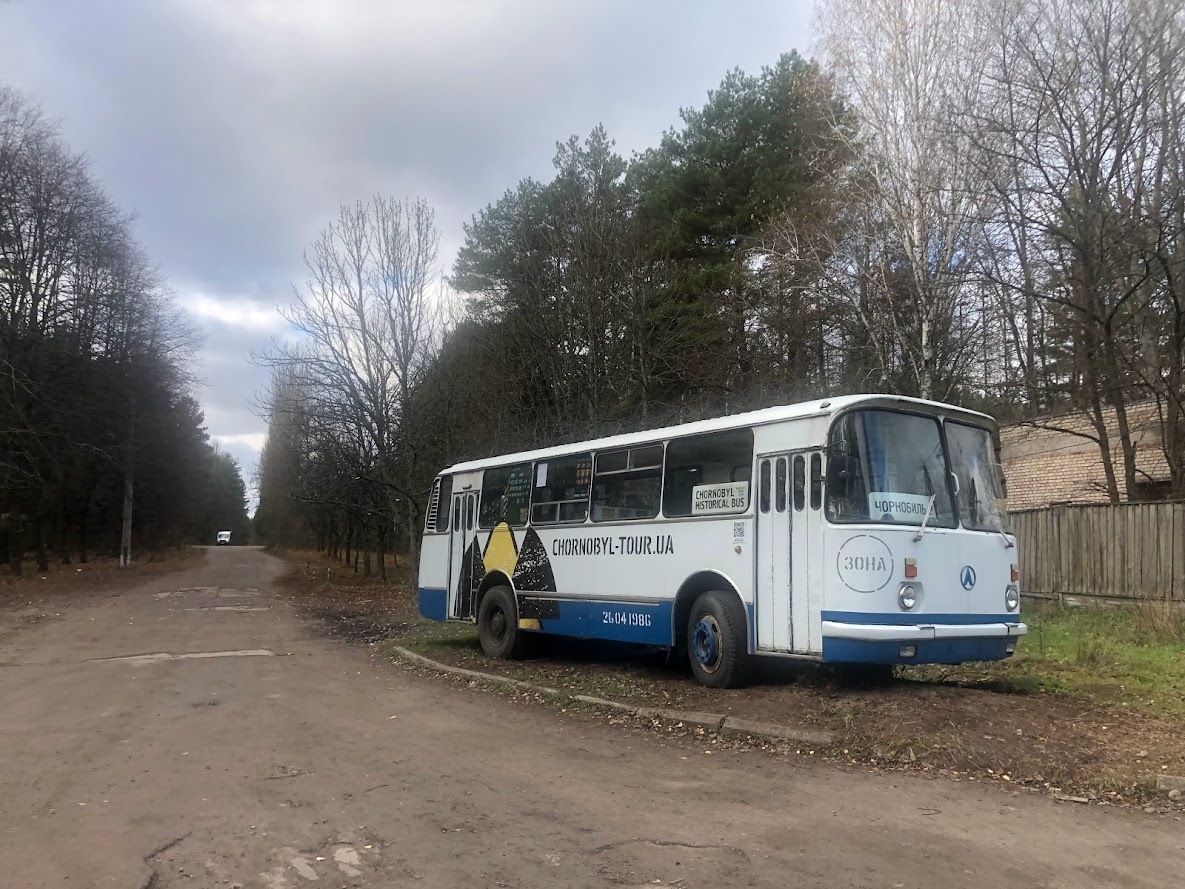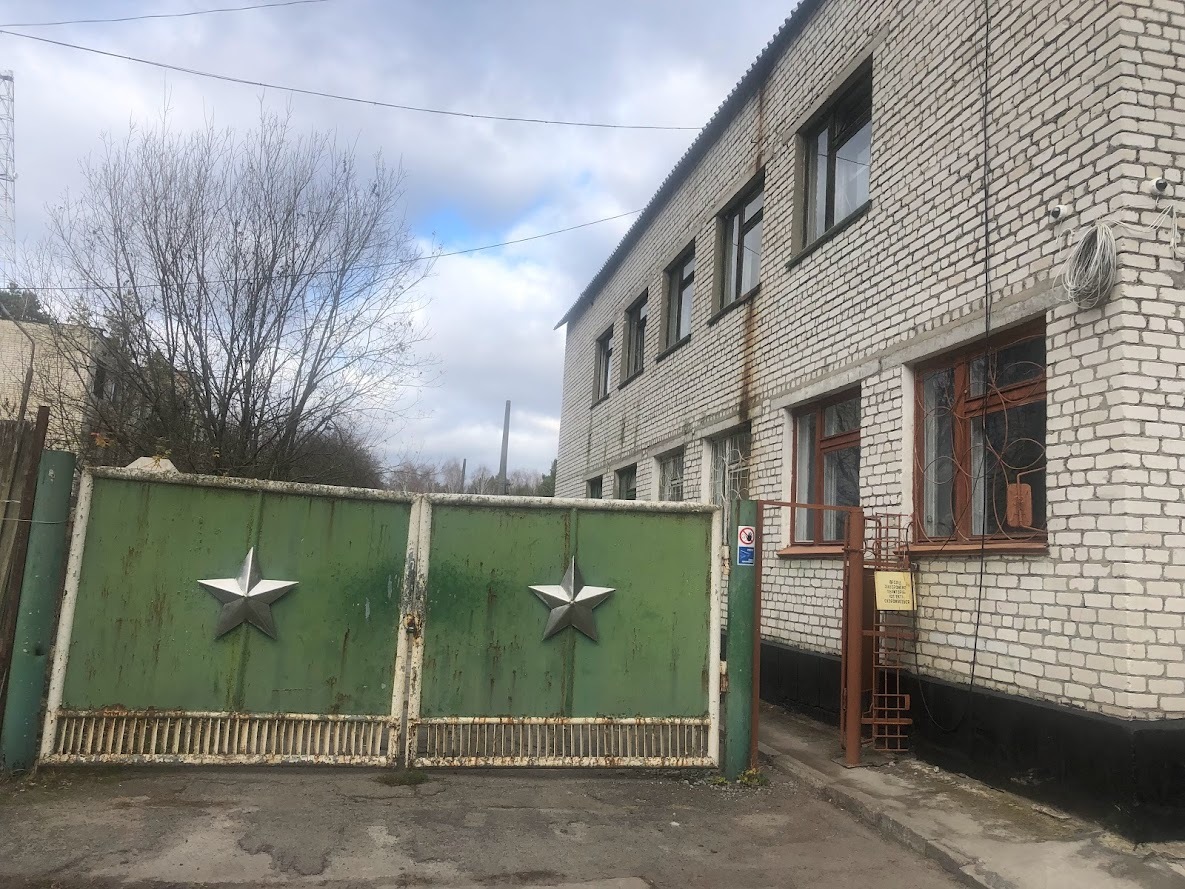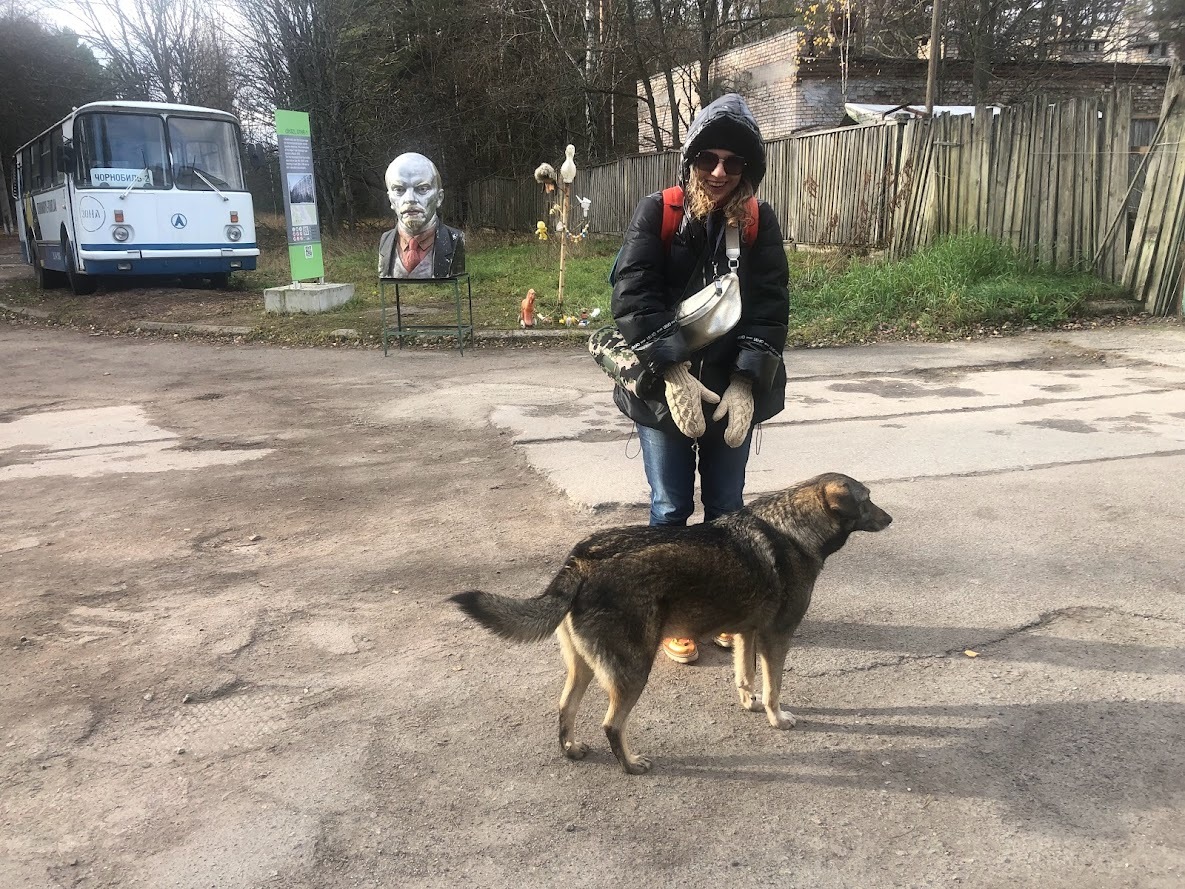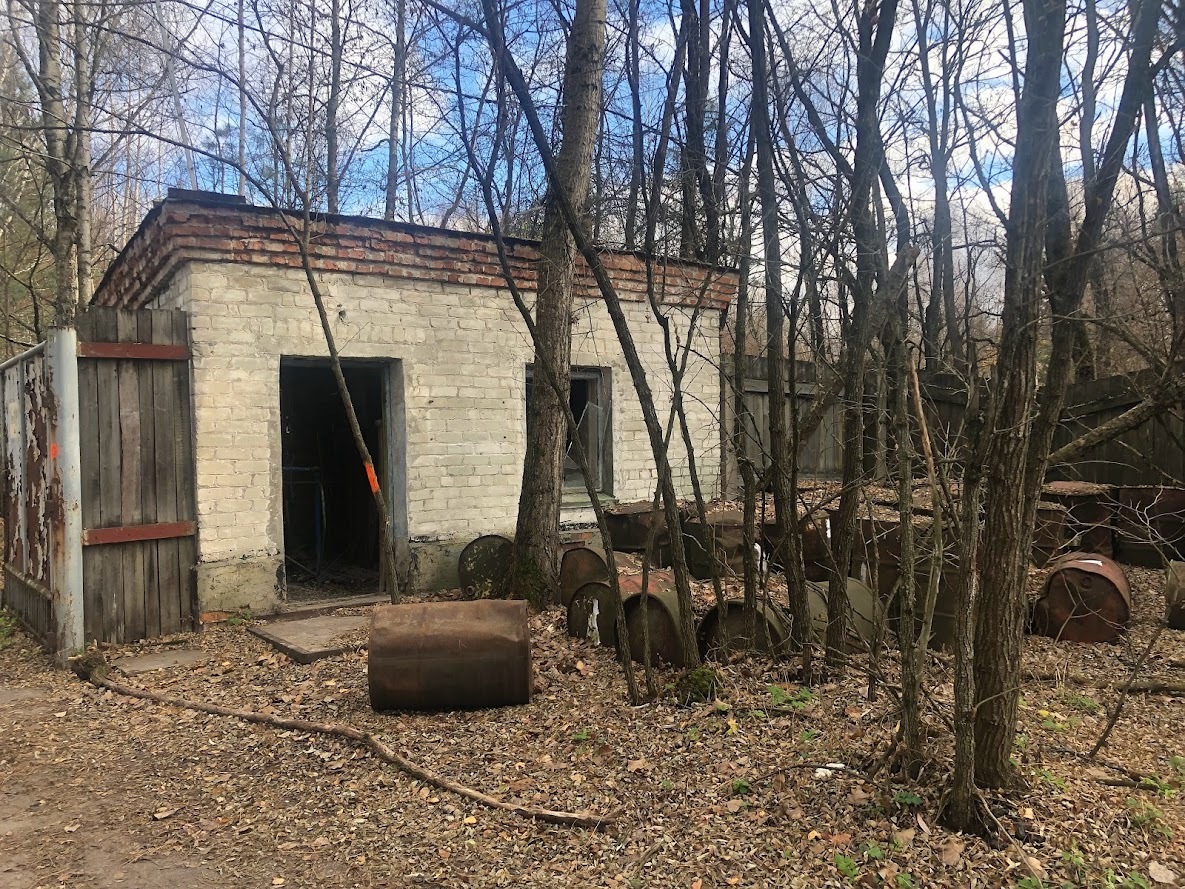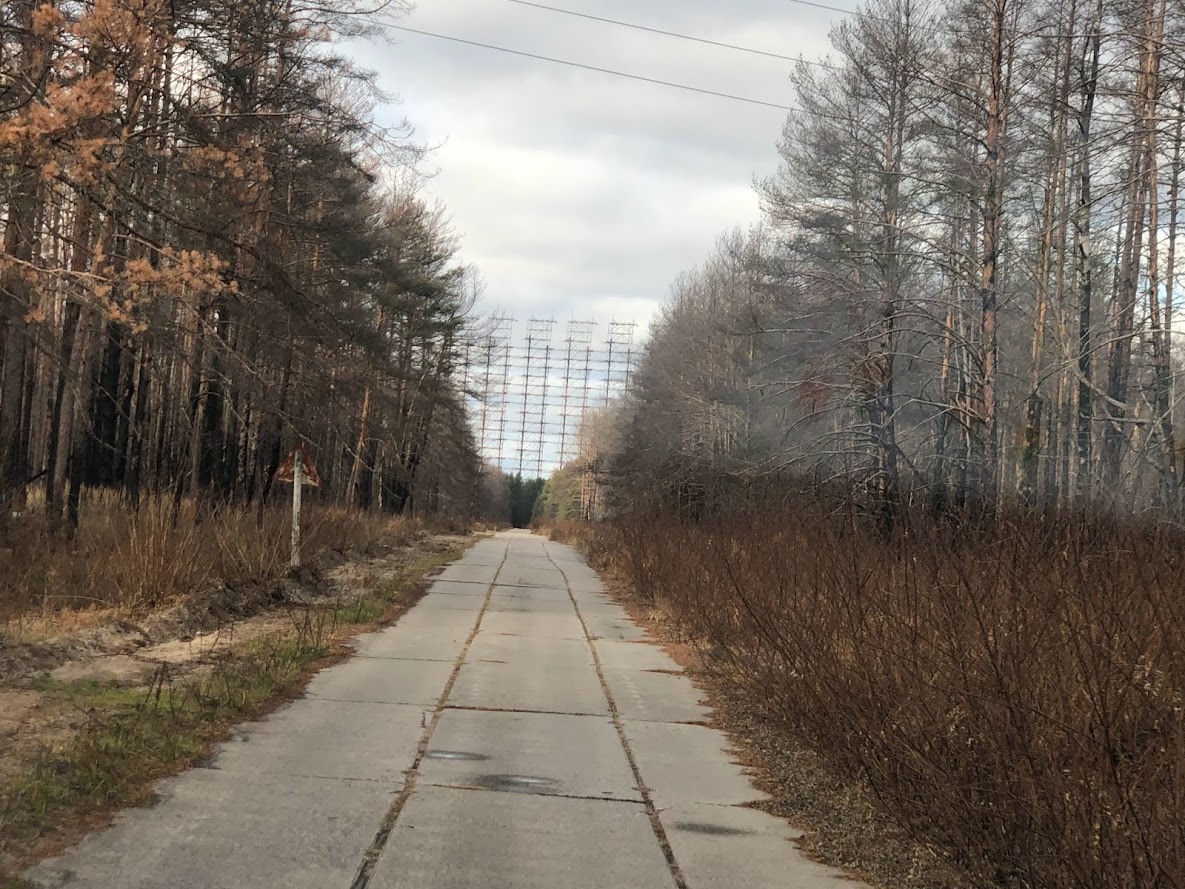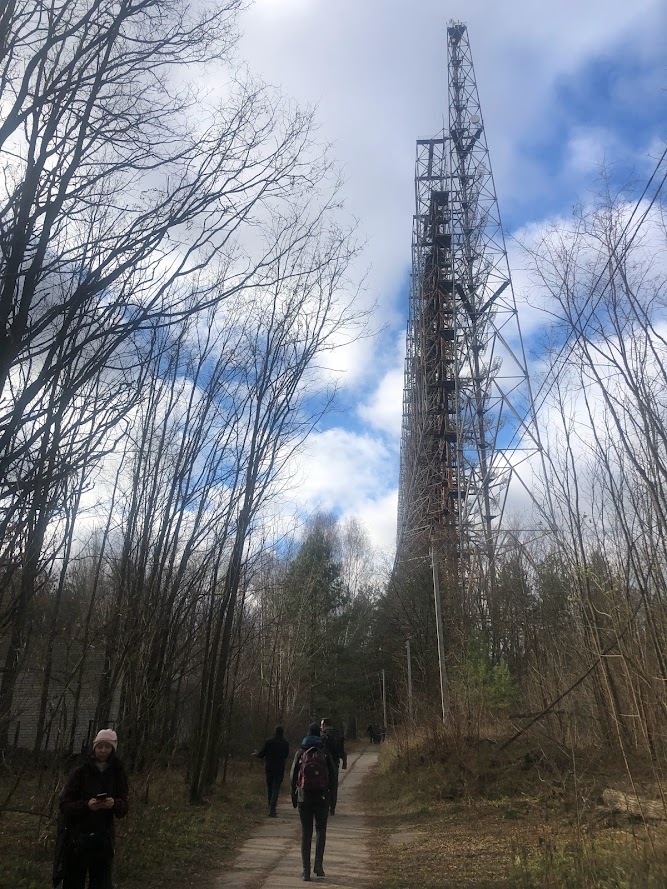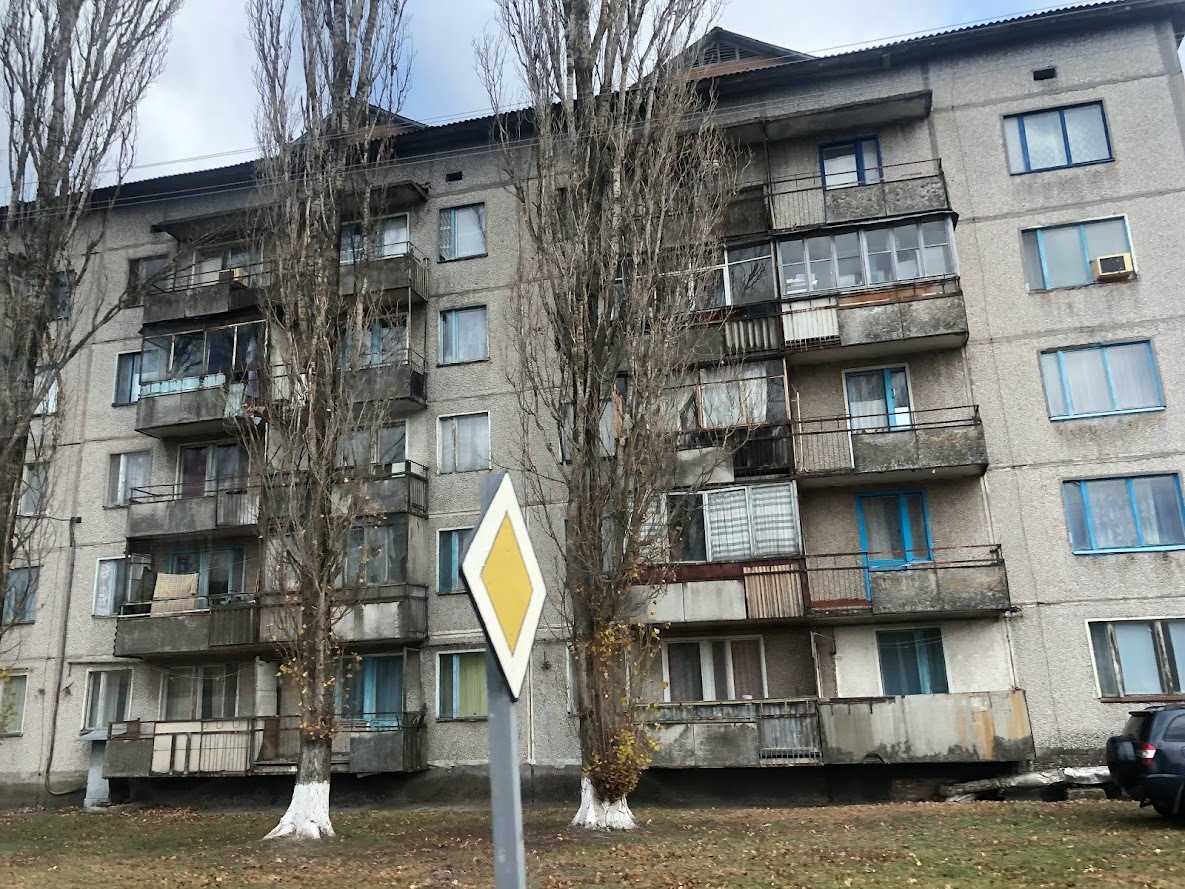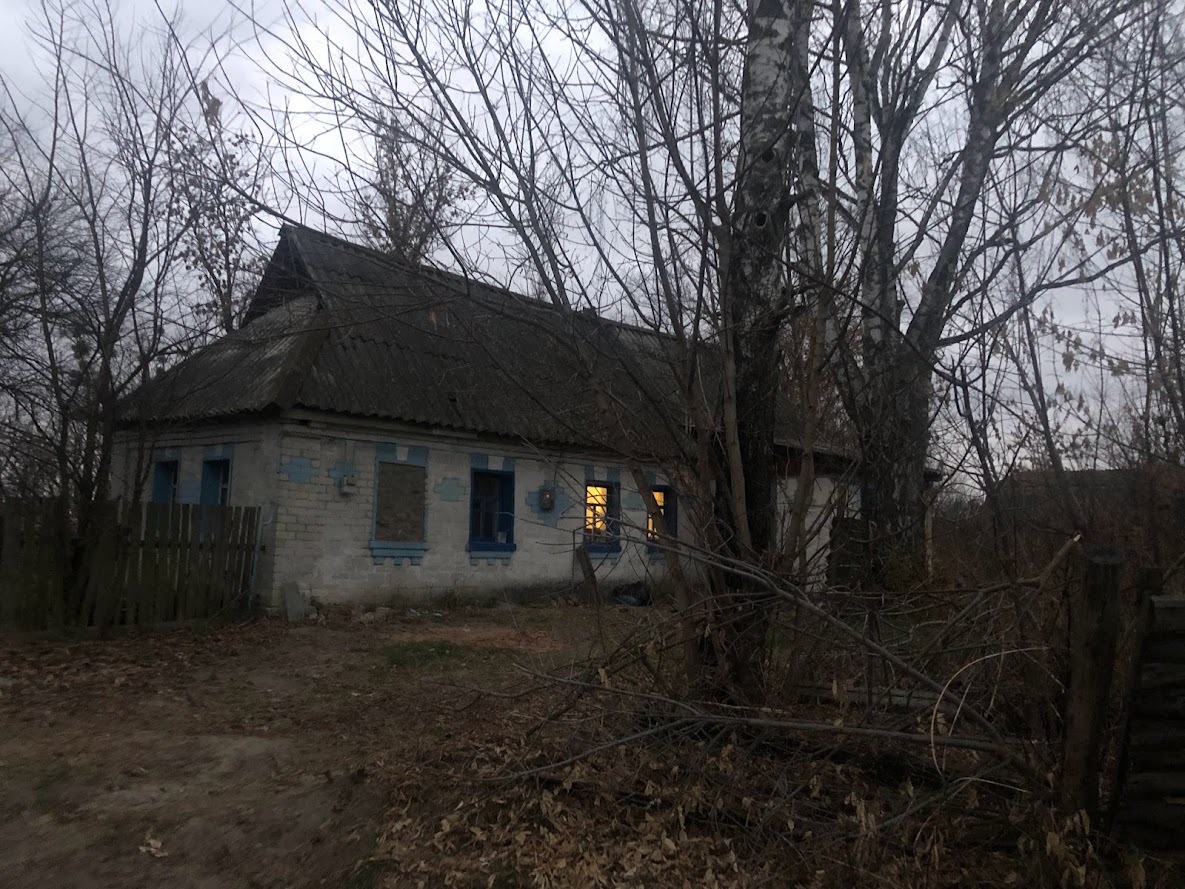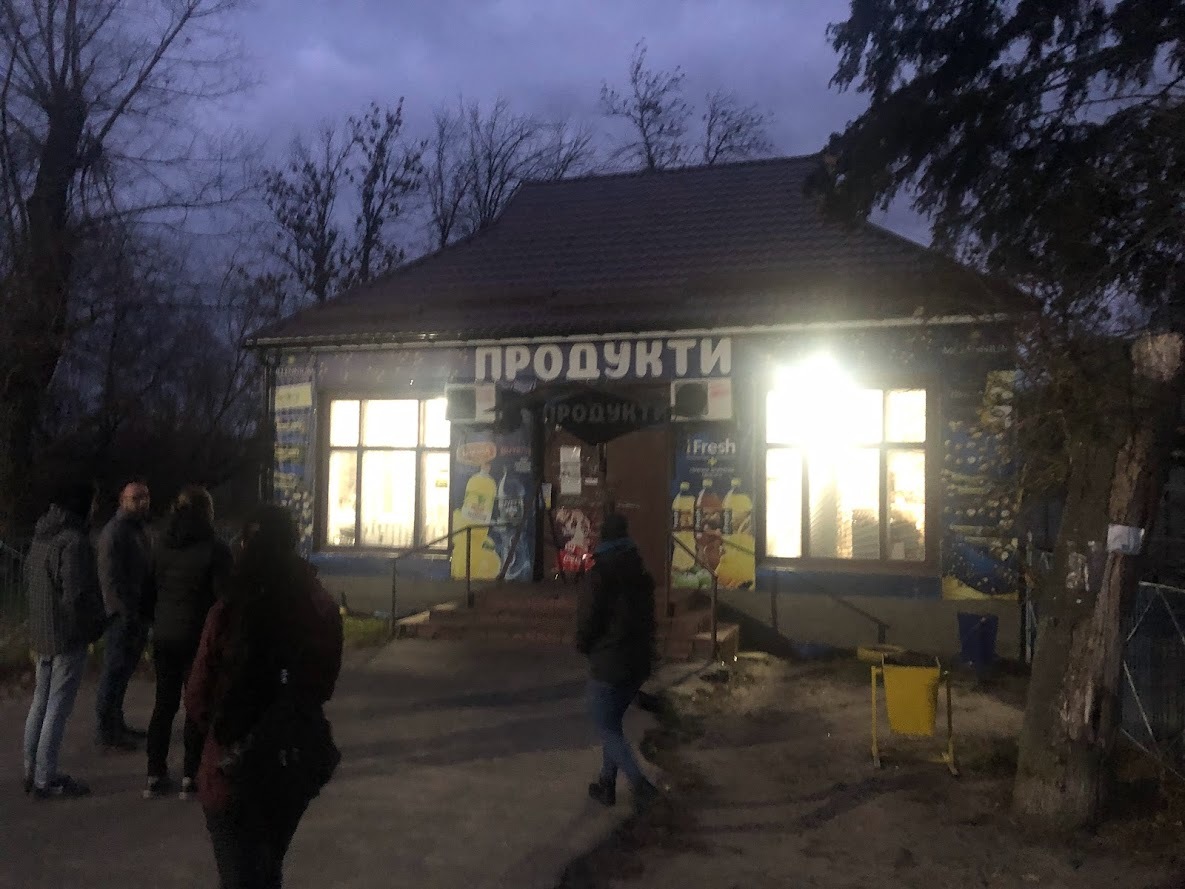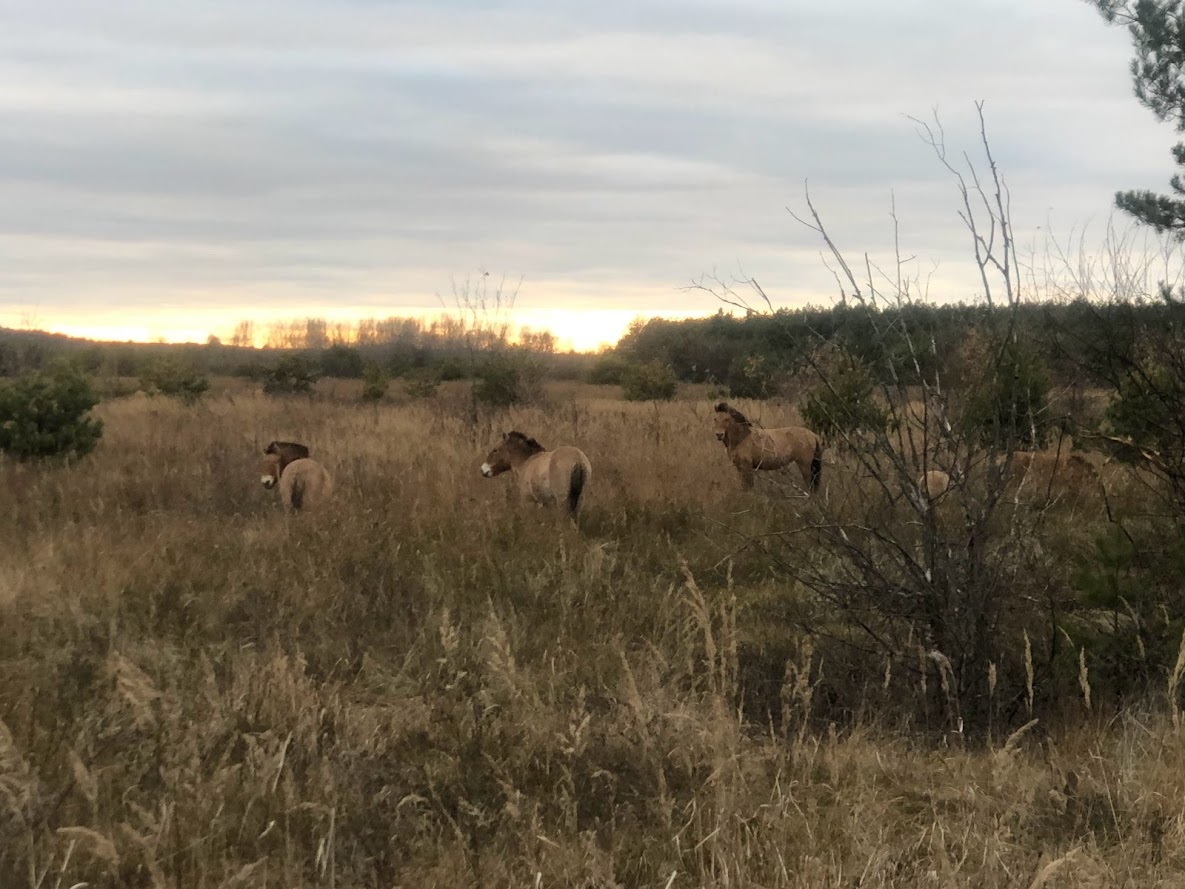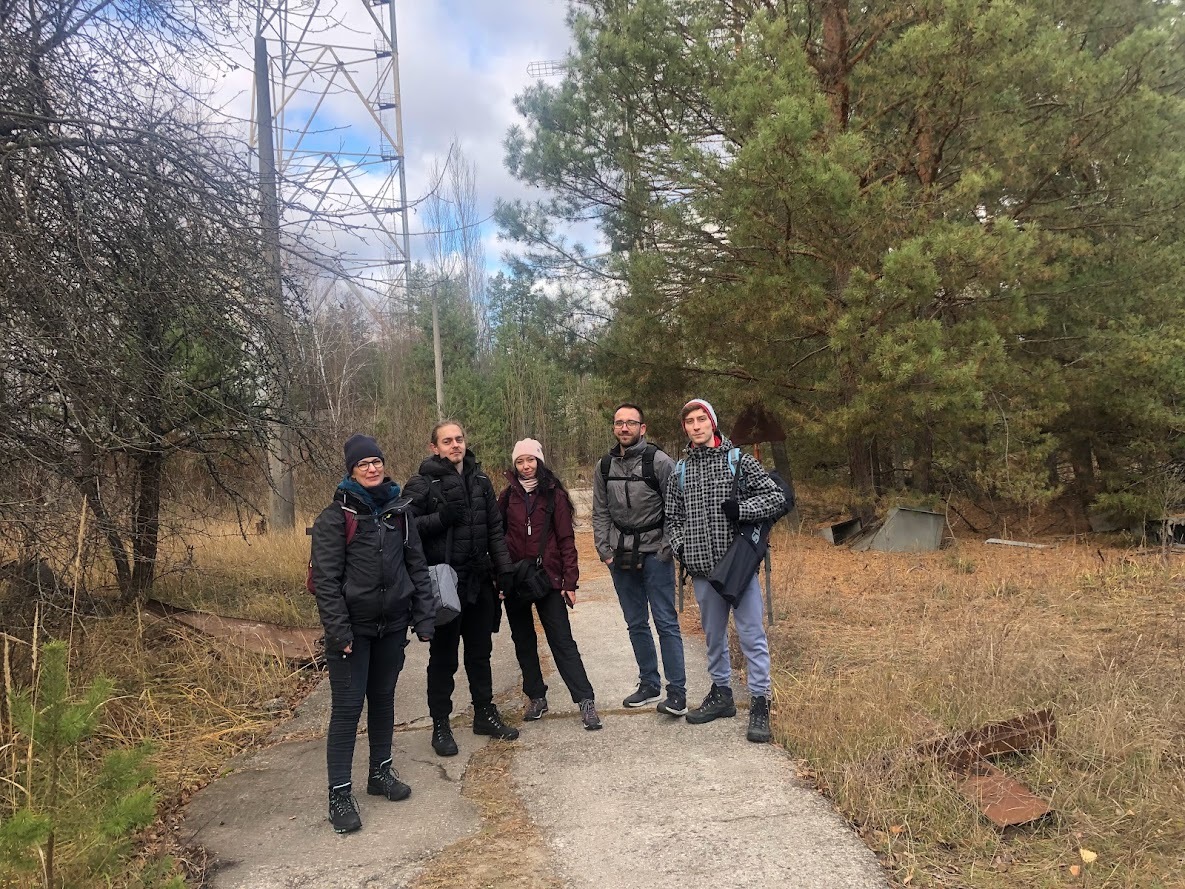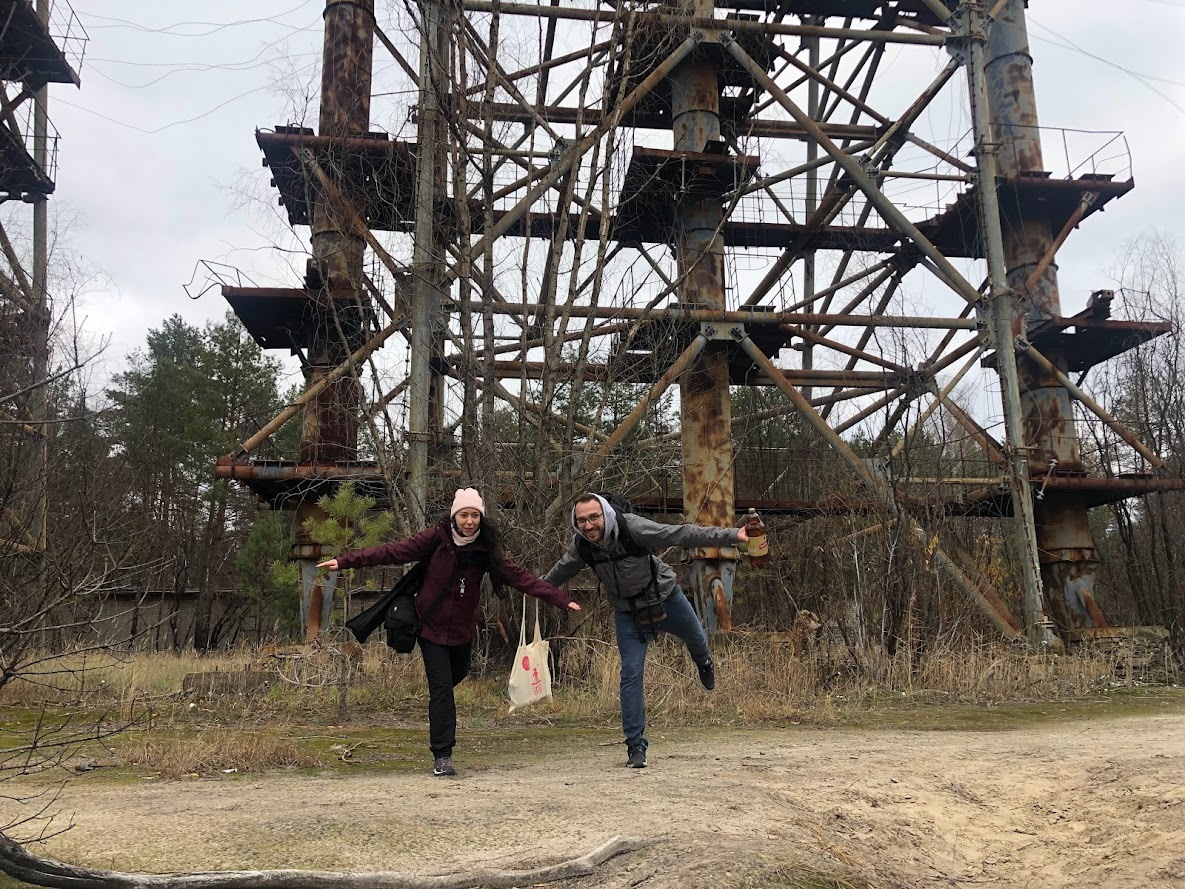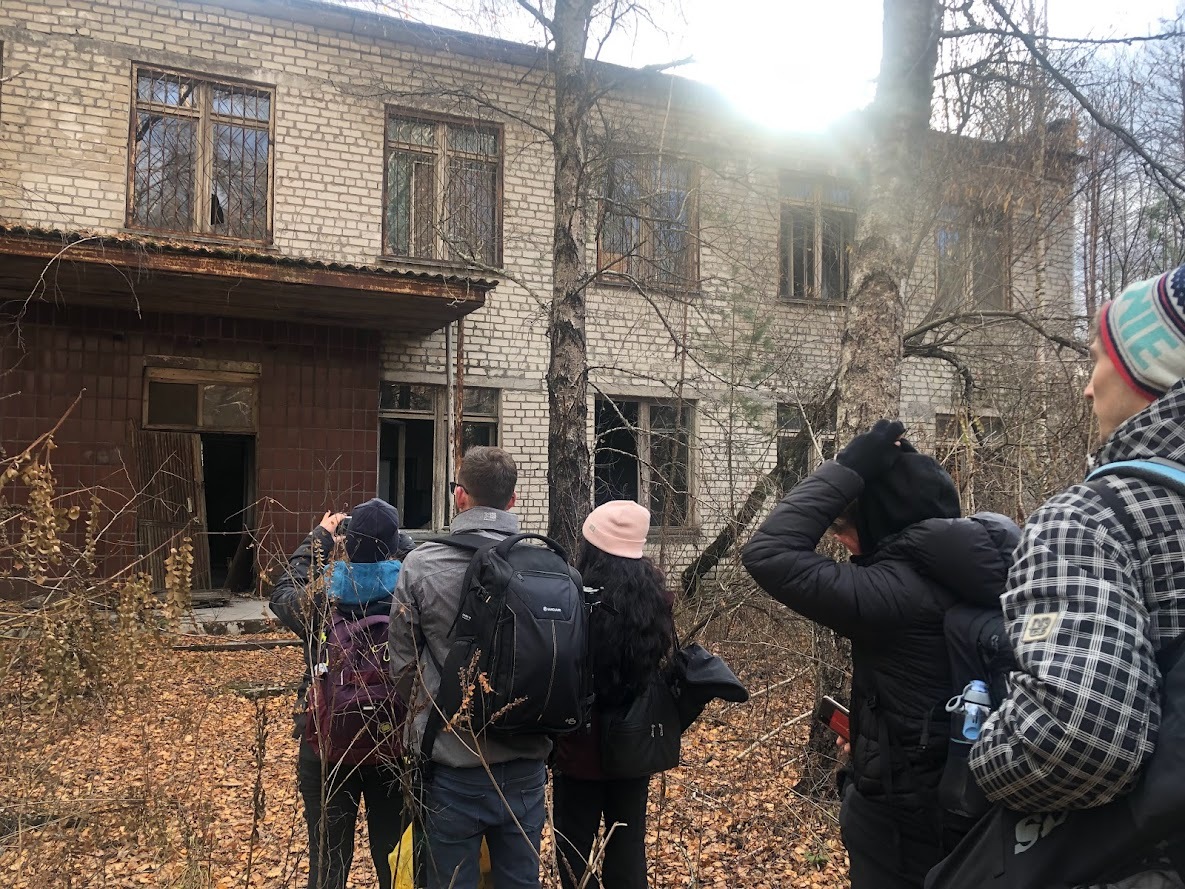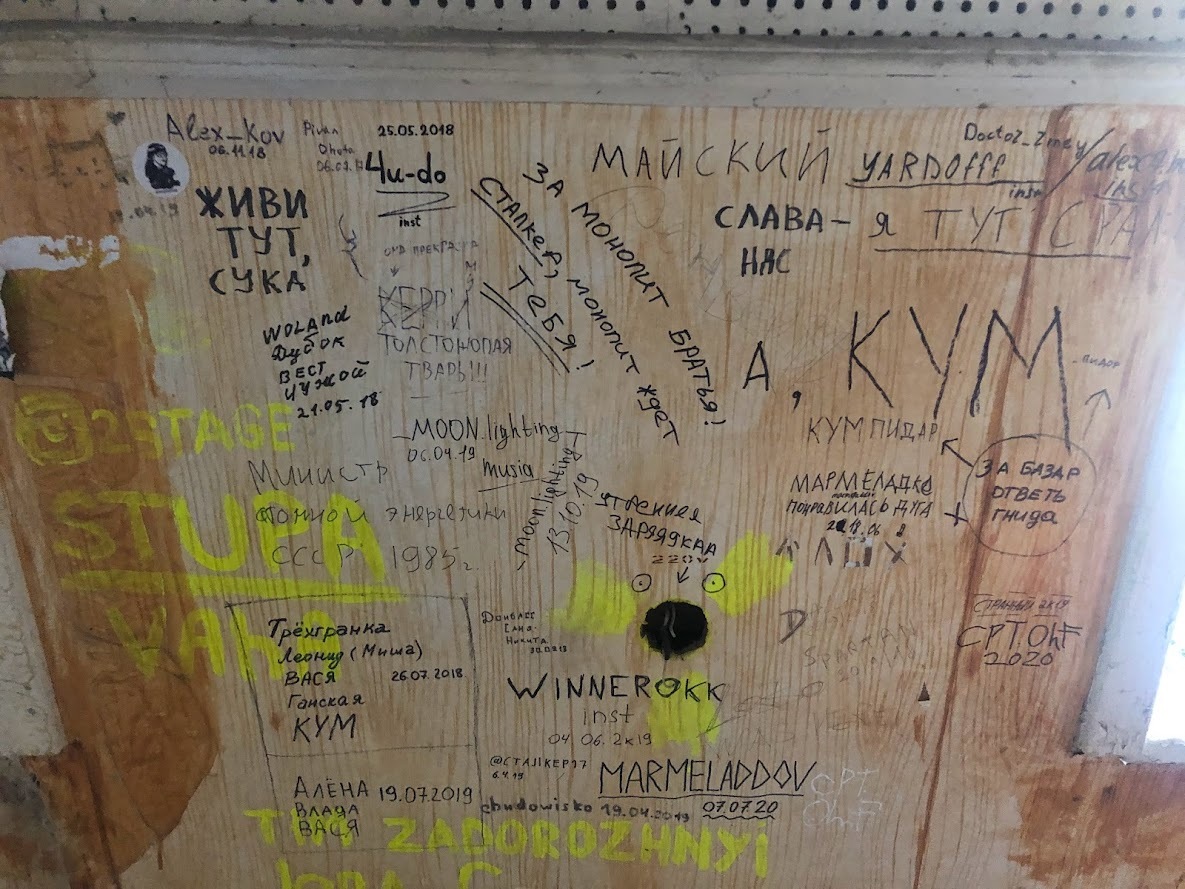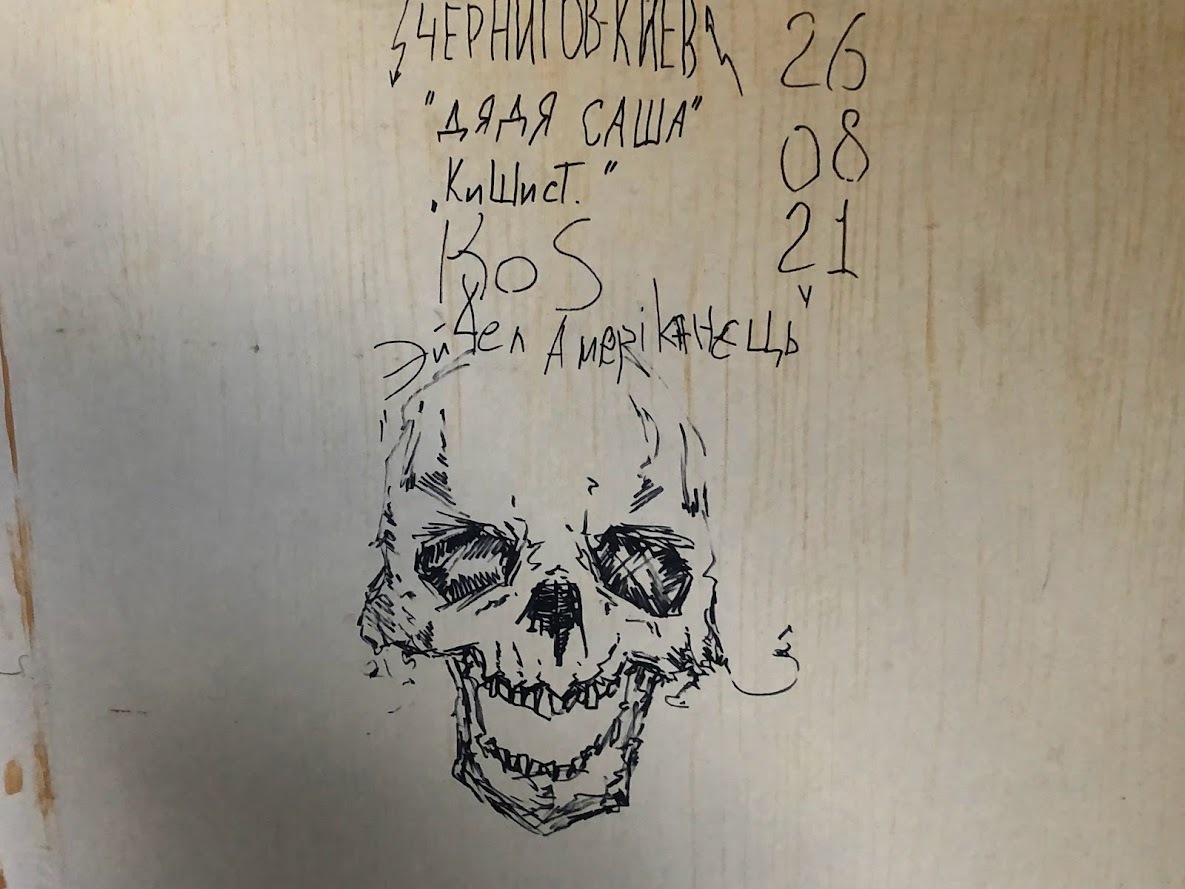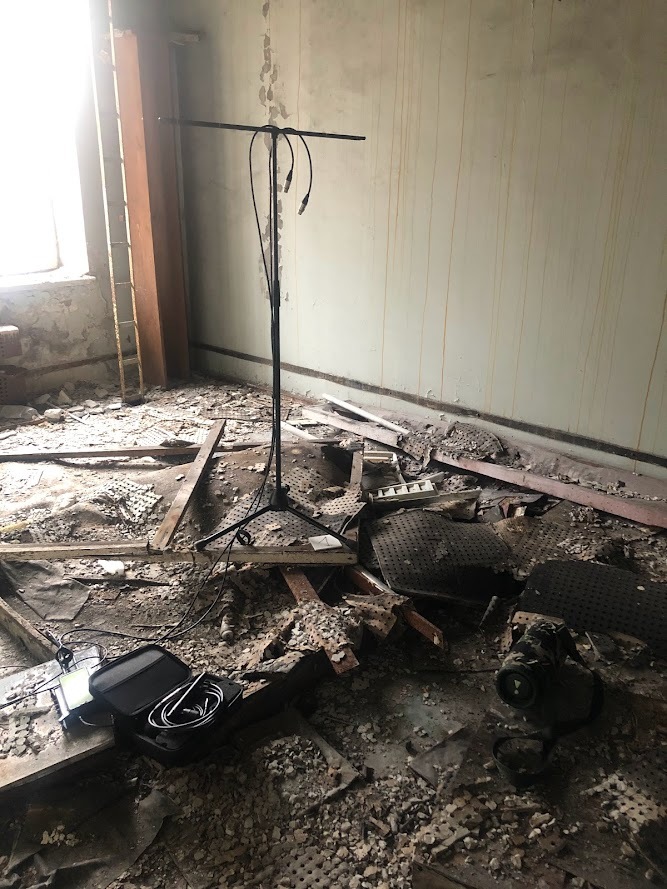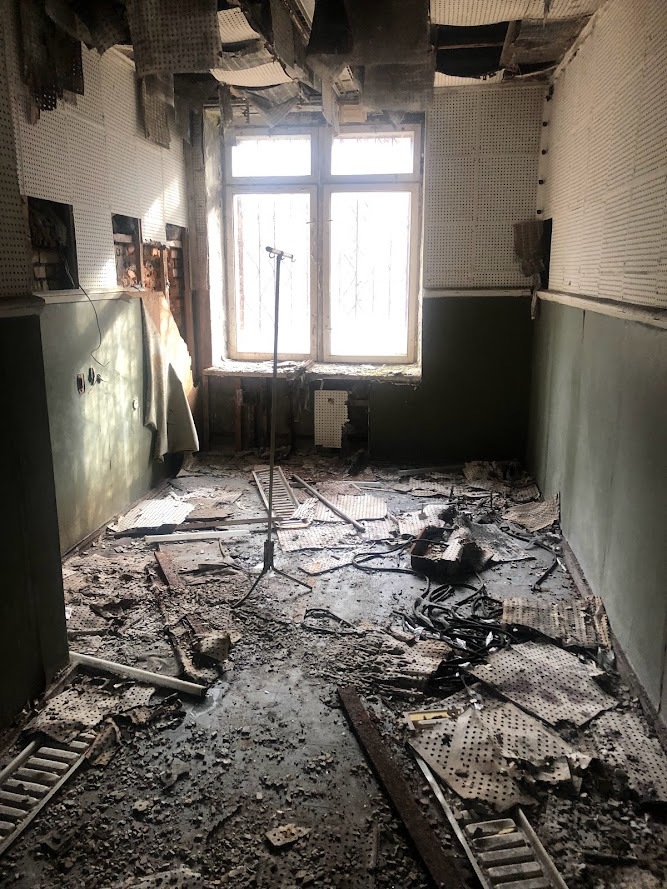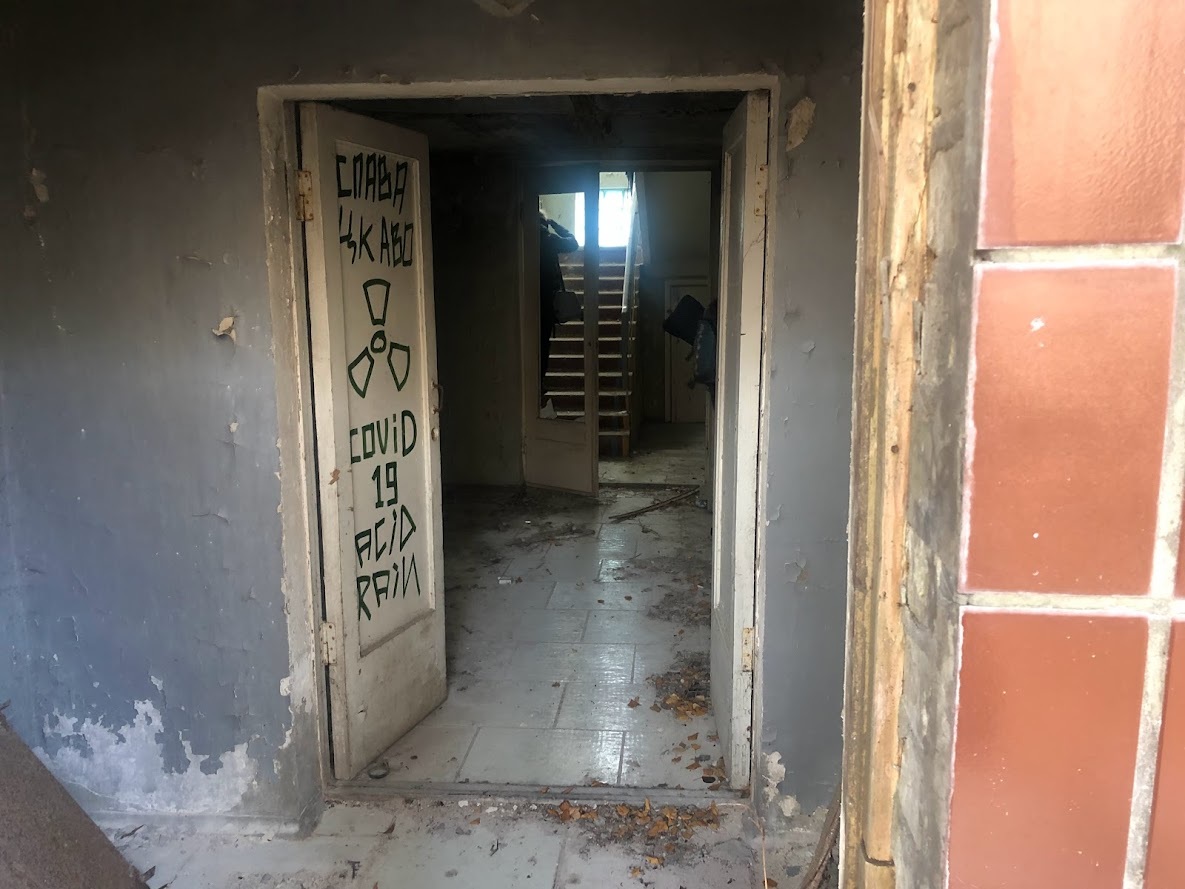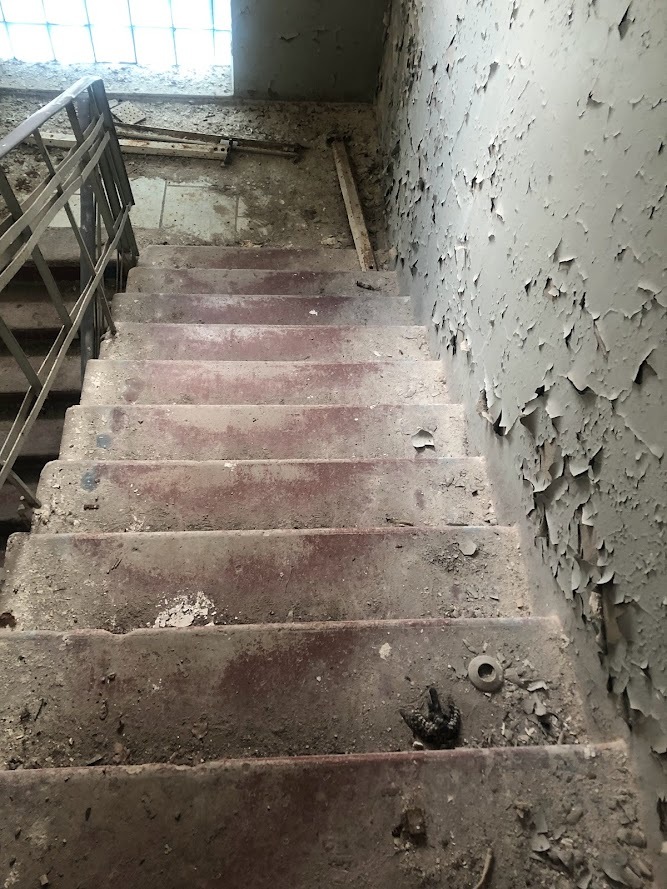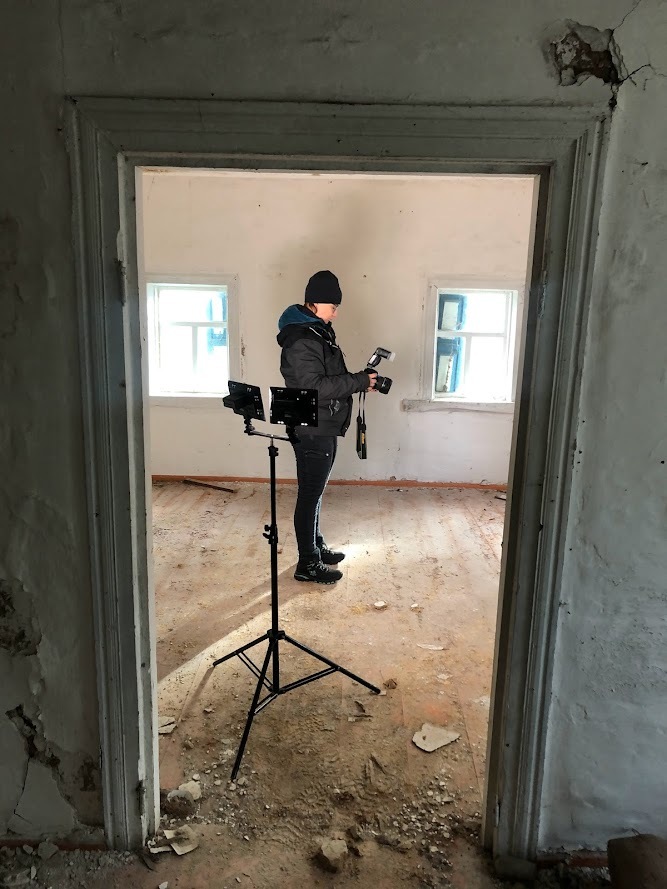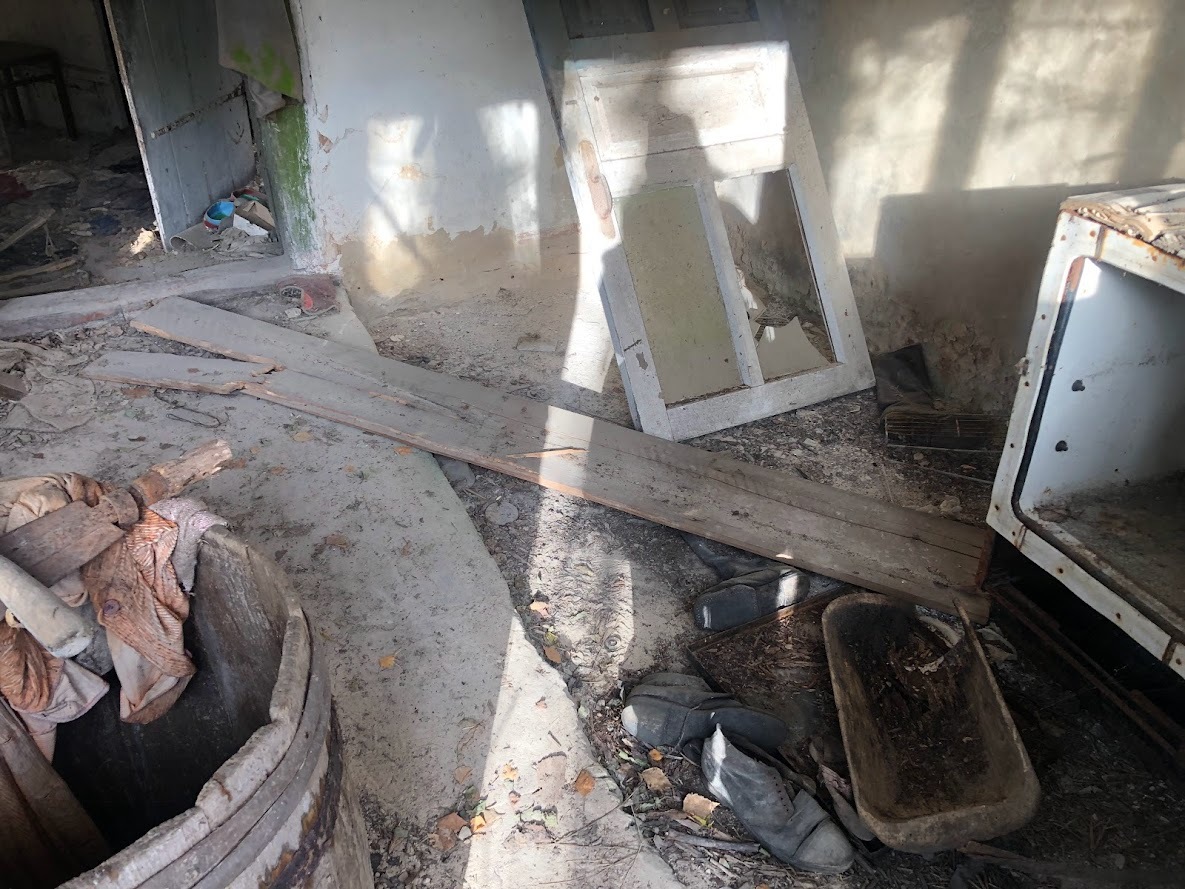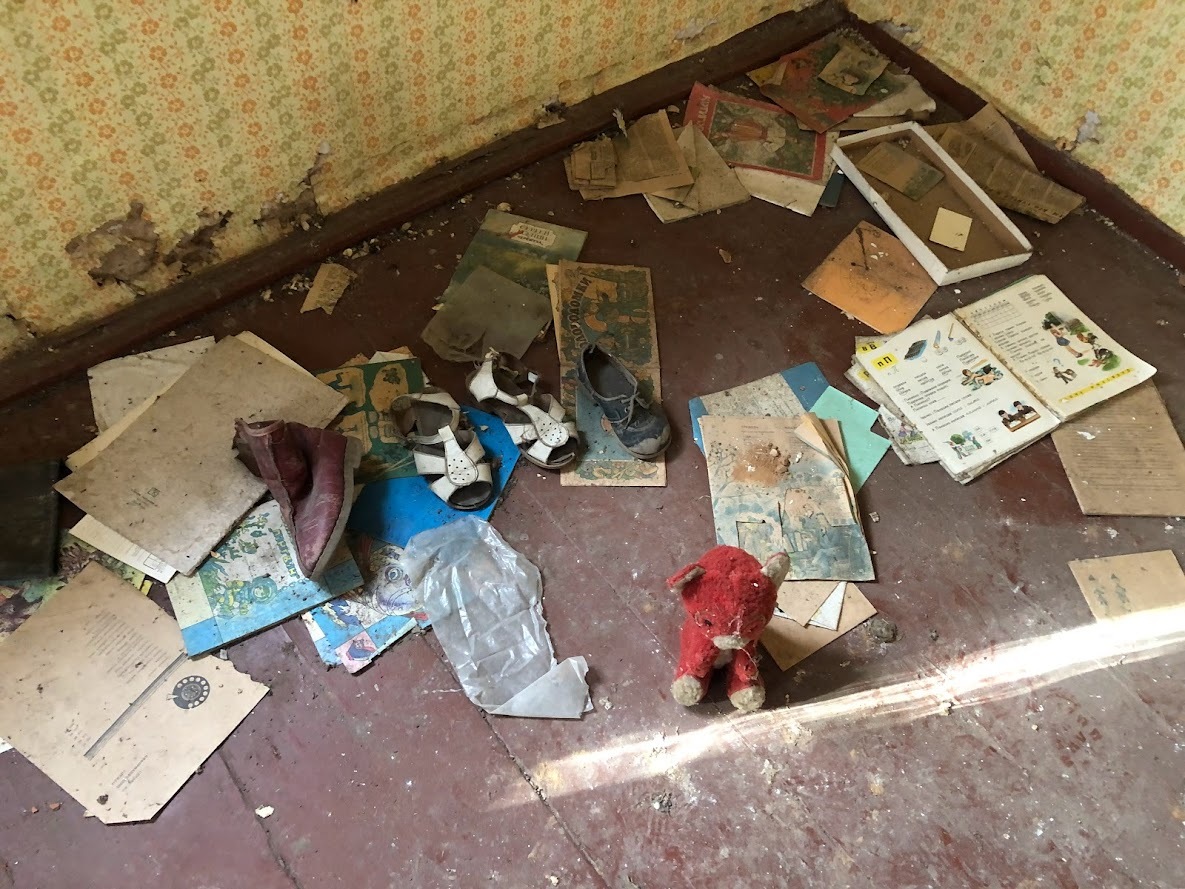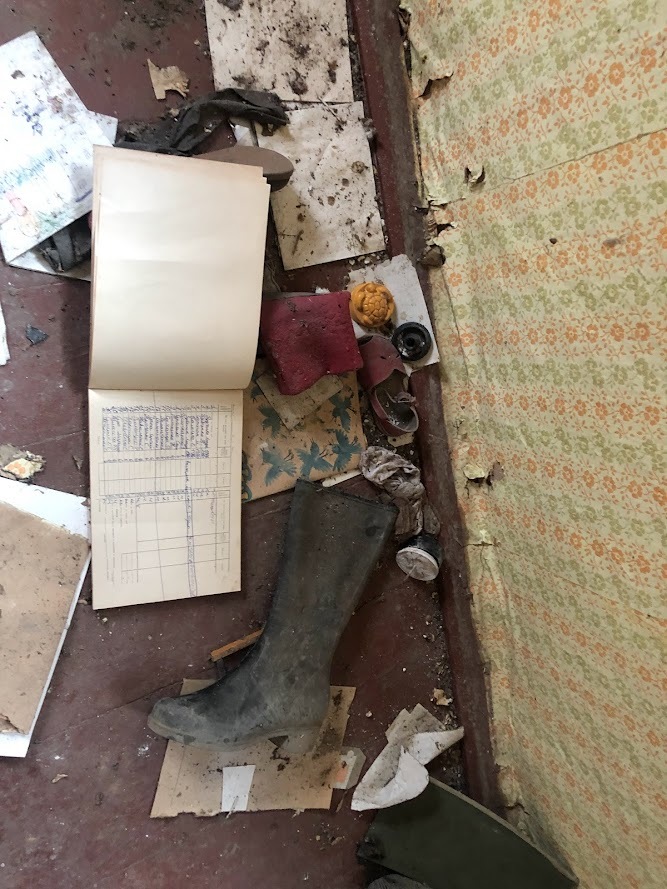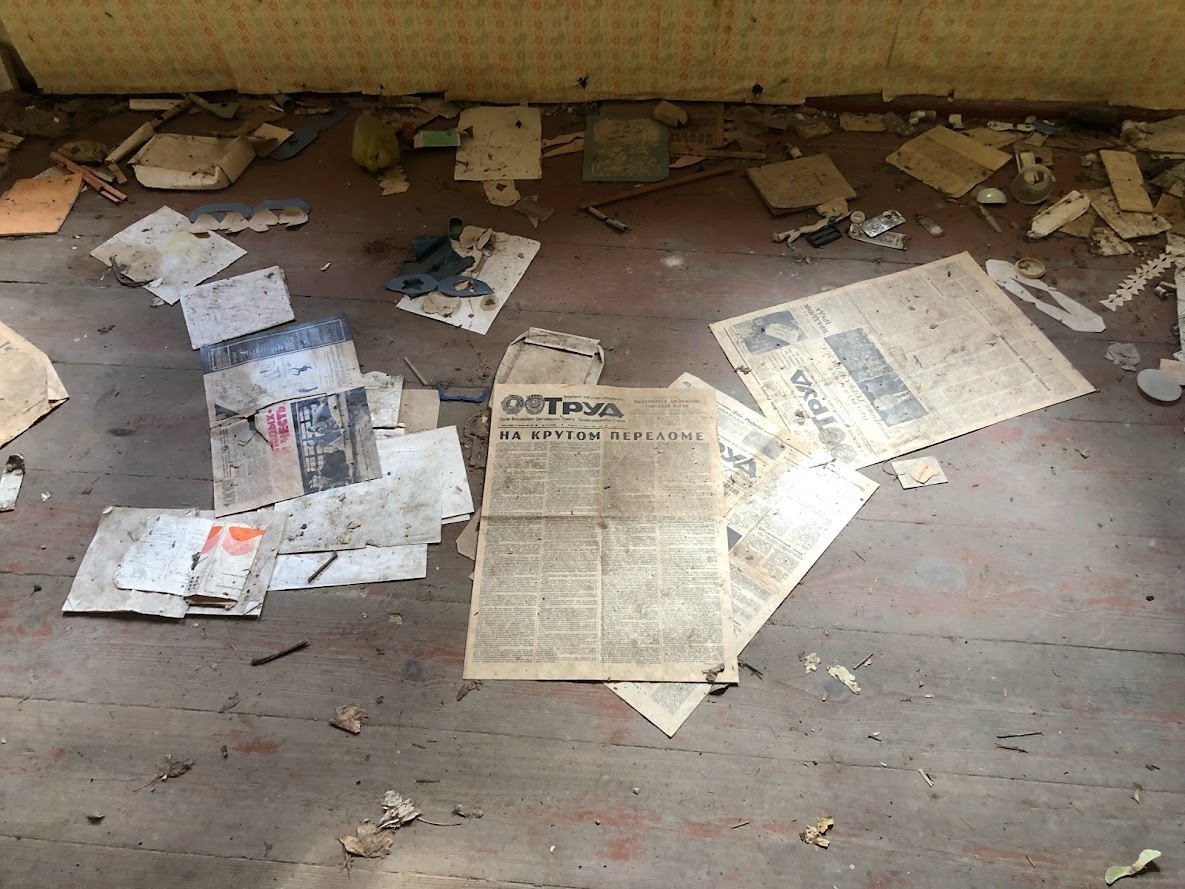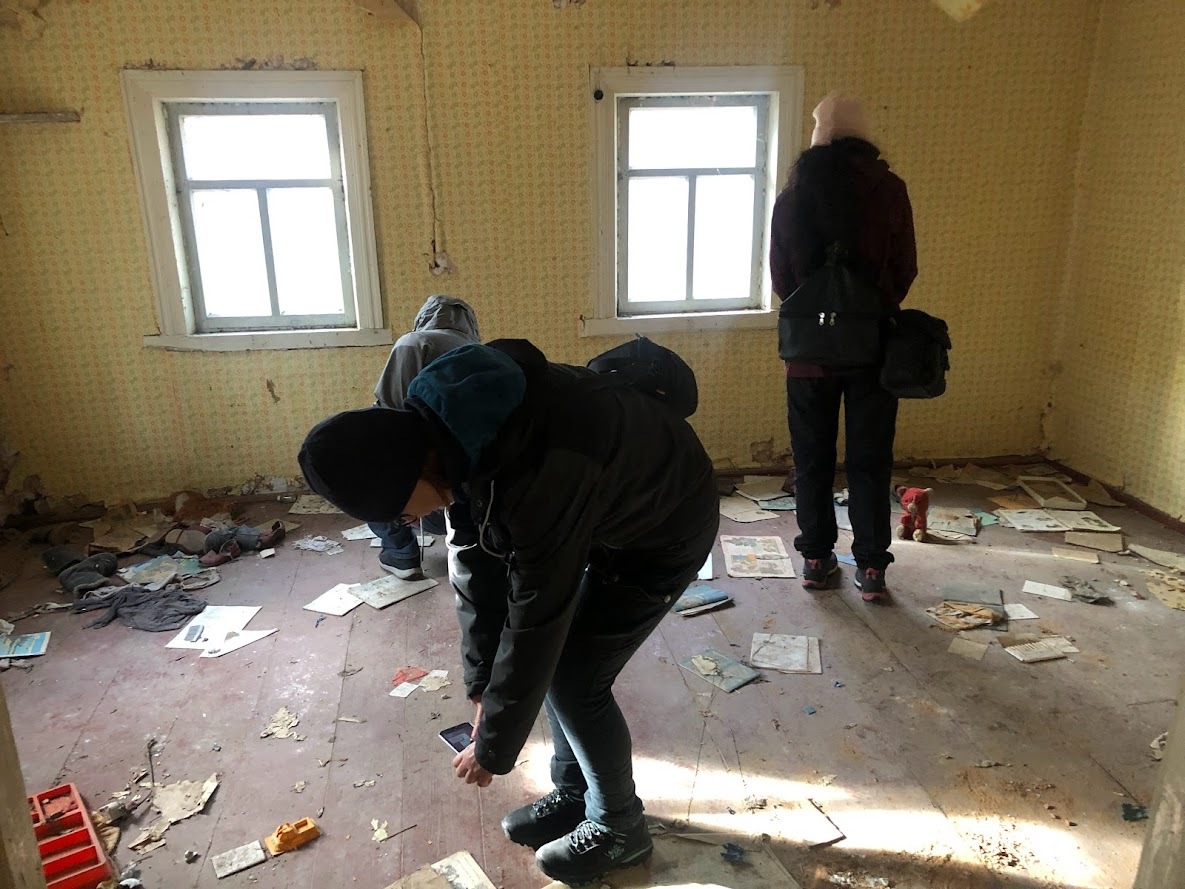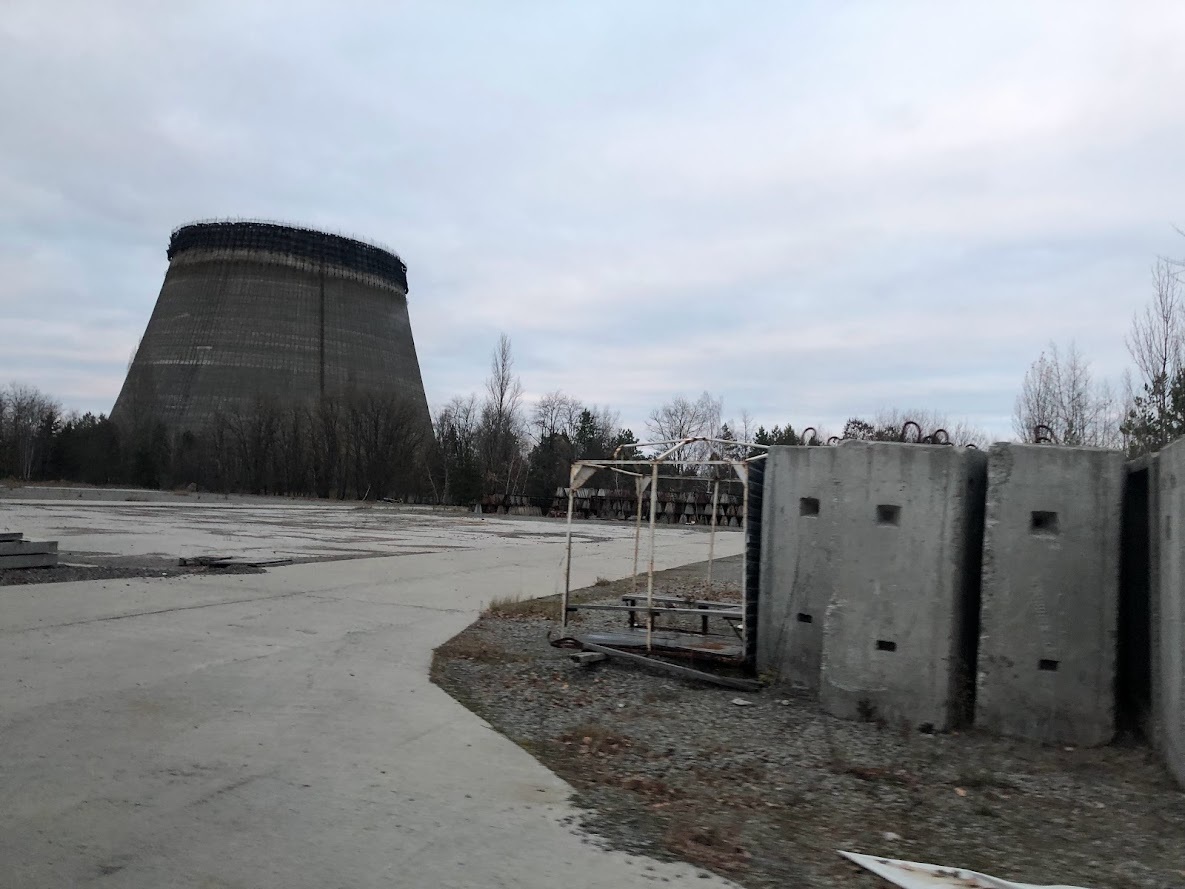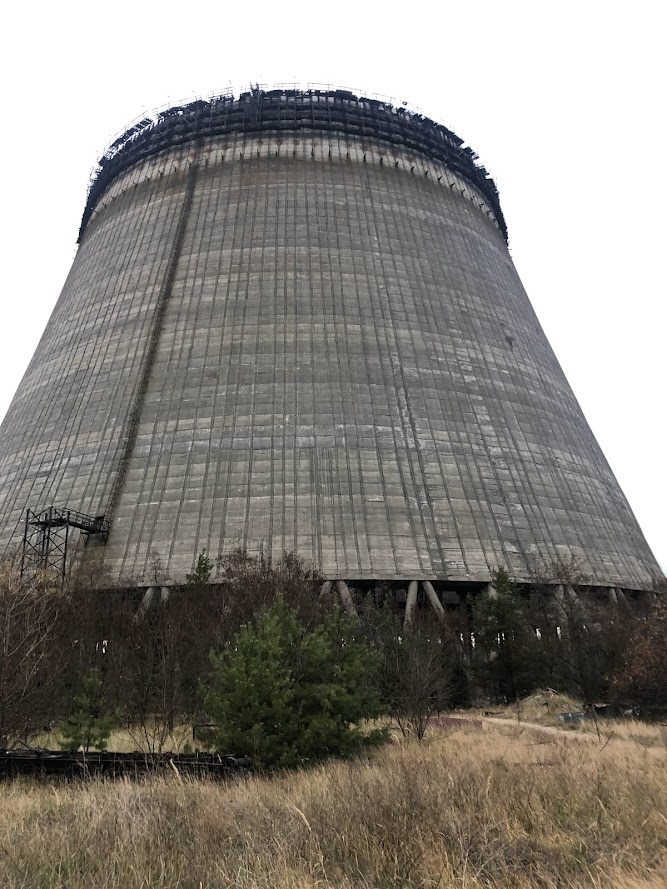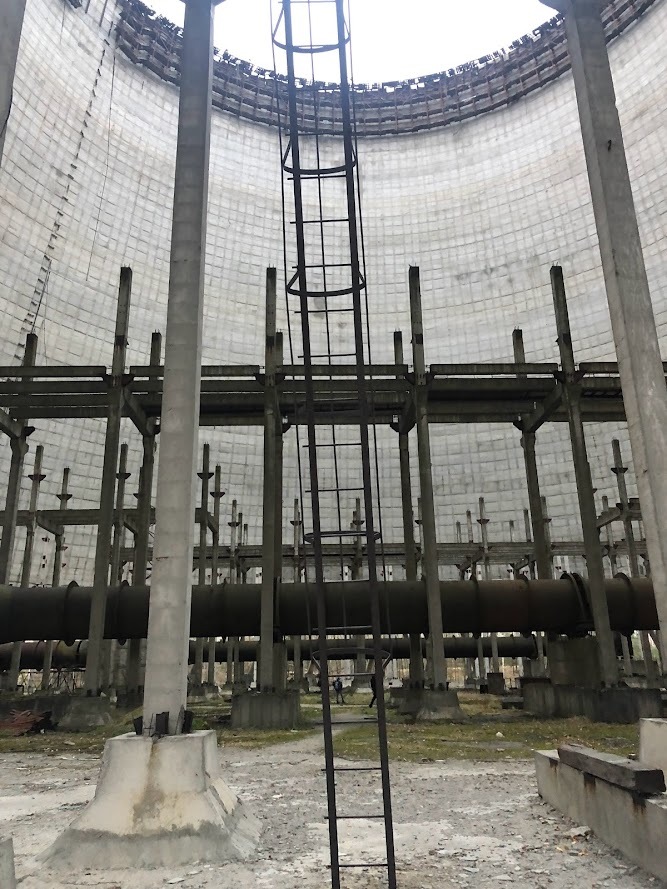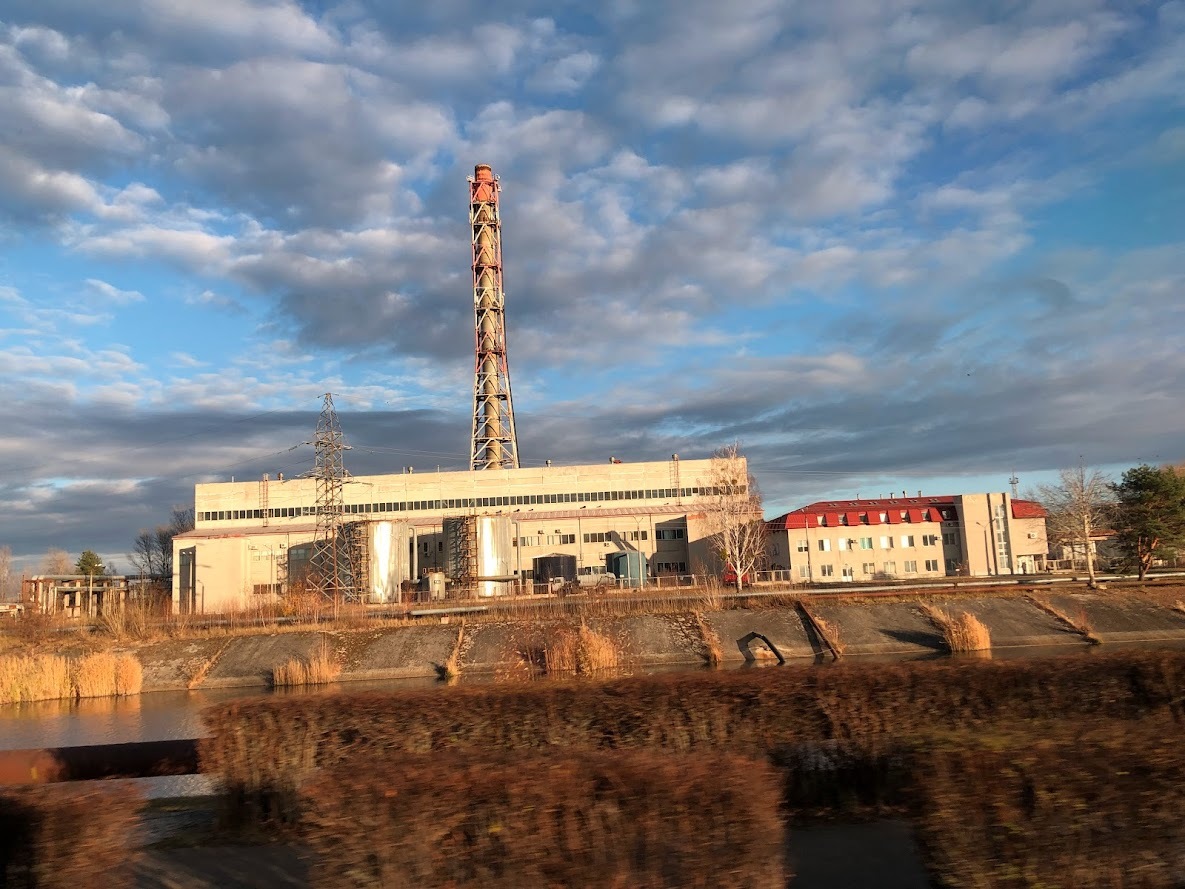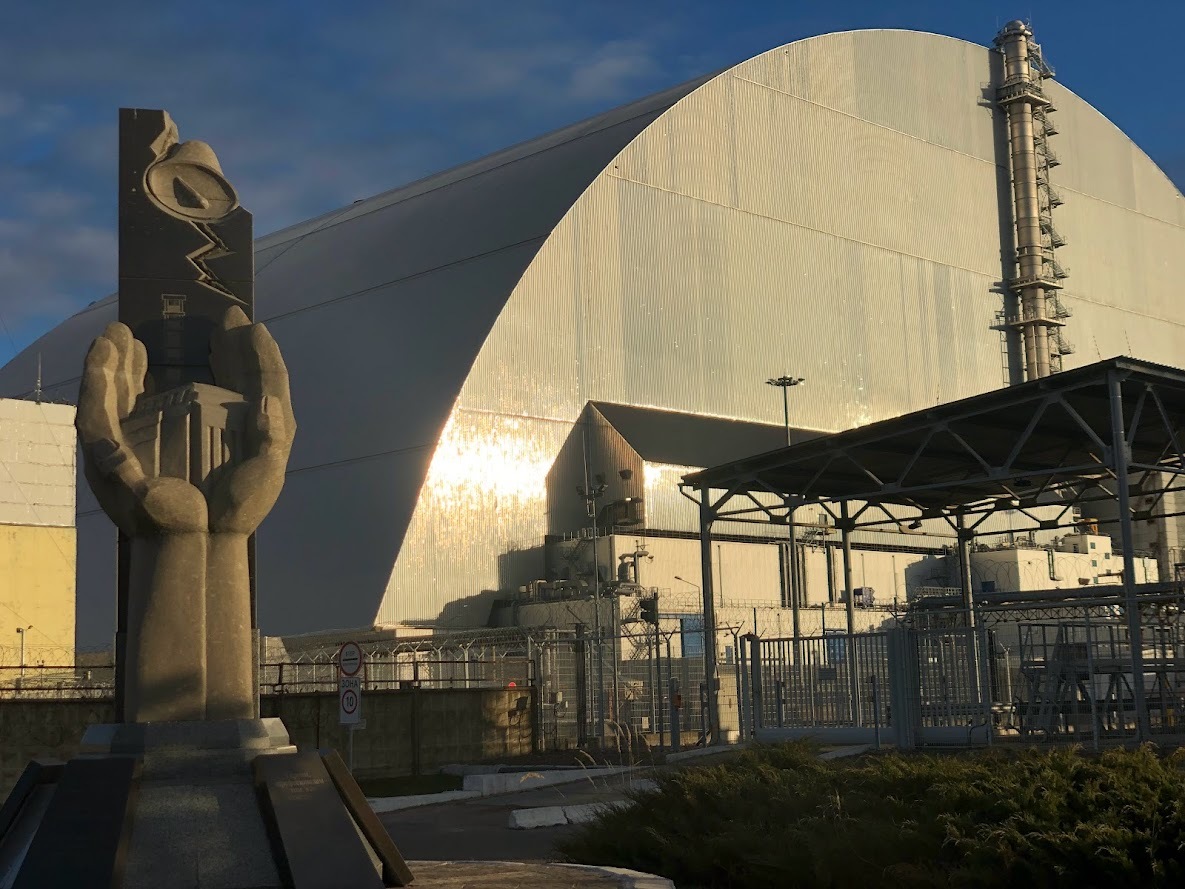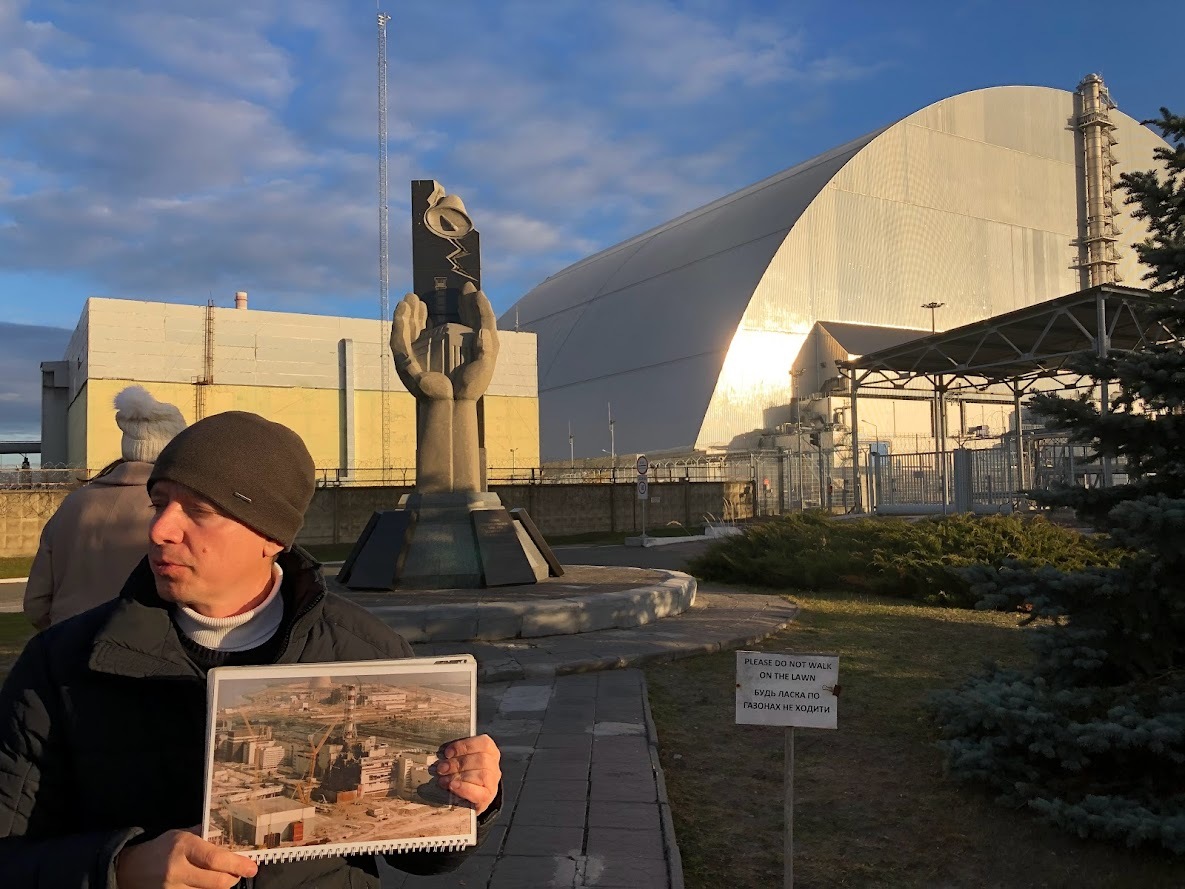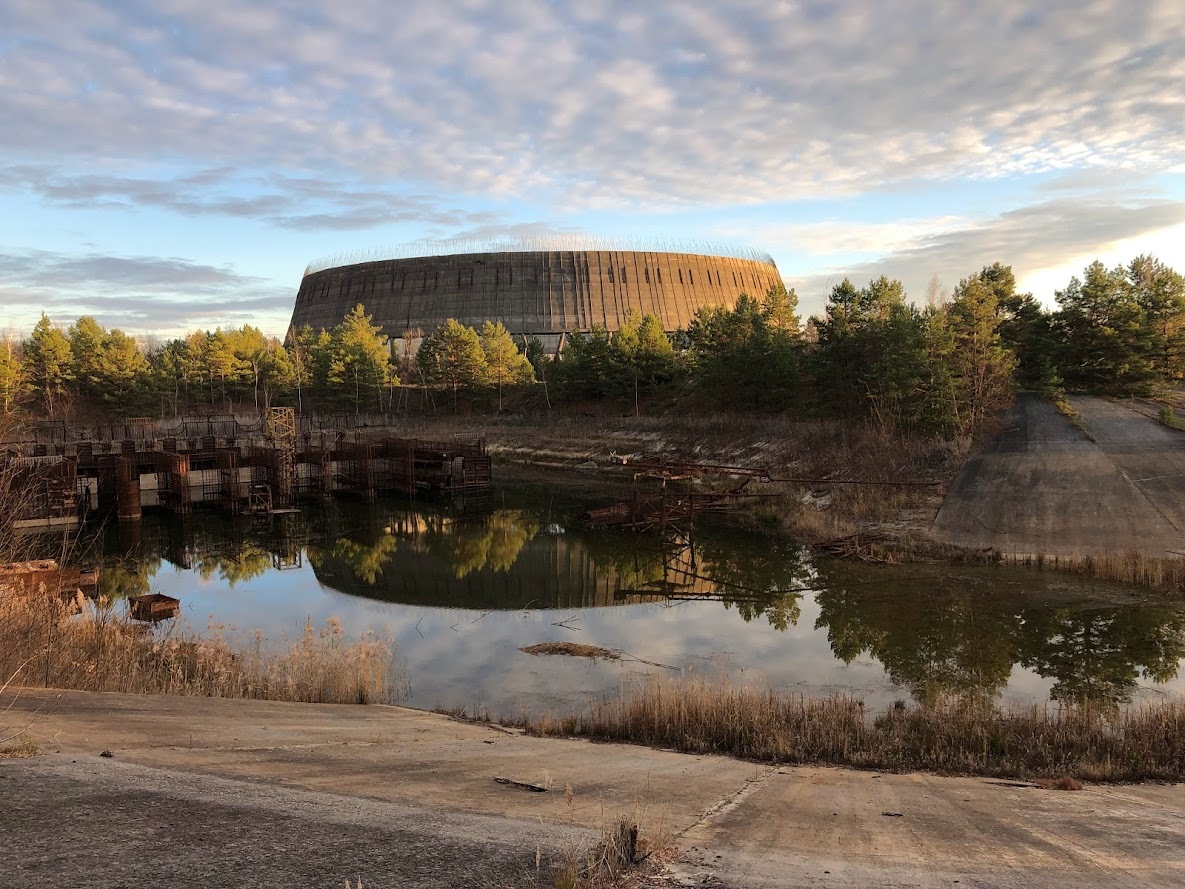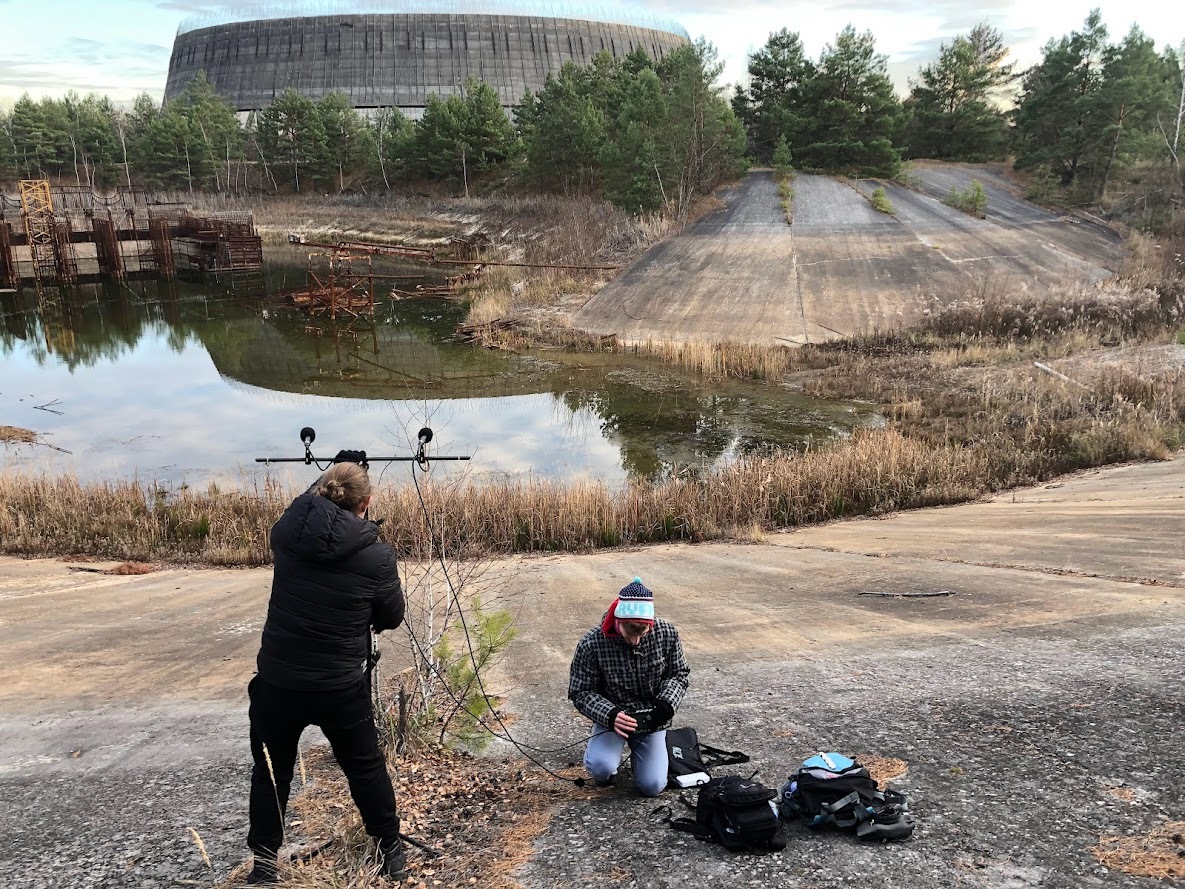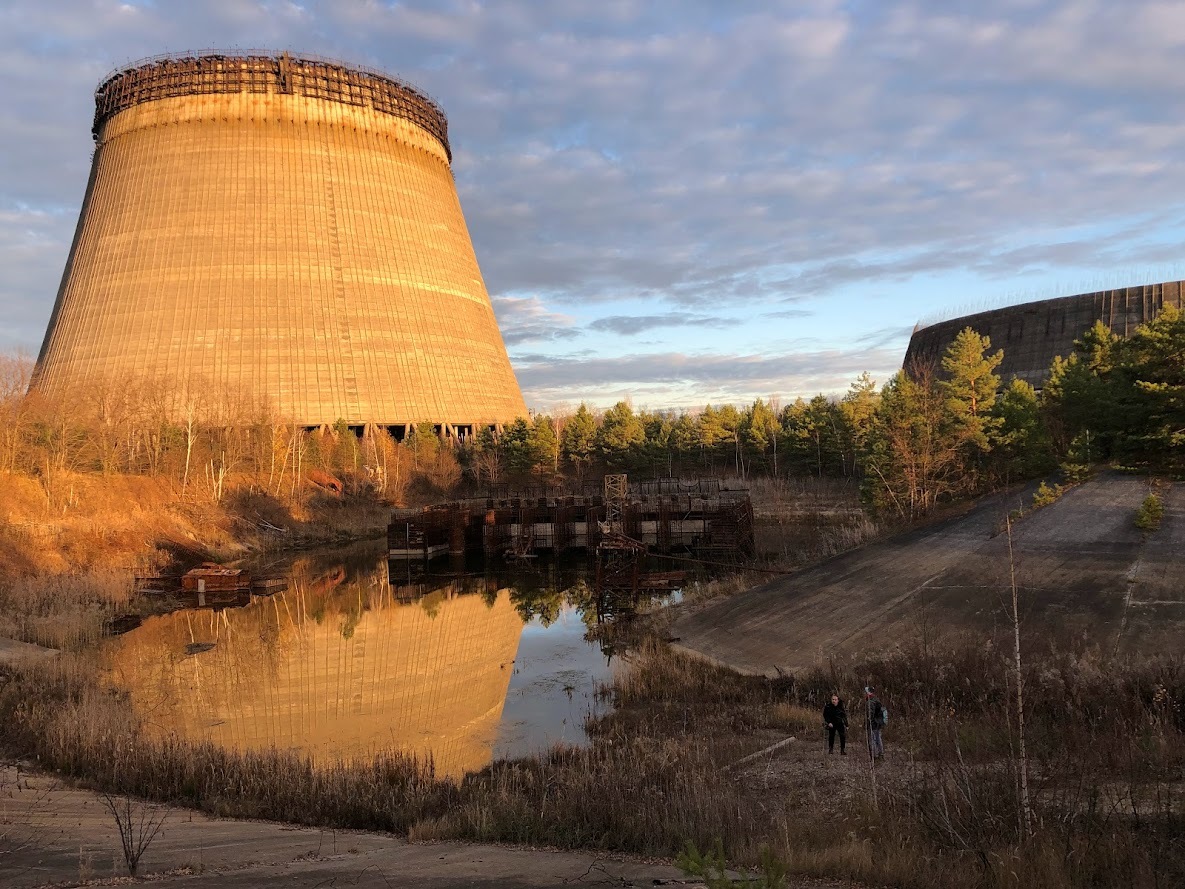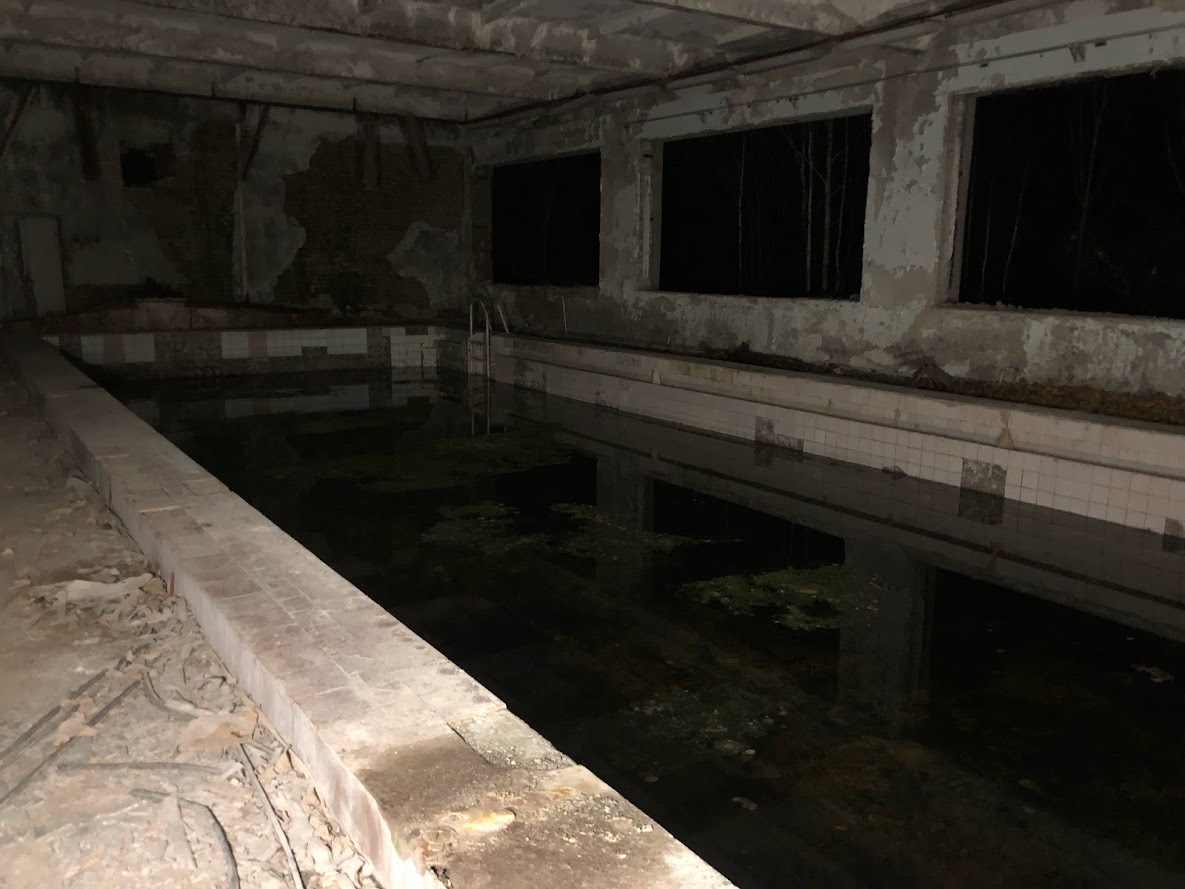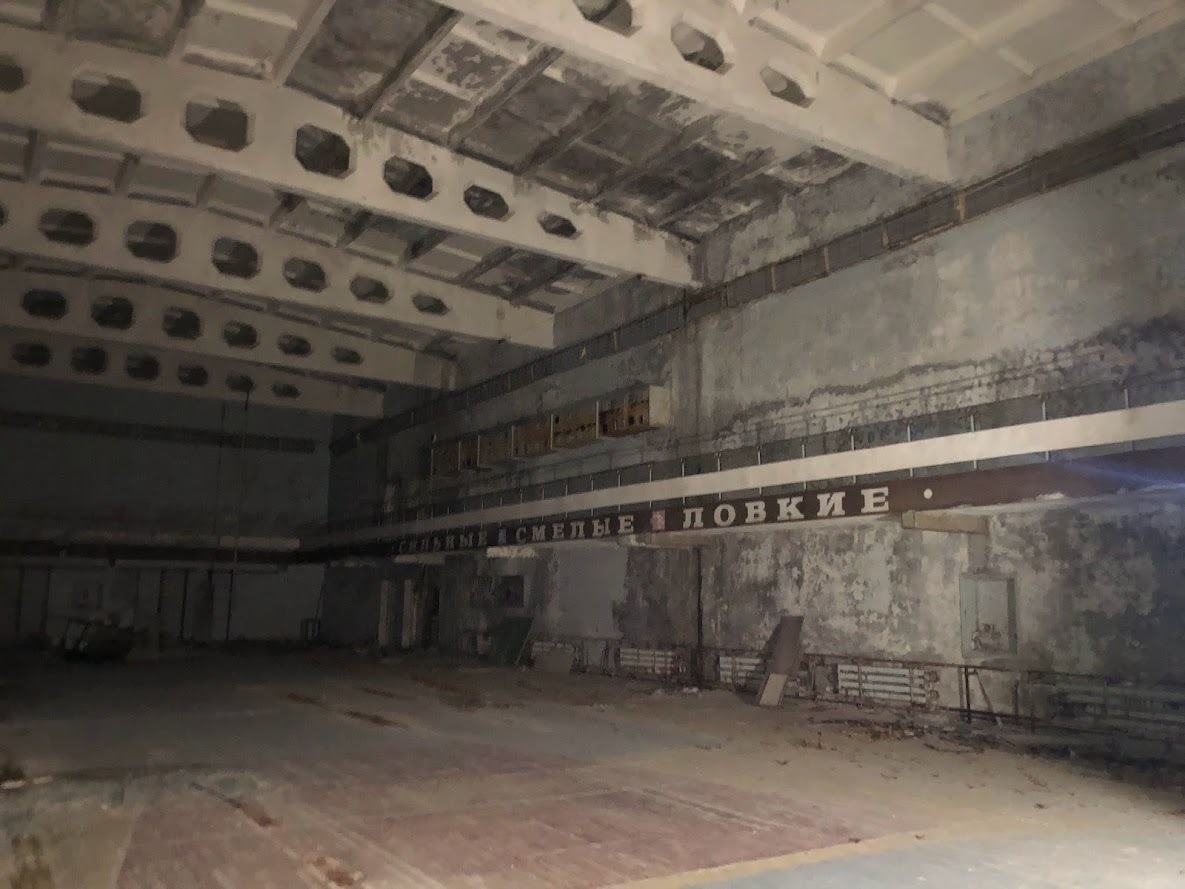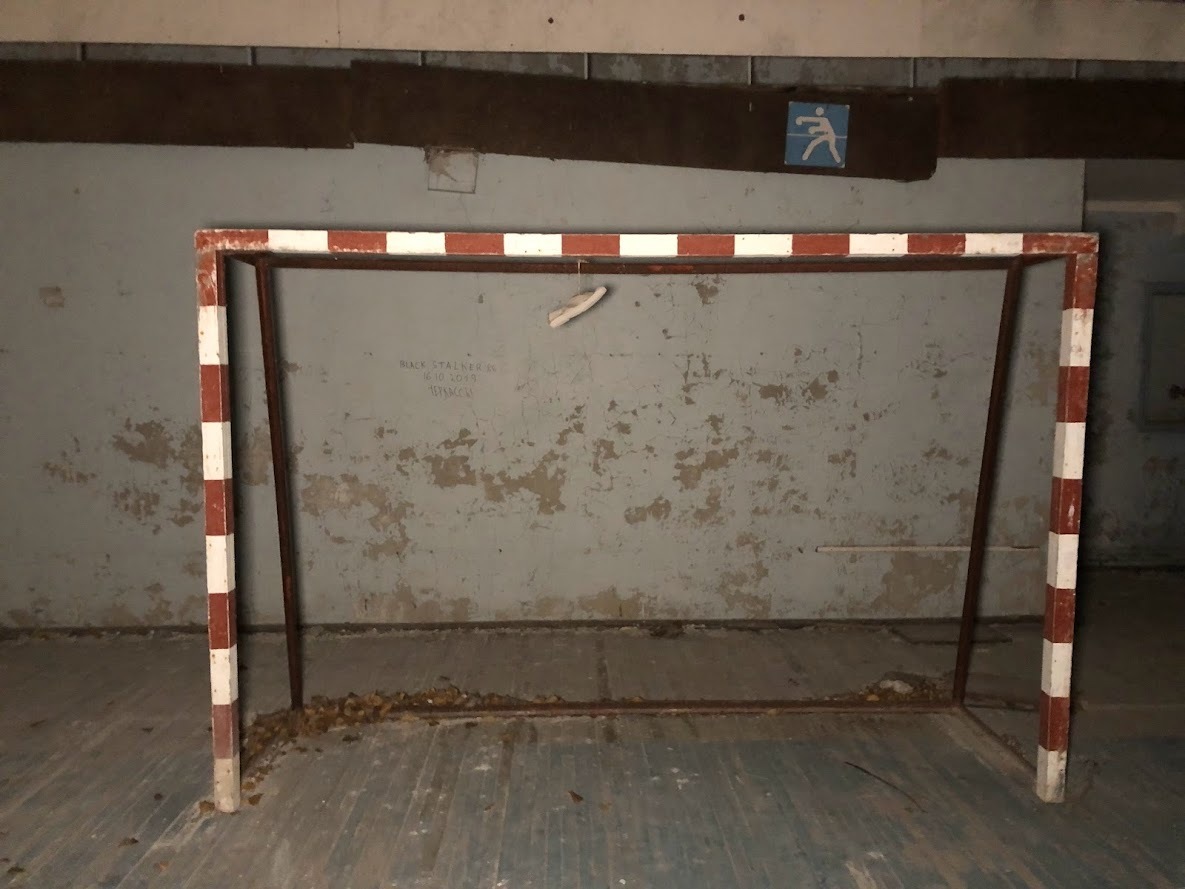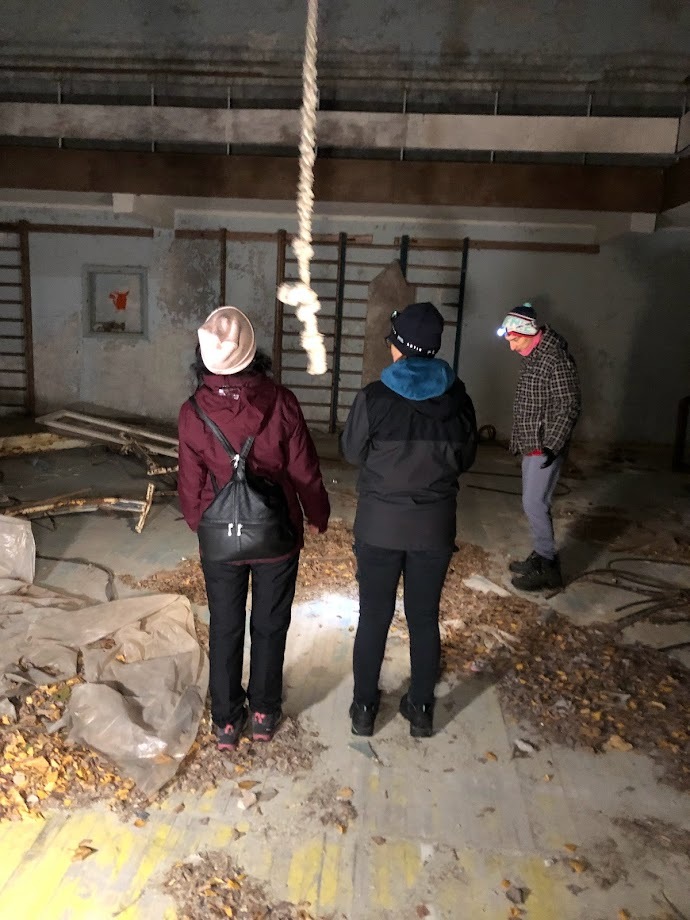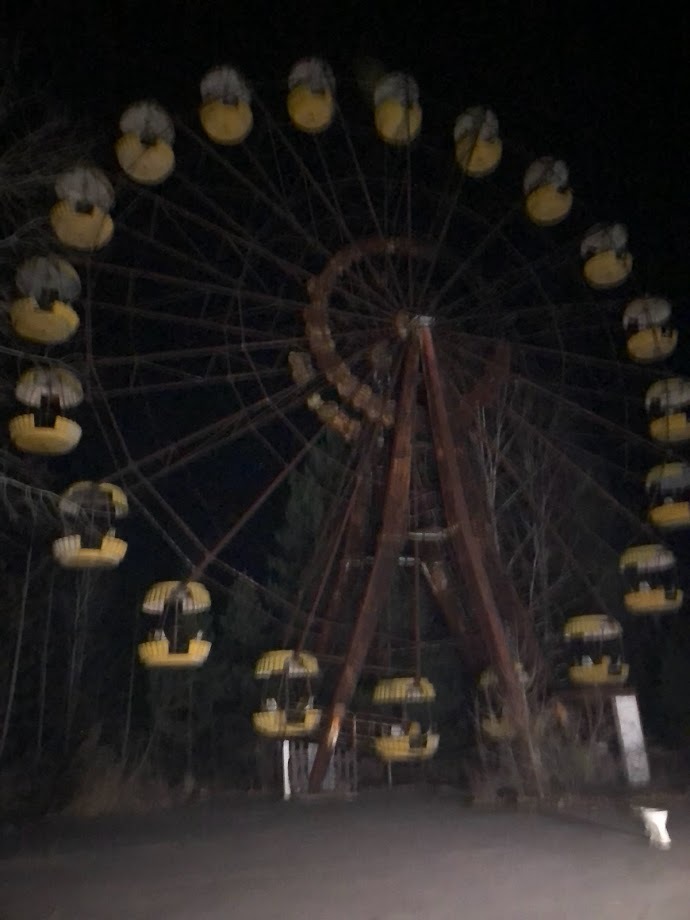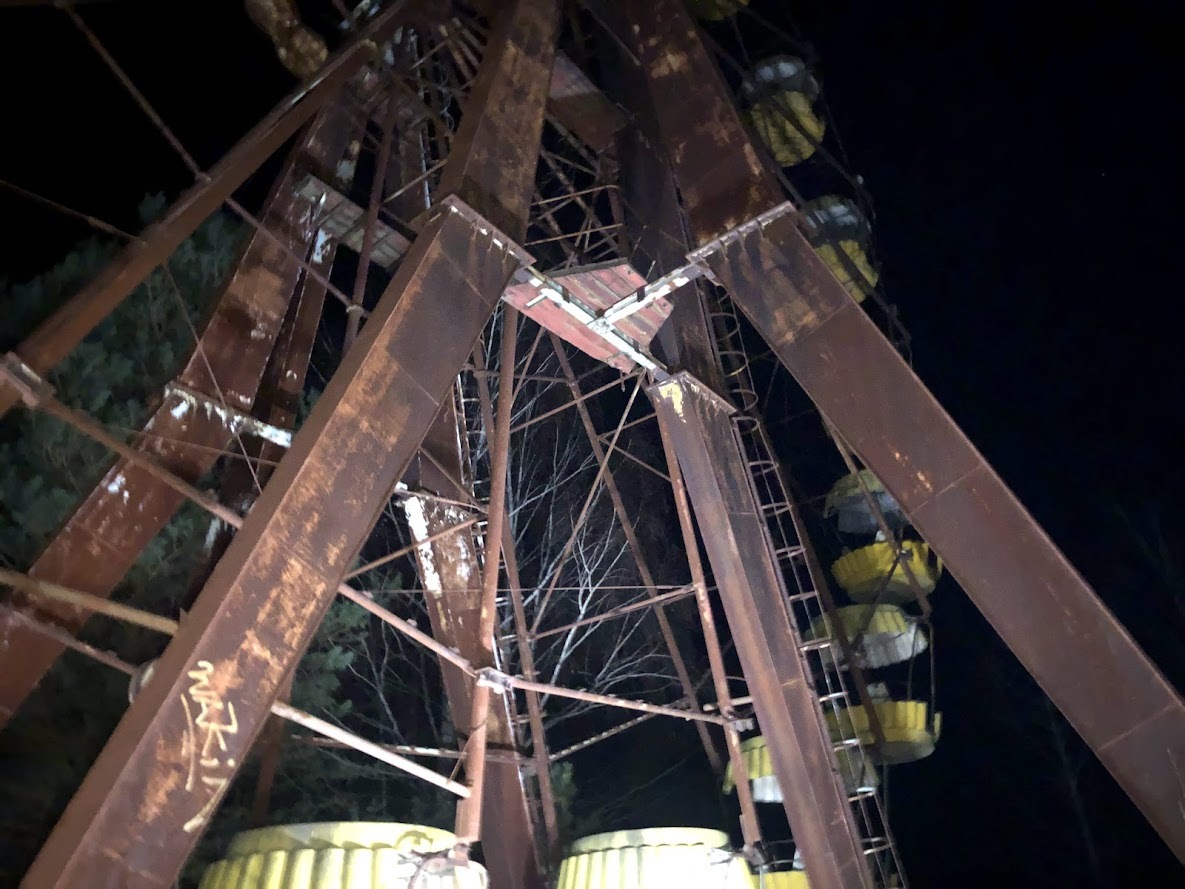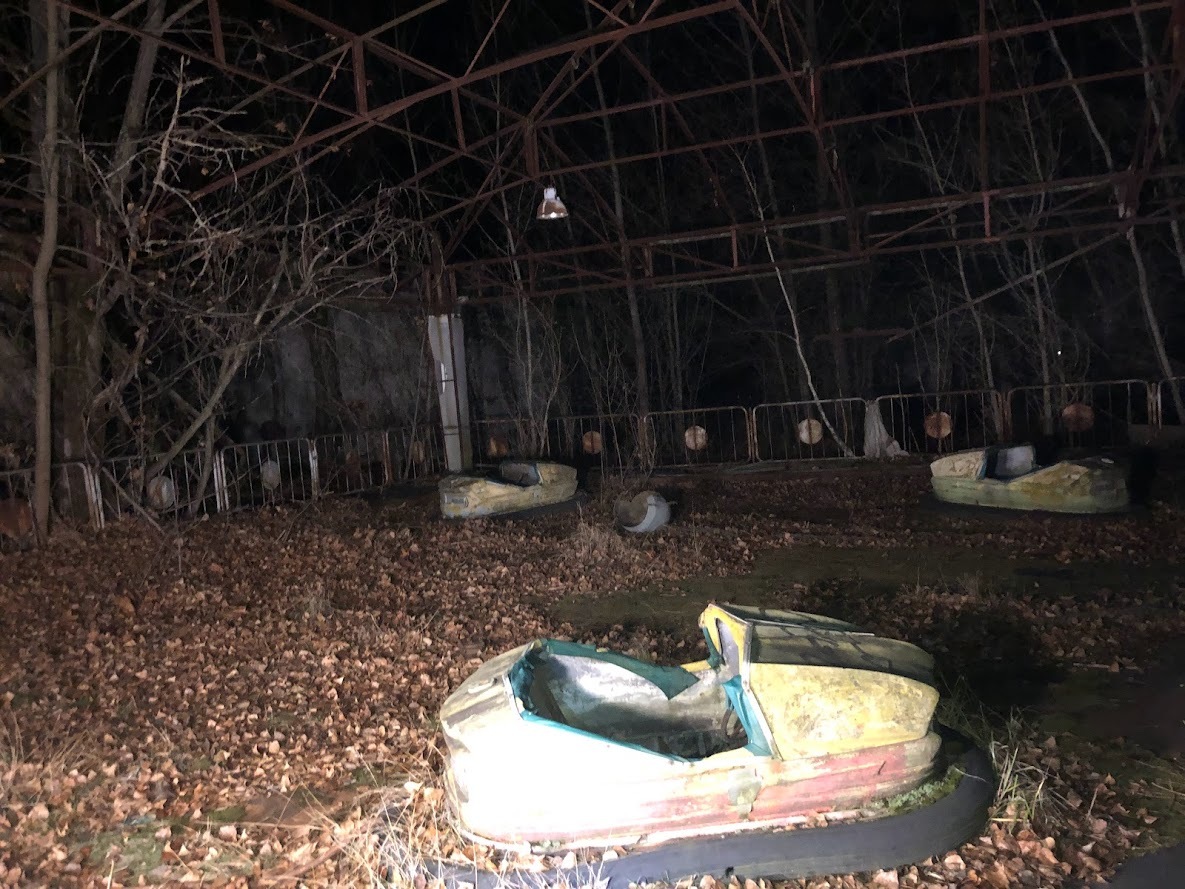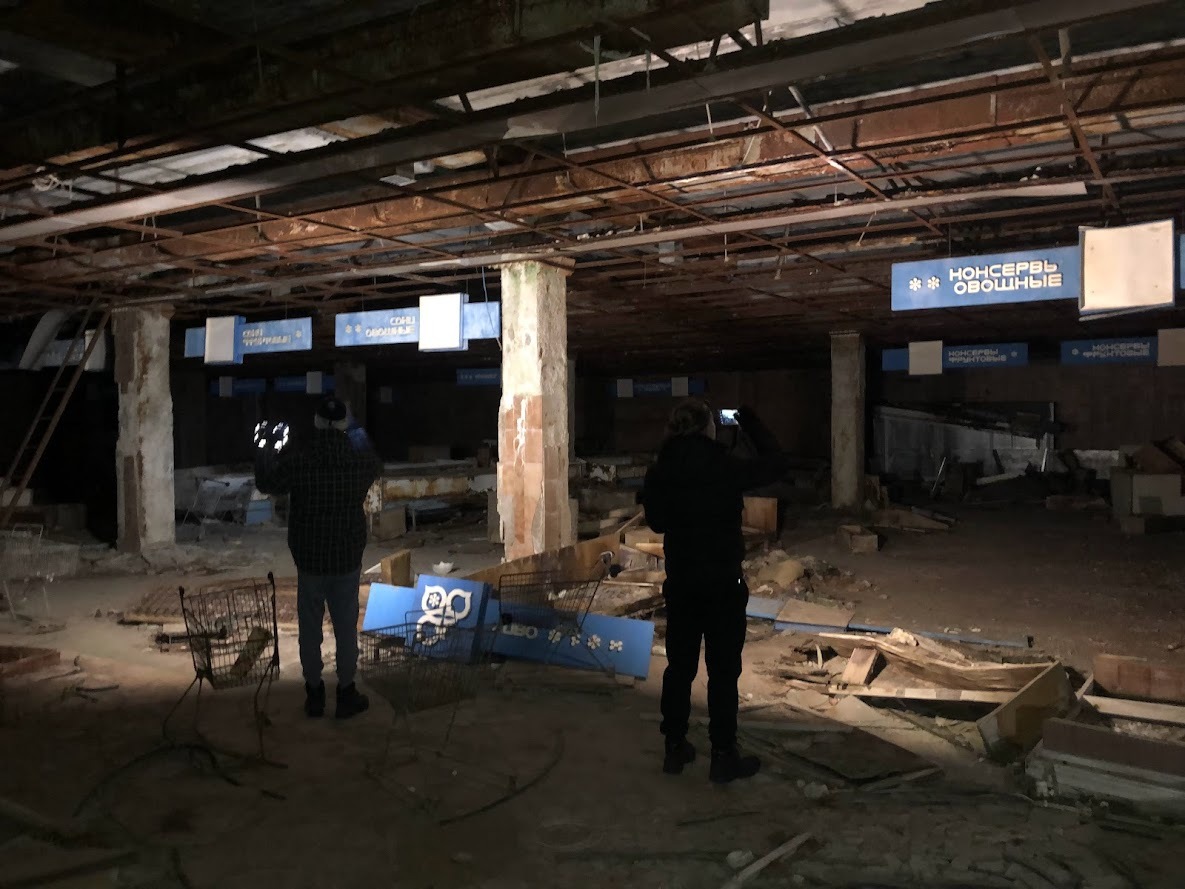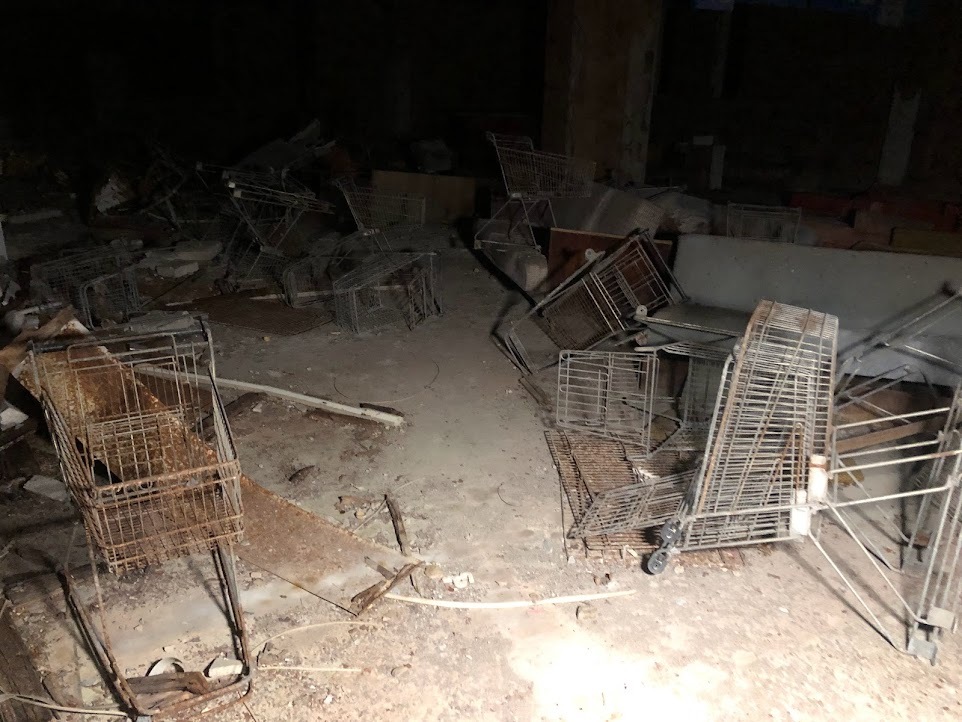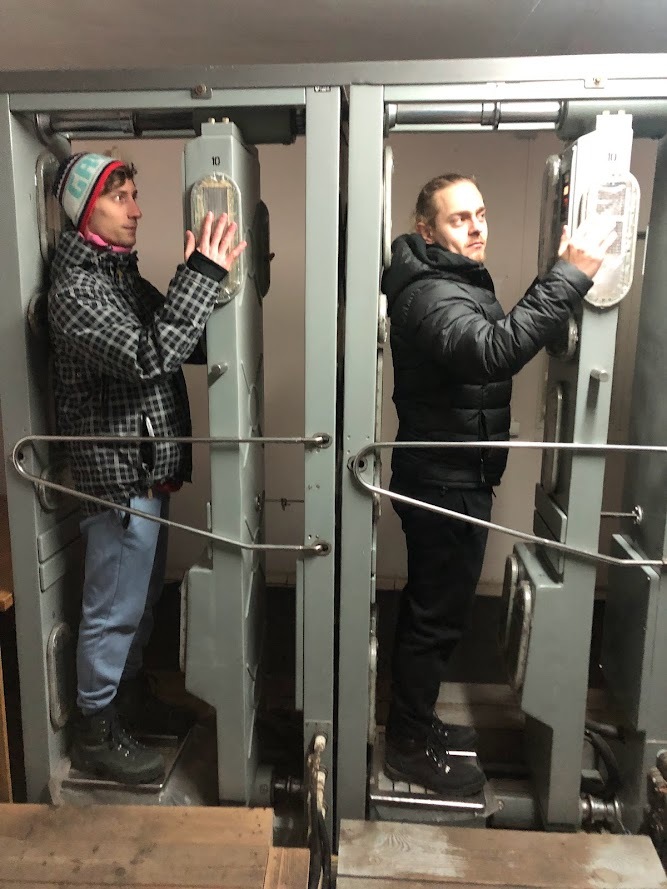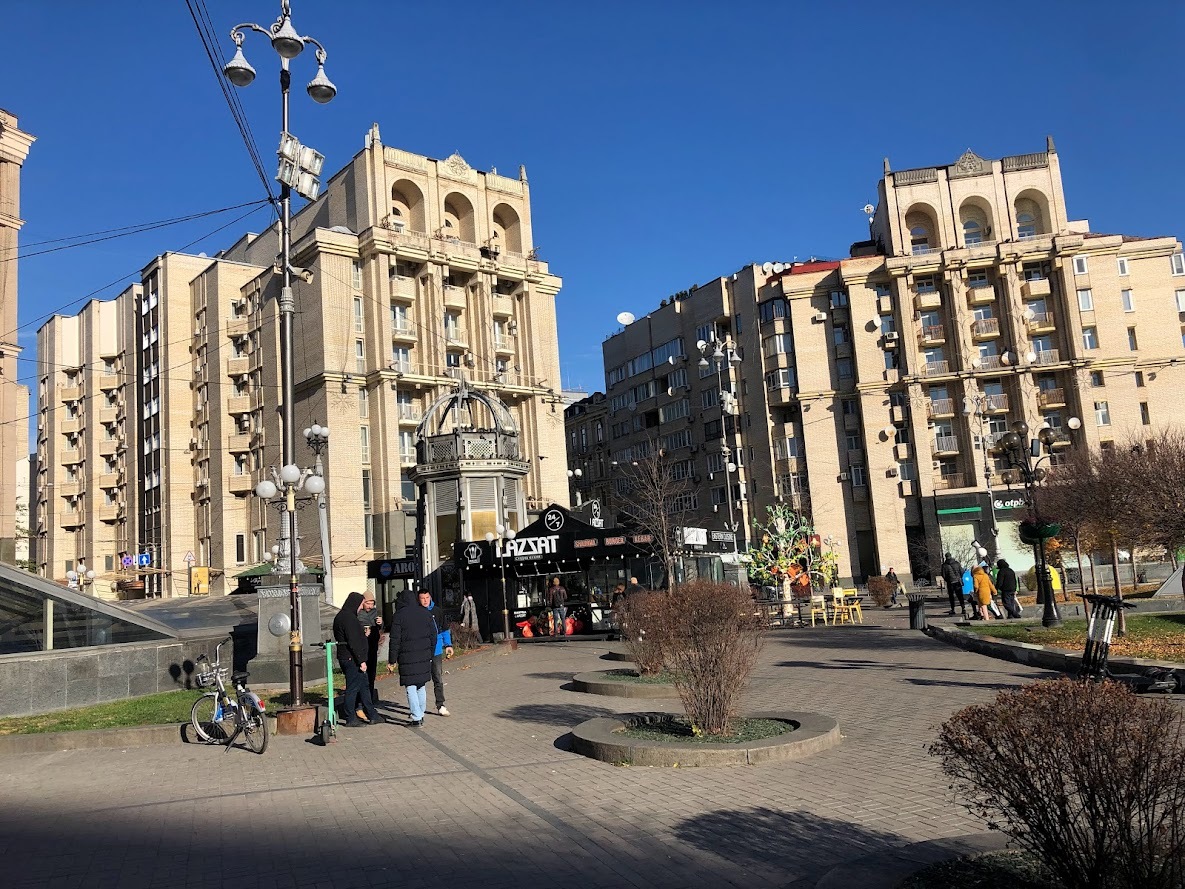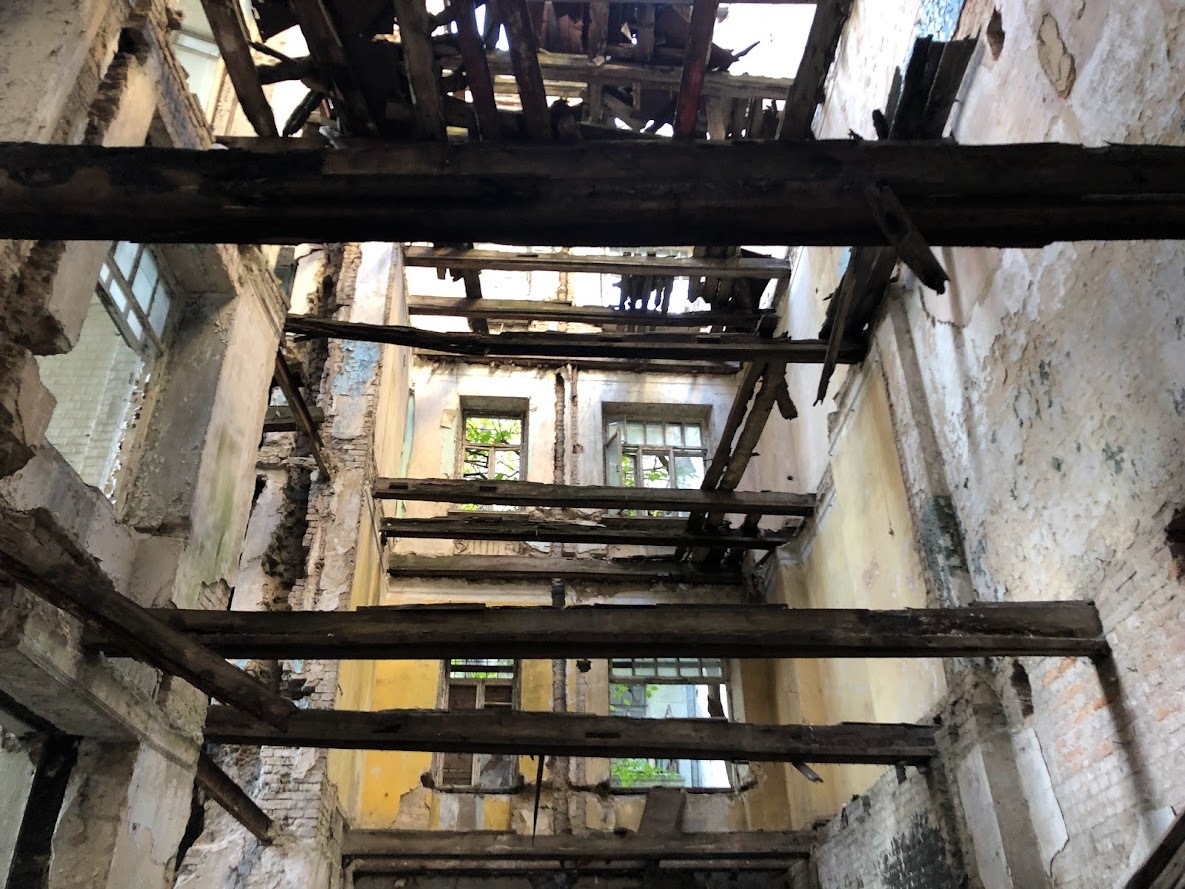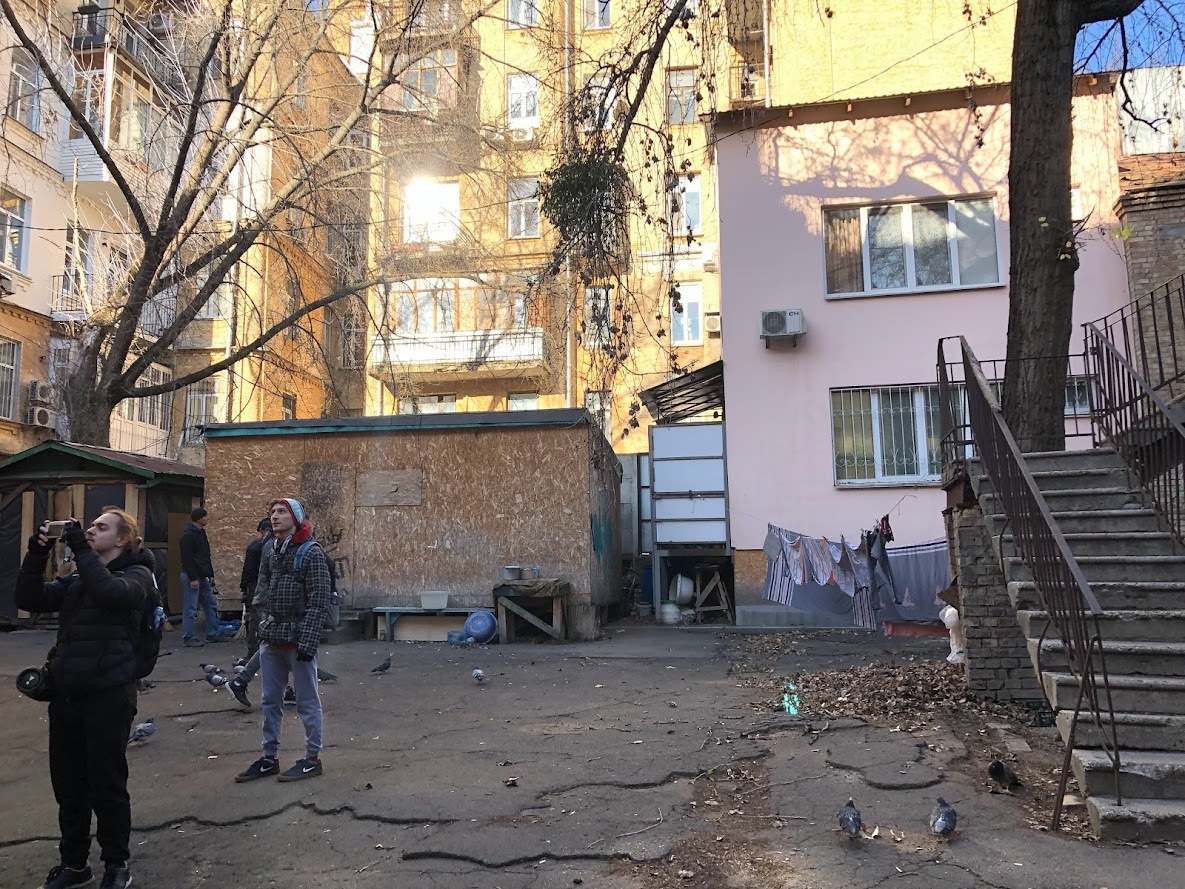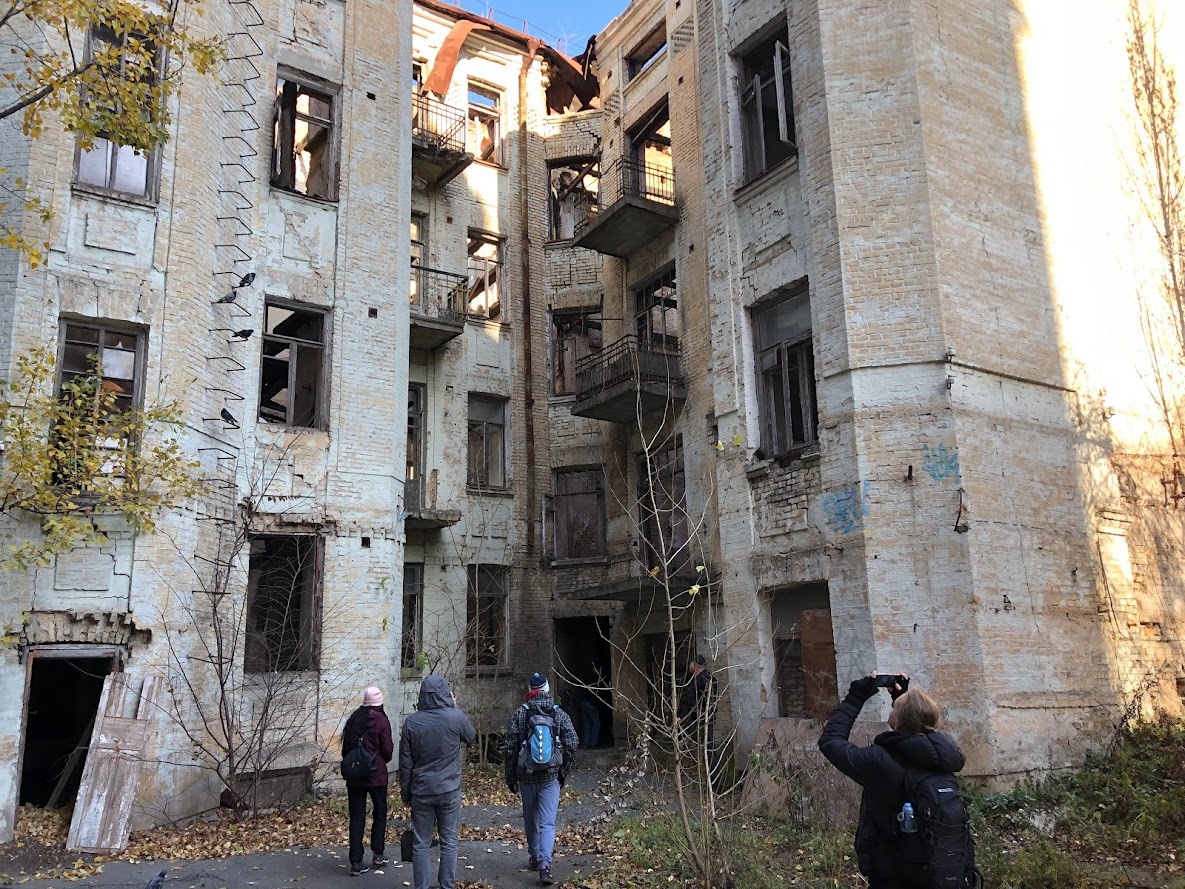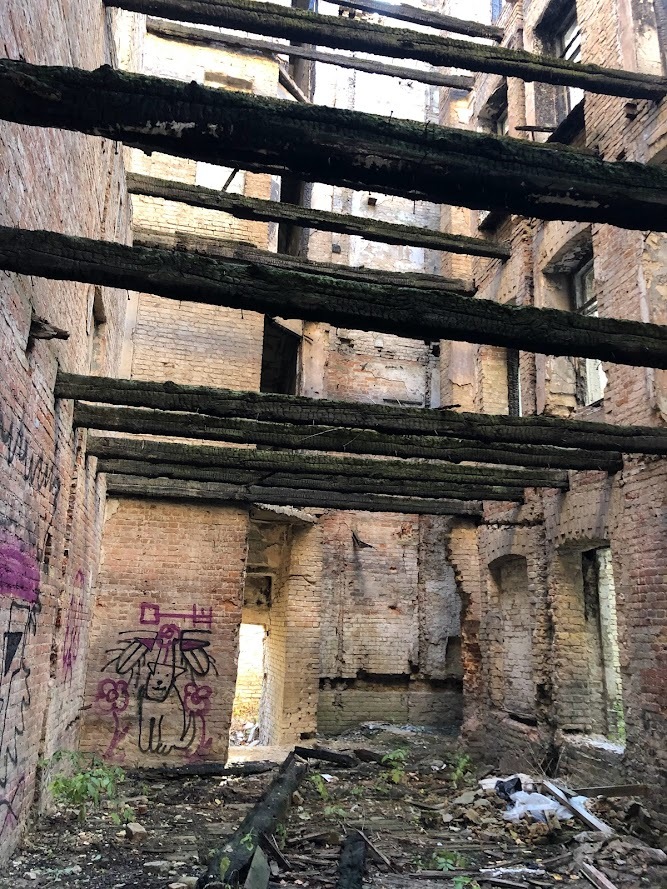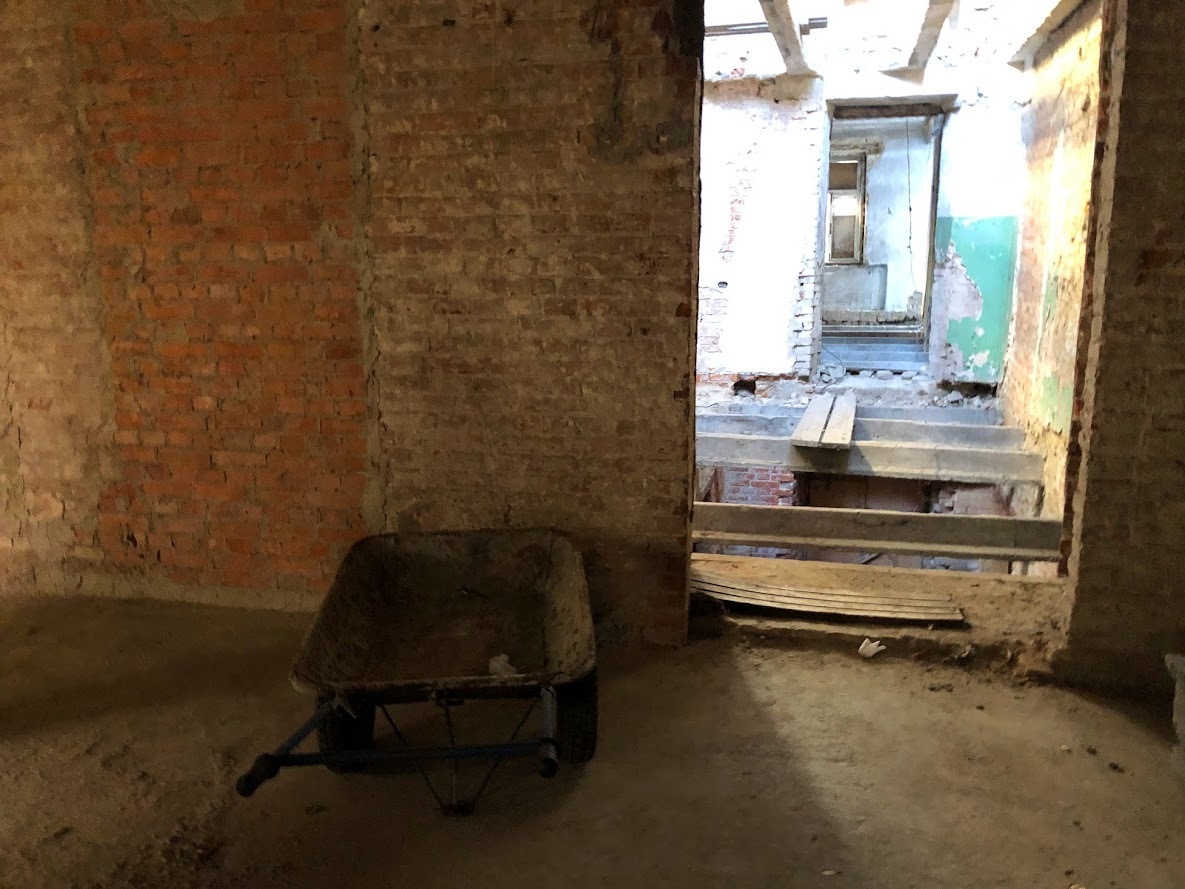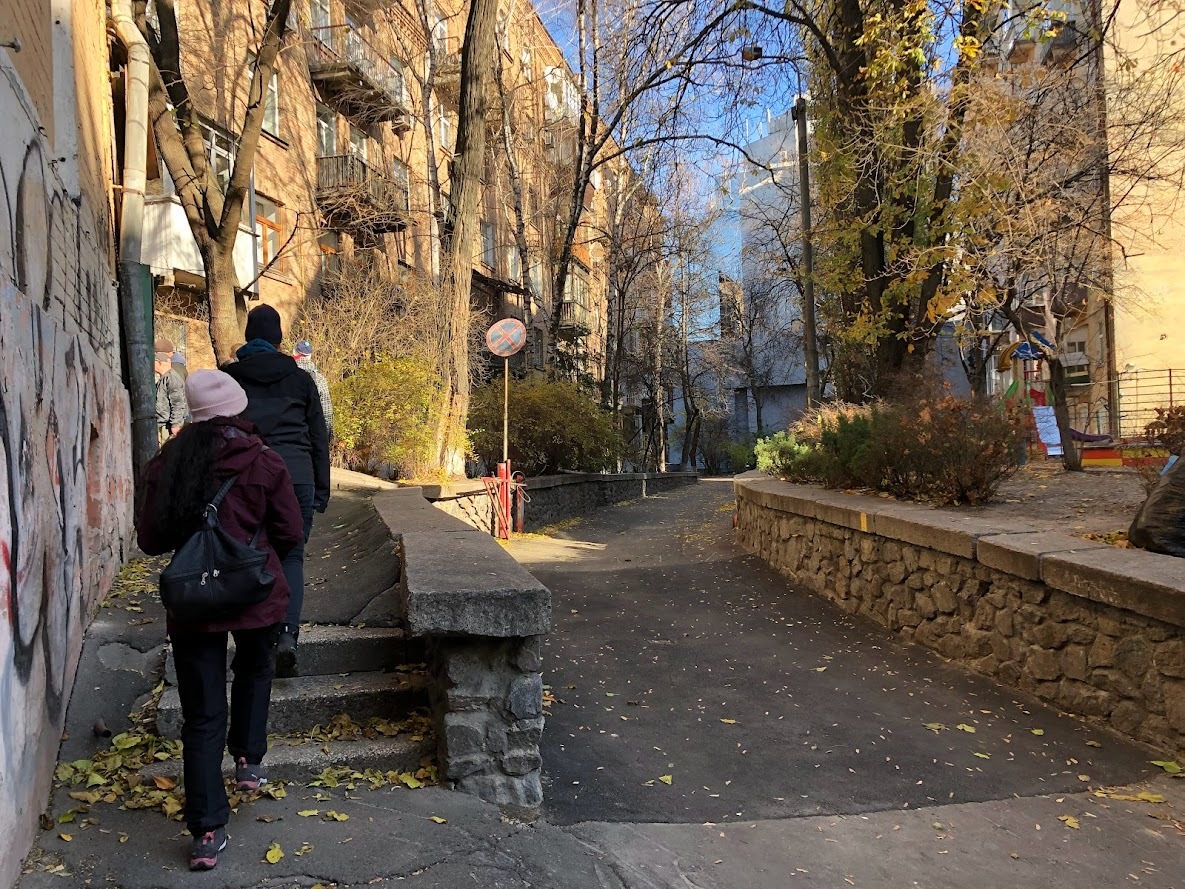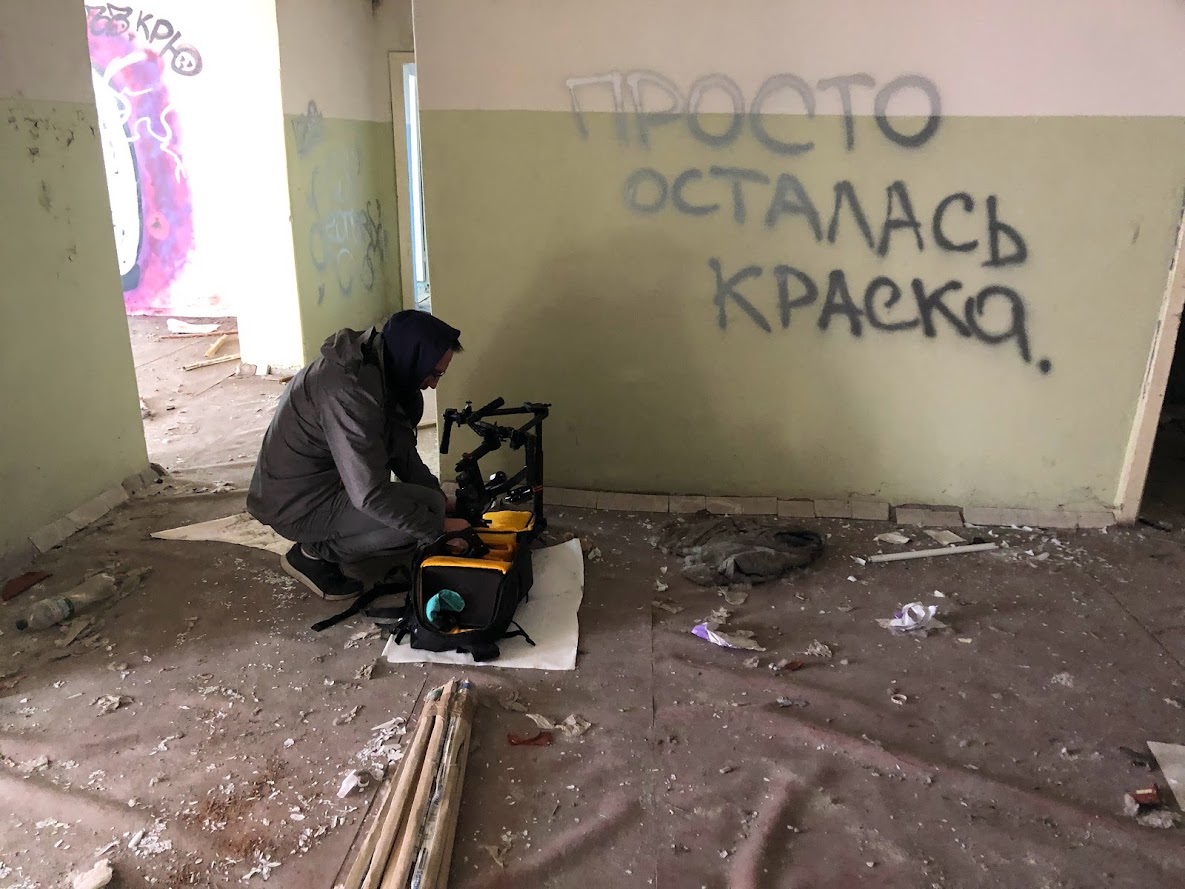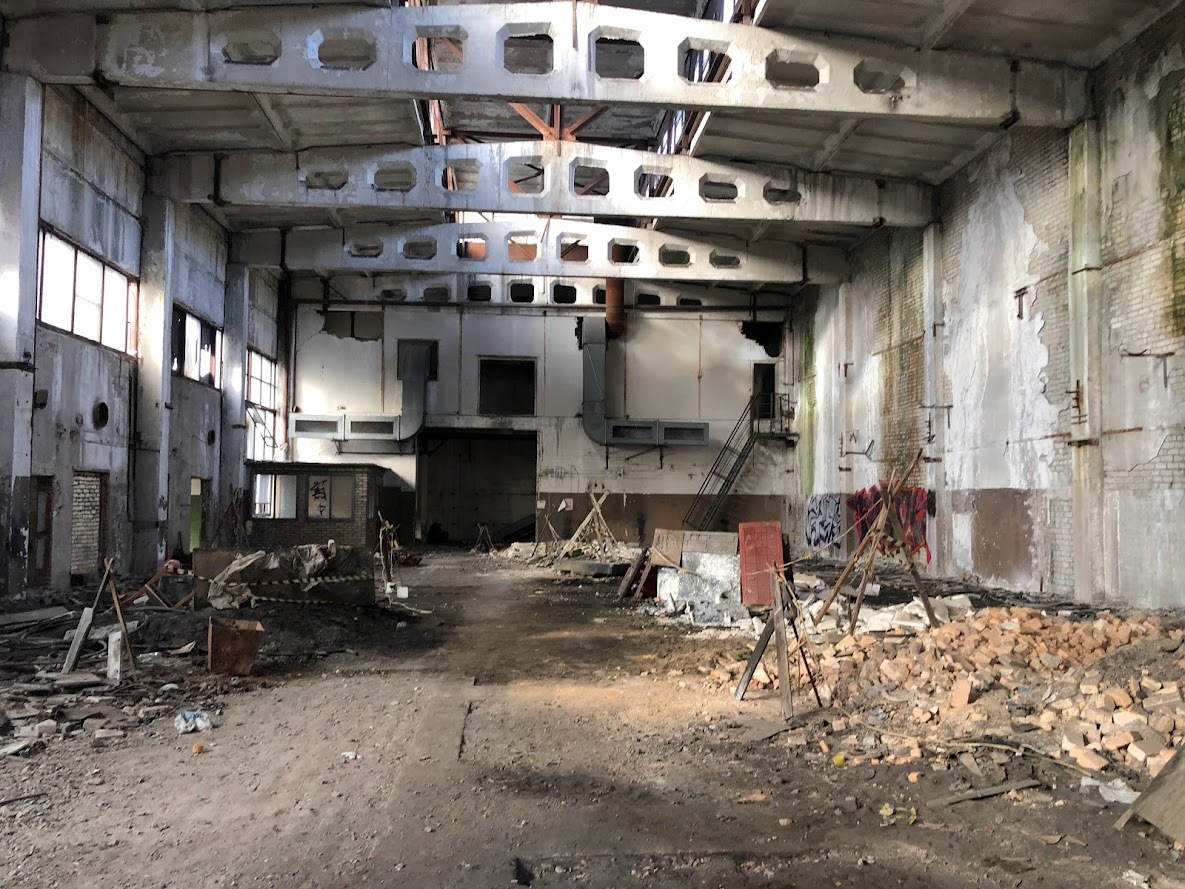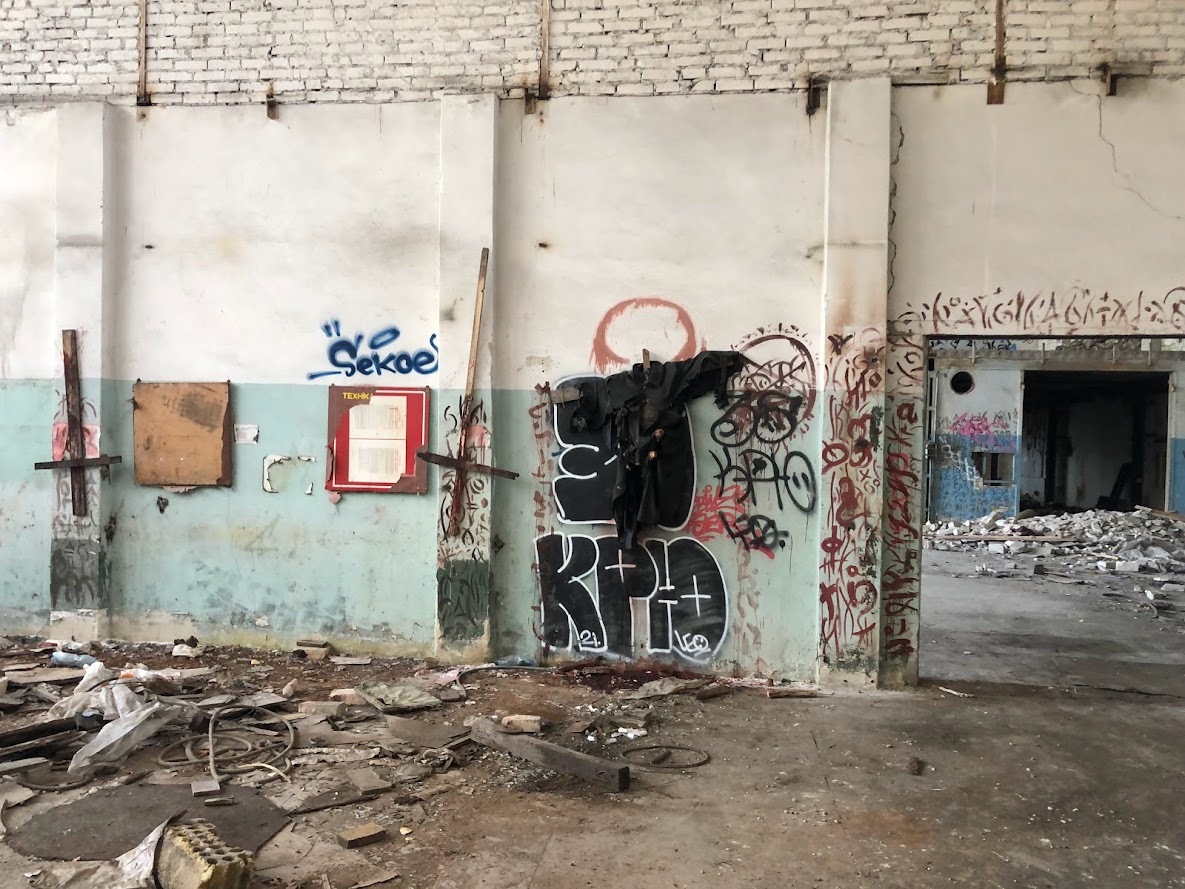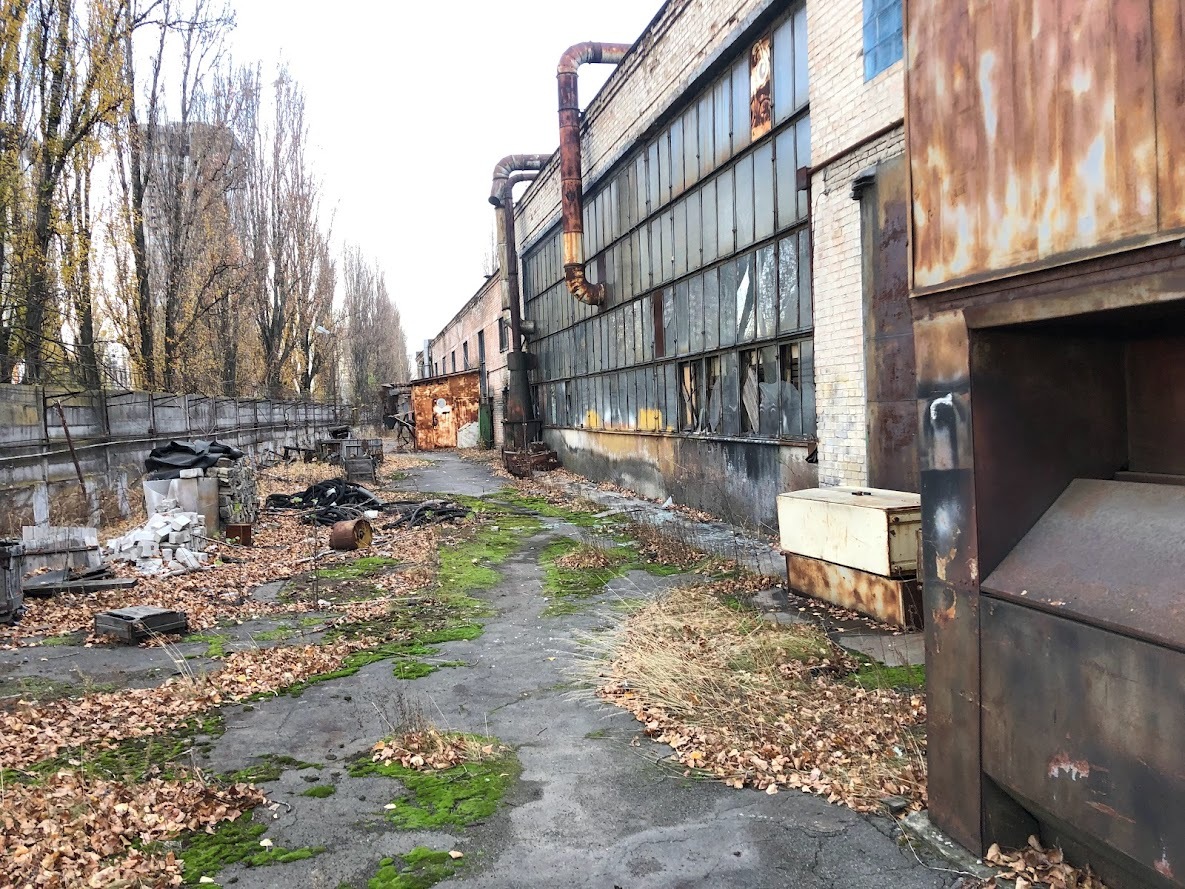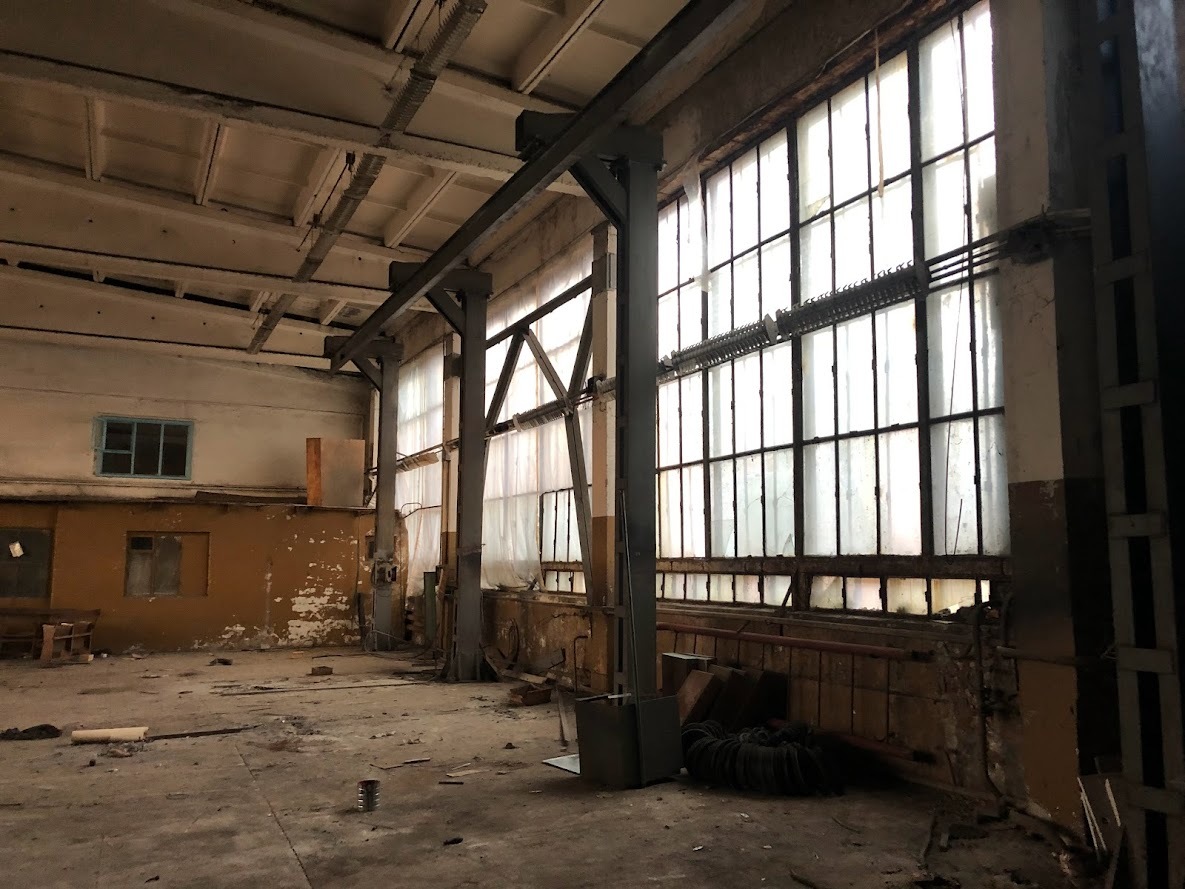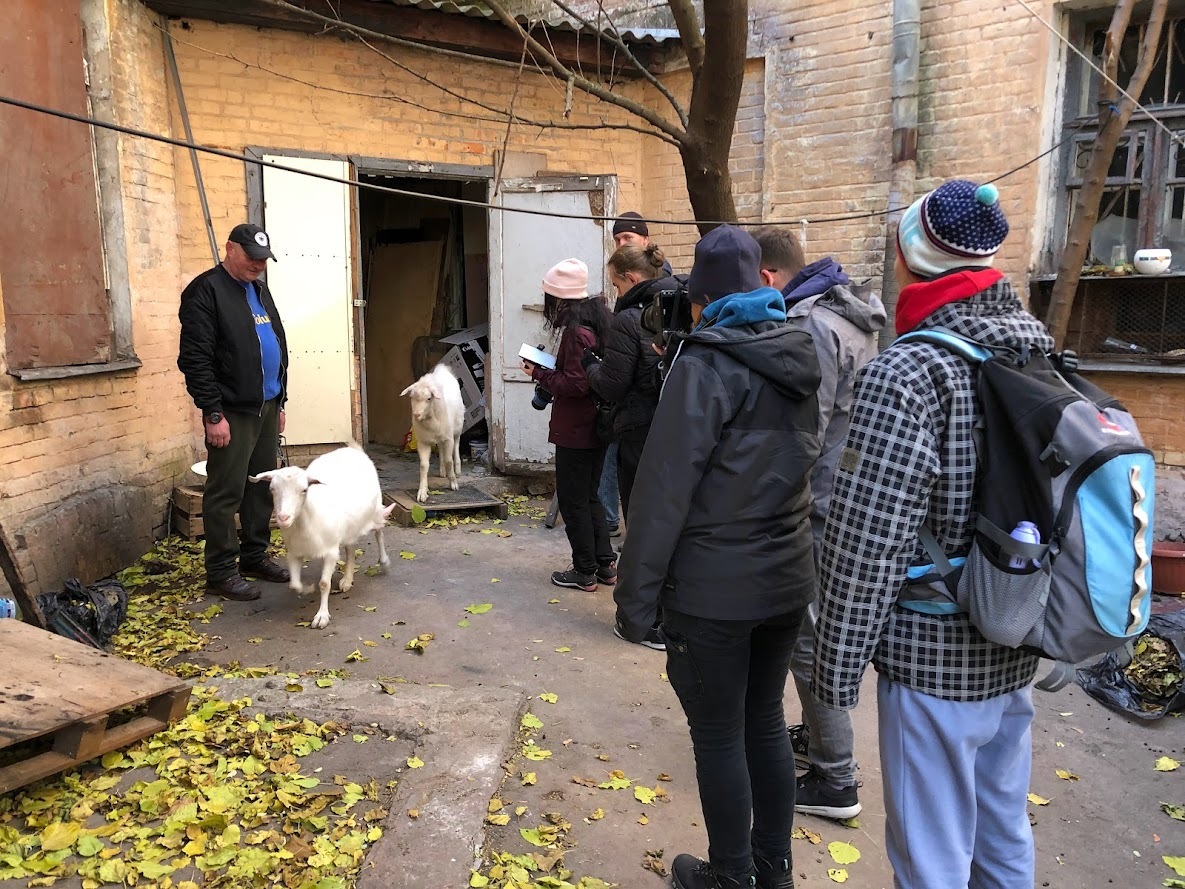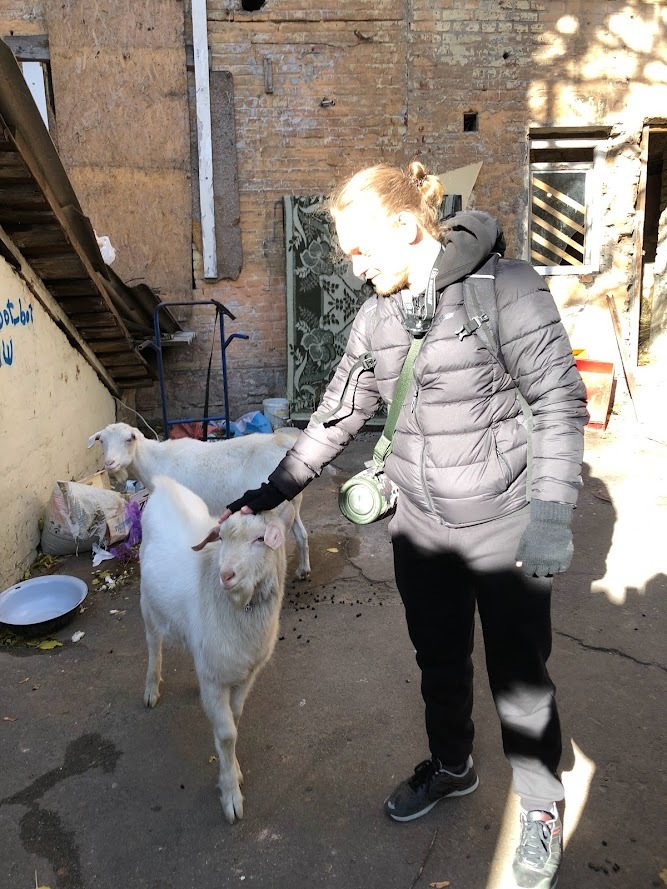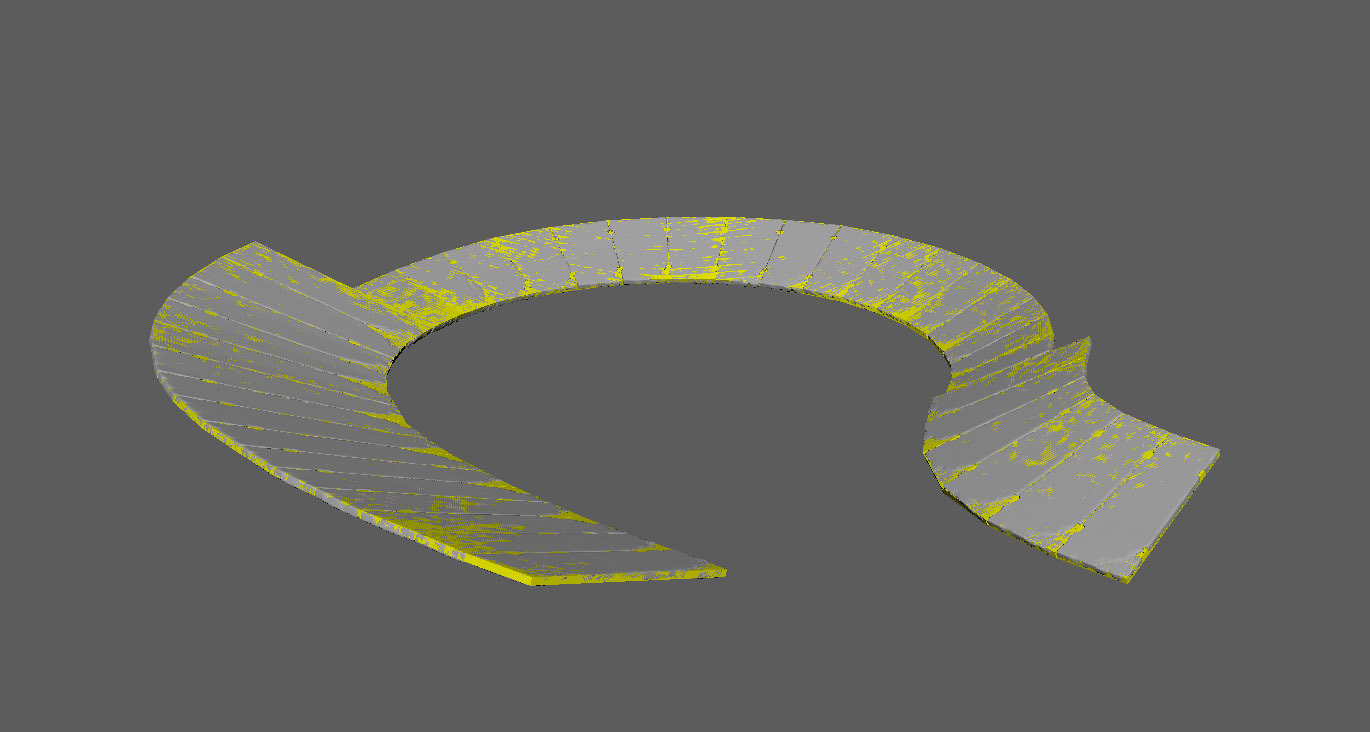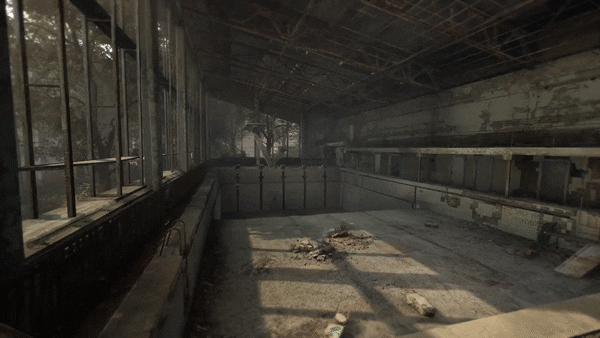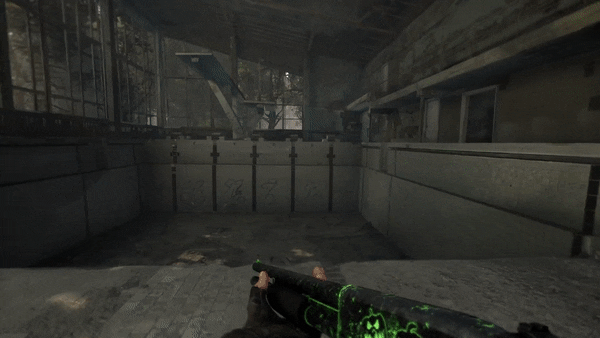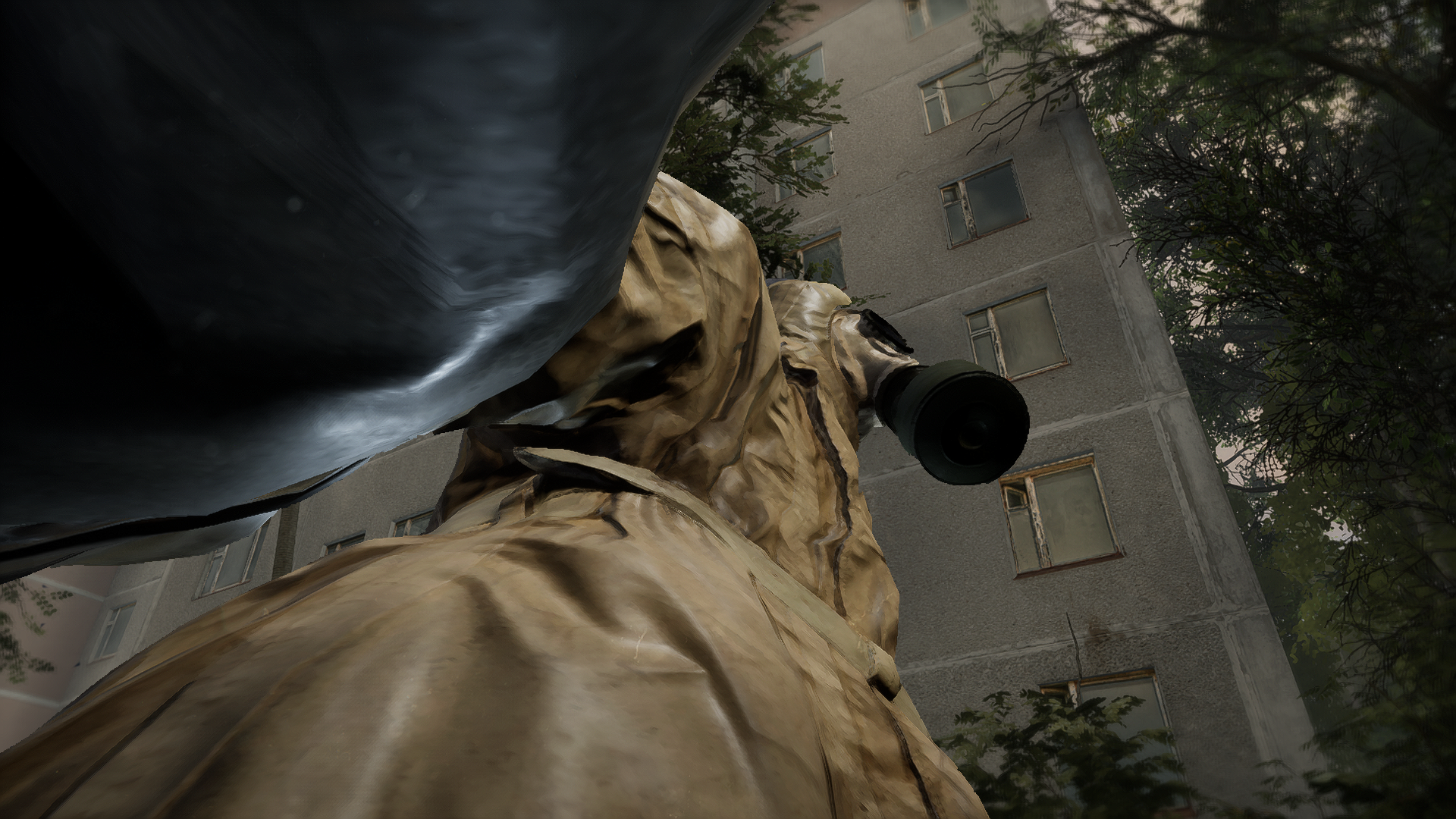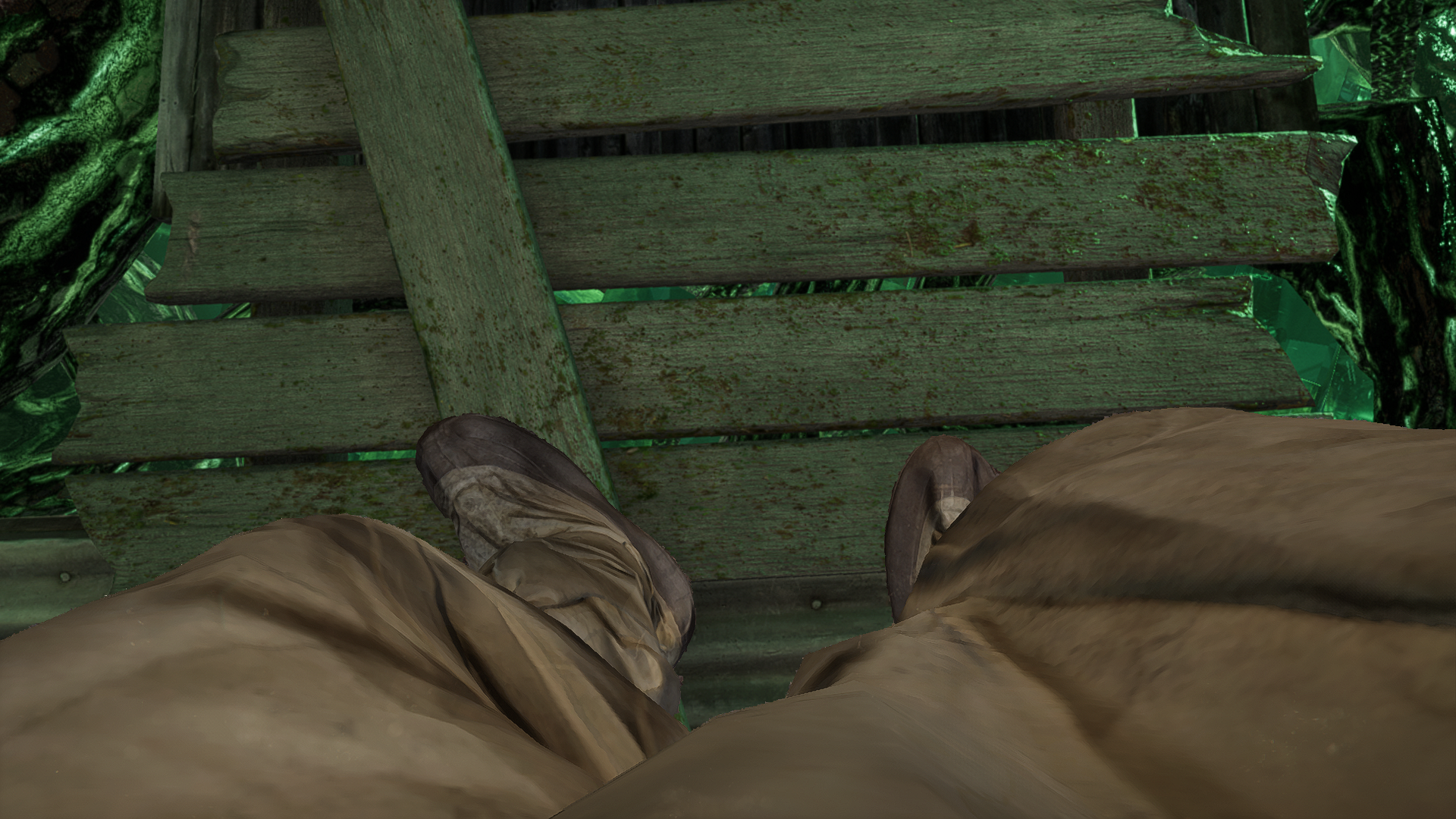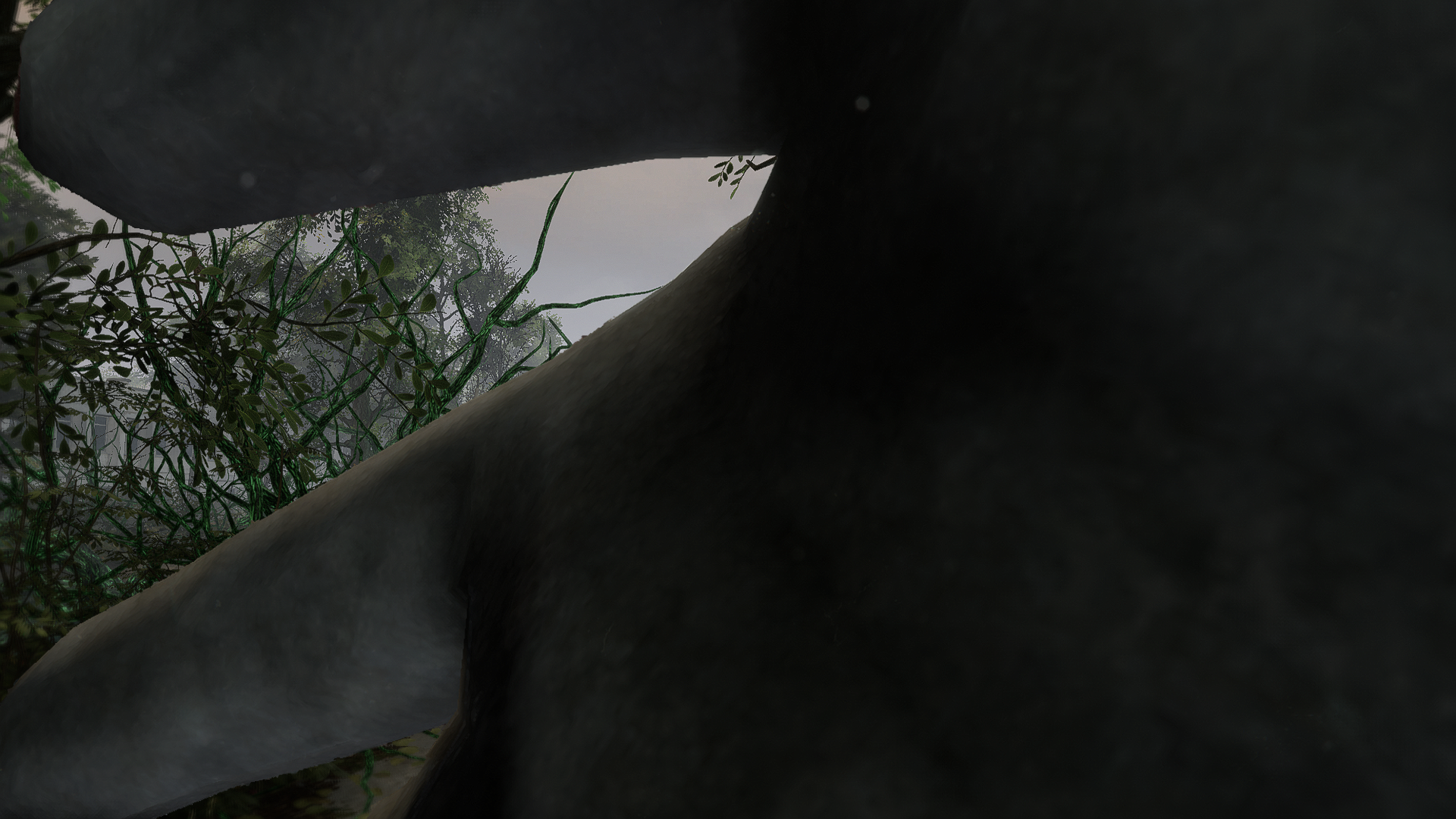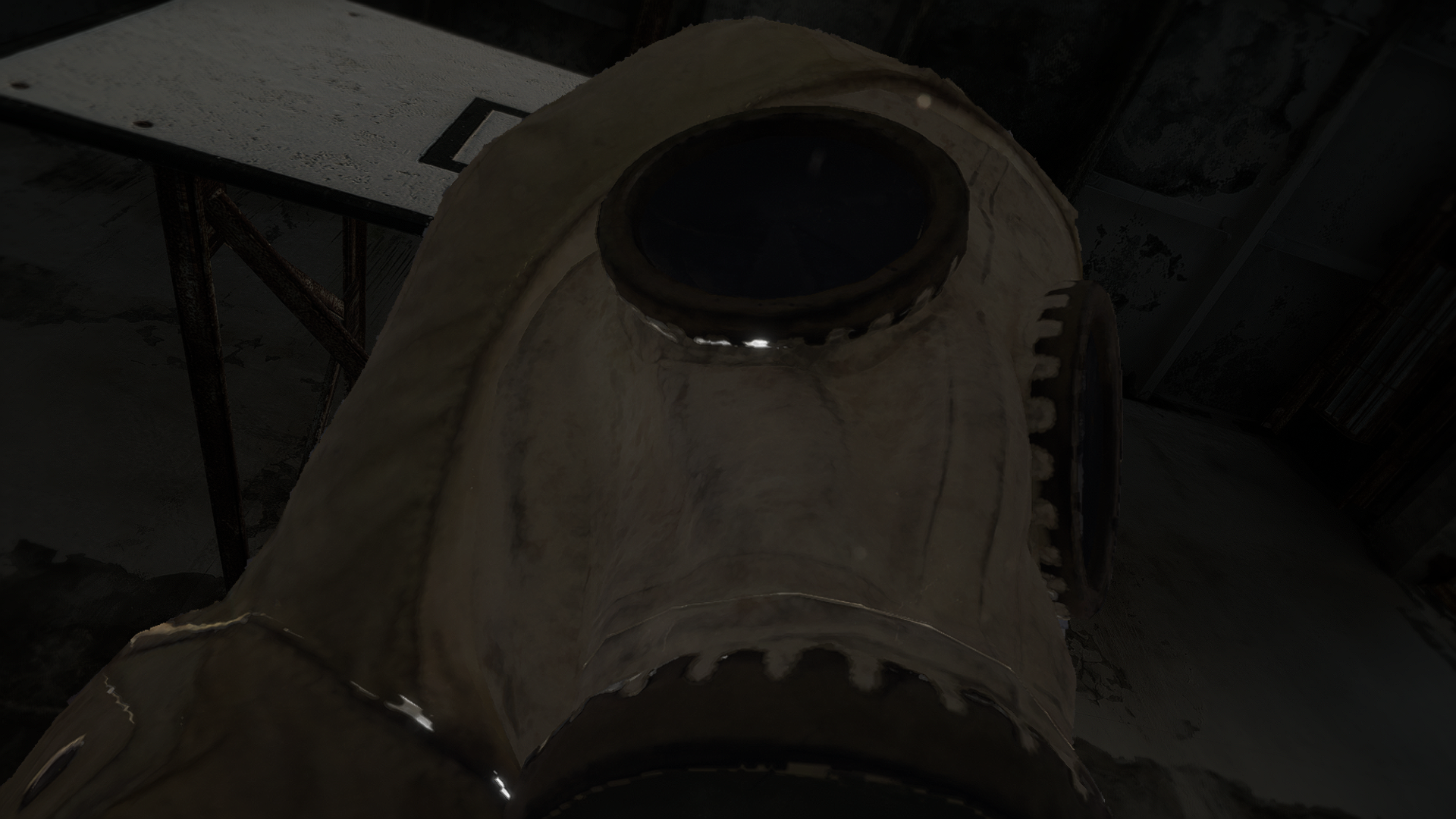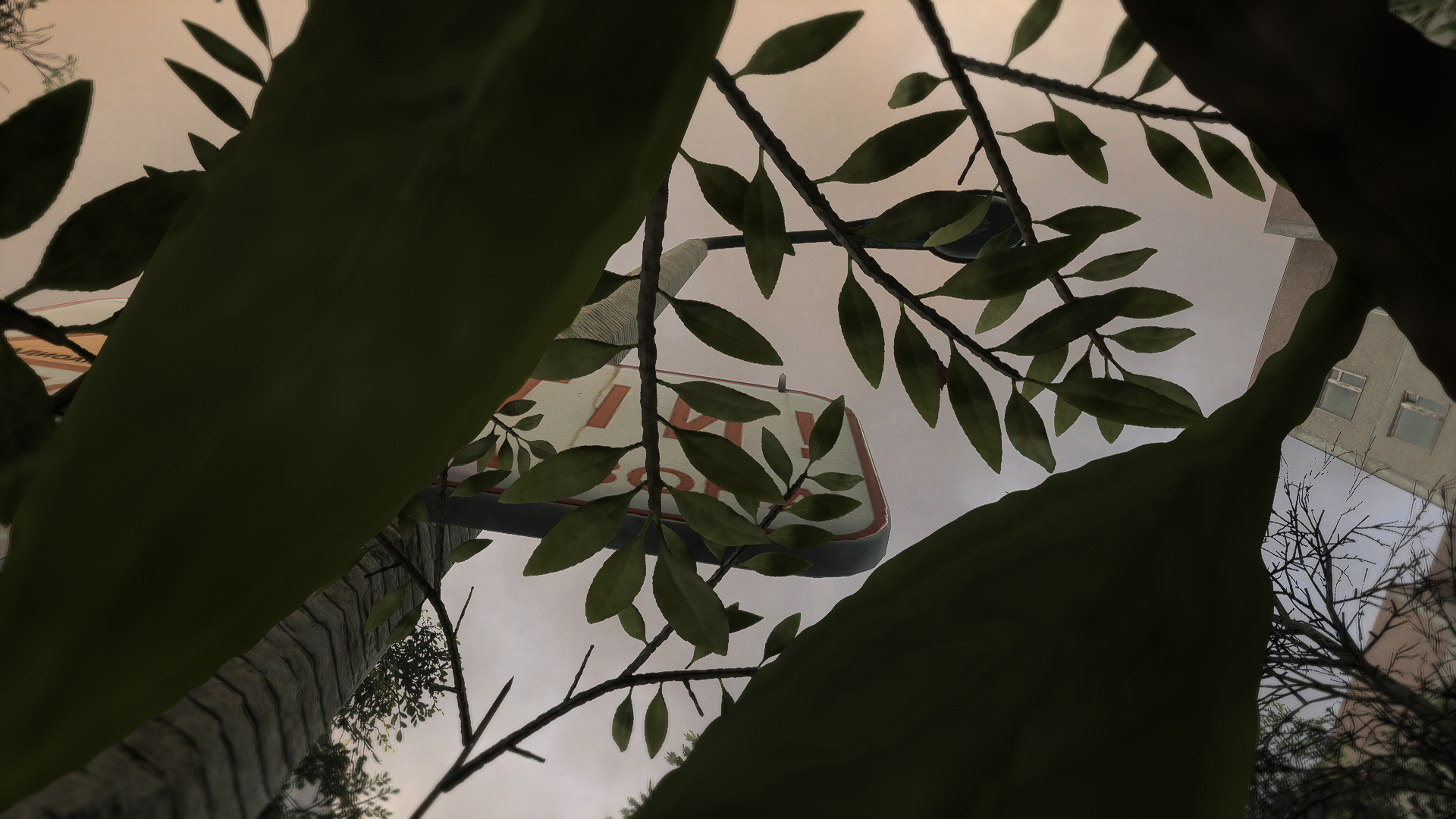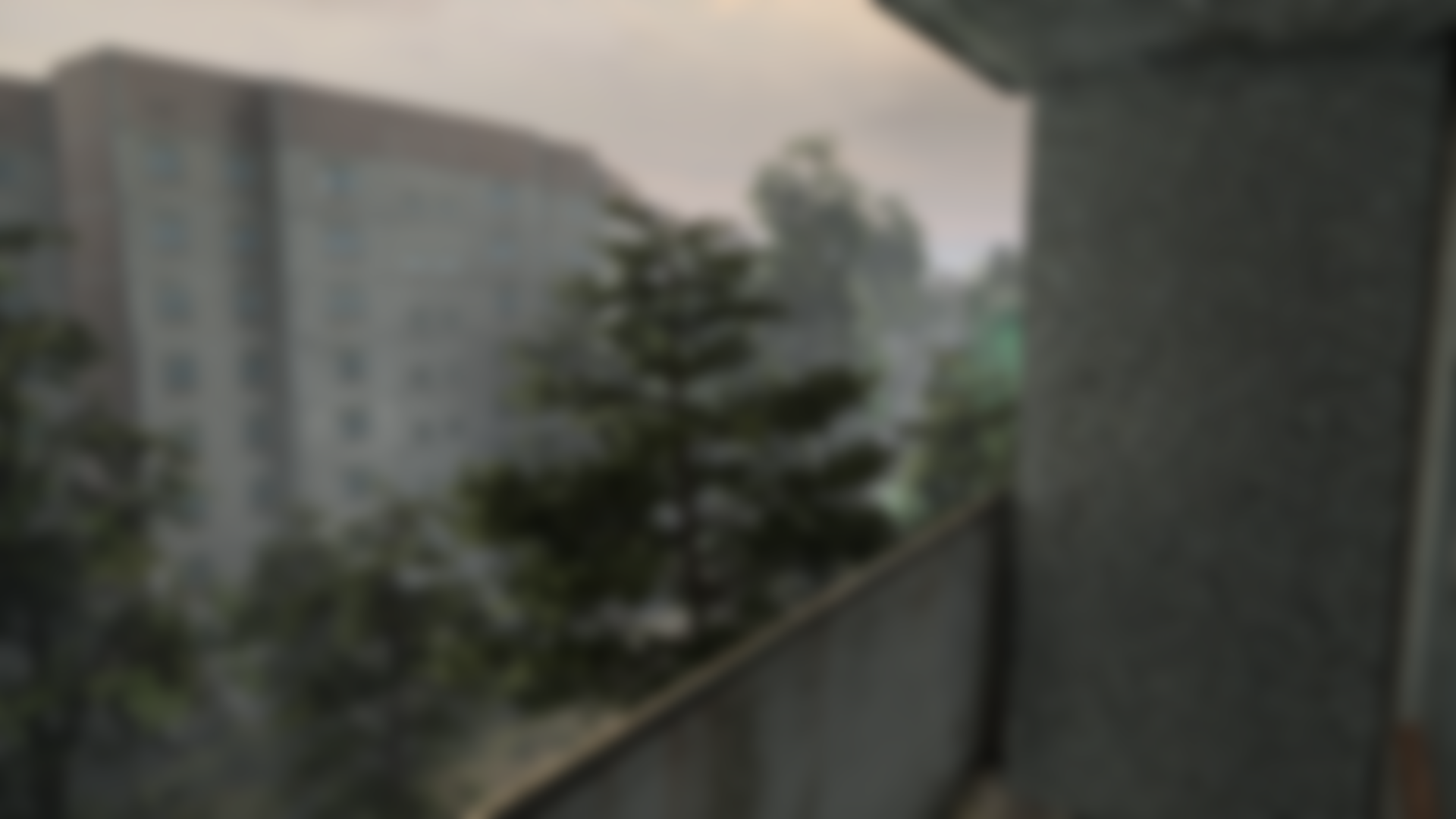In either case, missions play out in a similar fashion: you skulk through the Zone's knotty vegetation and dilapidated buildings, using your environment analyser to avoid radiation pools and highlight collectible resources. Occasionally, you'll bump into a mutant or a NAR patrol, which you can either sneak around or engage in combat. Once you complete your main objective, you can either continue exploring, or exfiltrate using Igor's portal device.
Exploration in Chernobylite's early hours is tense and exhilarating. The Zone is at once beautiful and dreadful, and the game squeezes an impressive amount of variety out of each location. Red Forest is a sprawling expanse of woodland interspersed with soviet infrastructure like rail-tracks and hidden bunkers, while the Moscow Eye is a mixed rural and urban landscape overlooked by the vast Duga Radar Array, the source of so much Chernobyl folklore. My favourite area of the game is probably Pripyat Port, at the centre of which stands the rubble-strewn Pripyat Hospital, its rooms and hallways echoing faintly with the sounds of daily life prior to the disaster.
These five zones also evolve over time. Radiation pools expand. NAR soldiers arrive better equipped. Tempestuous "Chenobylite storms" grow more intense. Mutants become more common and diverse, with new types introduced such as the fearsome, portal-hopping Shadow. In the game's latter half, you draw the ire of the "Black Stalker", a dynamically appearing boss who randomly rocks up to shoot you with a big green laser gun and eat all your ammo.
It's from these elements where Chernobylites emergent play derives. While approaching an objective at the Moscow Eye with a Chernobylite storm broiling overhead, I snuck through a tangle of NAR guards and was about to quietly dispatch one, when the Black Stalker stepped through a portal right beside me. Chaos ensued as the alarm was raised, and I legged it into a nearby patch of woodland, with bullets and Chernobylite-infused lightning strikes peppering the ground around me.
In general, Chernobylite's maps lack the dynamism brought by S.T.A.L.K.E.R's A-Life system. But it compensates for this with other, neat little mechanics that enhance roleplaying. For example, killing enemies damages your psyche, essentially a second health bar. Psyche can be restored by drinking vodka, which means fights often end with you washing away the trauma in long draughts of Ukrainian moonshine.
There's greatness in Chernobylite, but finding it requires some patience. The maps are smaller than they initially appear, which means you spend a lot of time exploring the same places. The evolving Zone is designed to mitigate this, but the changes happen too gradually. The result is that the mid-game missions can be repetitive and uneventful, with you trawling the same handful of locations for resources before slipping through a light sprinkling of NAR patrols to complete the objective.
The environments are based on 3D scans of Chernobyl and its surroundings. The results are wonderful.
The base management attempts to make up for this, but as is the case in-mission, the systemic complexity doesn't always pay off in the way you would hope. Successfully building and managing your base requires you to juggle several different base conditions, such as power, comfort, and radiation protection. Building a new piece of equipment, such as a weapons crafting table, will increase power consumption and reduce comfort, which can affect your companion's attitudes toward you.
The trouble is, beyond providing new equipment, the effects of building your base are all abstract. While building beds or chairs or TVs will increase the comfort stat, you never see your companions use them. They don't alter the base's feel or function in any meaningful way. Character relationships suffer from a similar issue. Both how you approach base management and the choices you make in the story affect your companions' opinion of you, but this change in attitude doesn't manifest in their demeanour around the base or their general conversation. The result is that base-building, while mechanically involved, is also rather staid.
That said, the story is interesting, albeit convoluted. The script is mostly well- written and the characters enjoyably drawn. Your motley crew includes Mikhail, a loose-cannon Stalker who tells tall tales and swears like a sailor, and Tarkan, an eccentric, rodent obsessed Zone native who refers to you as "mousey" and believes he's locked in an epic struggle with an entity he calls the "Rat King".
Also, while you may become over-familiar with the environments, the missions themselves are diverse in concept and objective, while your decisions in-mission can have some pretty impressive consequences. An early mission lets you choose to blow up the Duga Radar Array, doing which alters the layout of the Moscow Eye. Later on, choosing not to burn some documents in one mission resulted in Igor being captured by NAR several missions later, prompting an additional mission where you must escape the NAR's prison.
It was little surprises like this that kept me invested in Chernobylite whenever my attention began to drift. I'd endure a couple of survivalist milk runs and start eyeing the quit button, but then I'd have to pull a companion out of a building filled with hallucinogenic gases, or be forced into a protracted fight with the NAR because I'd stumbled into a radiation hotspot while trying to sneak past. It's not a thrill-a-minute game, and the structure is as much a hindrance as it is a help. But when everything comes together, Chernobylite clicks like a dosimeter near the elephant's foot.








































